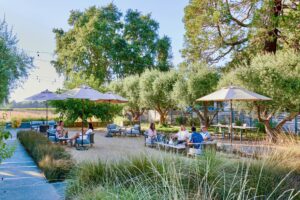
We've put together the ultimate tasting guide with over 120 recommendations, from off-the-beaten-path spots to foodie favorites to wineries with stunning views.
The post The Ultimate Guide to Sonoma Tasting Rooms appeared first on Sonoma Magazine.
]]>
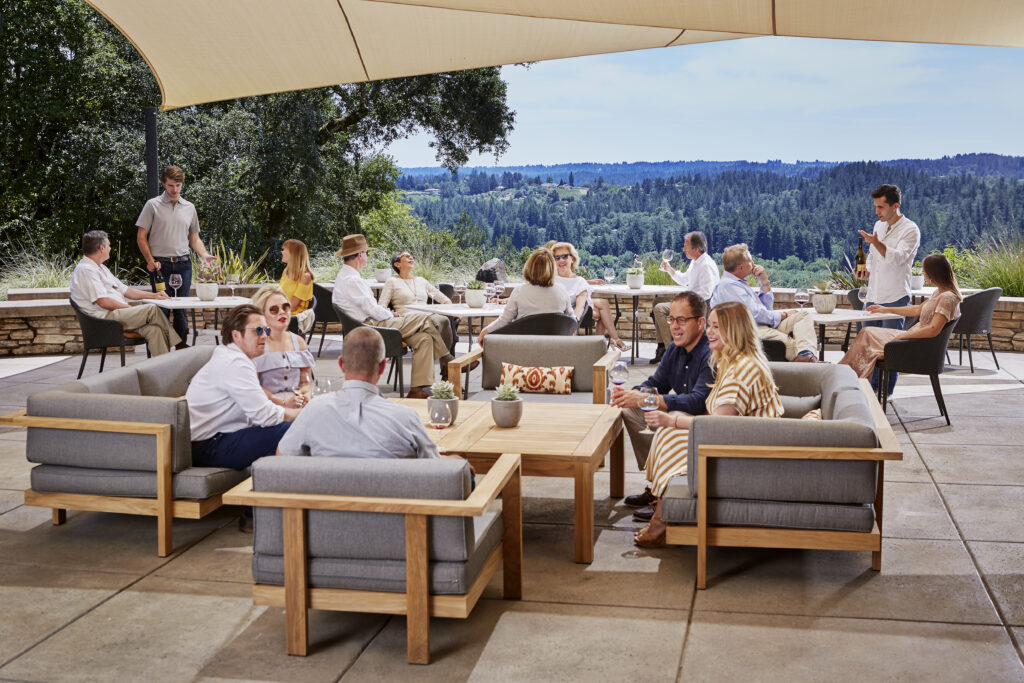
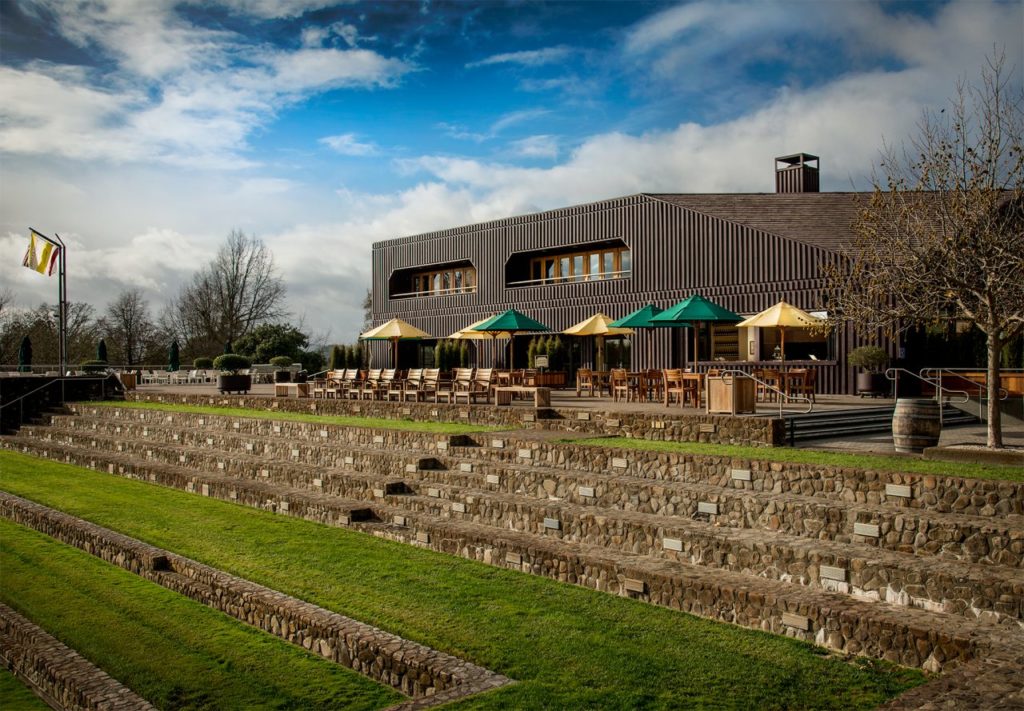
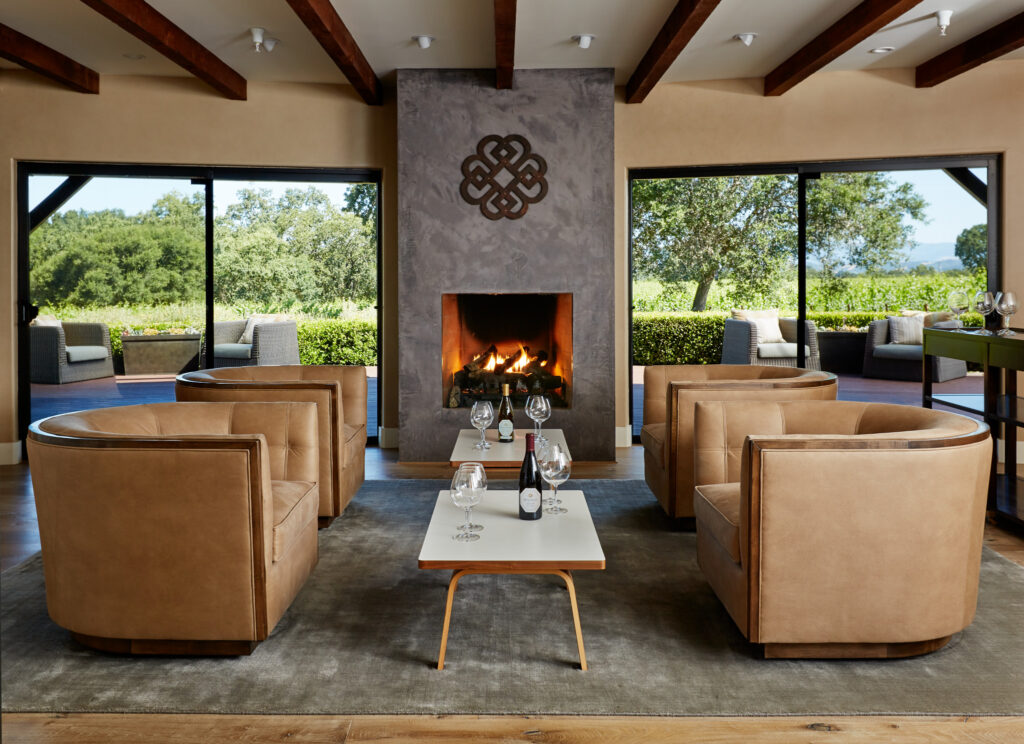
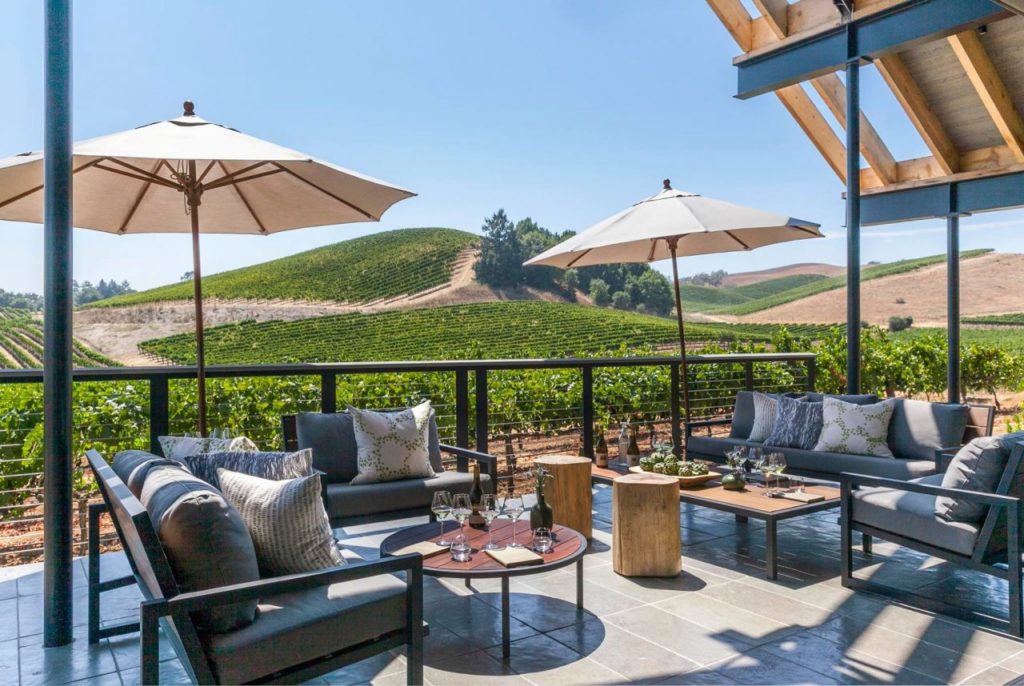



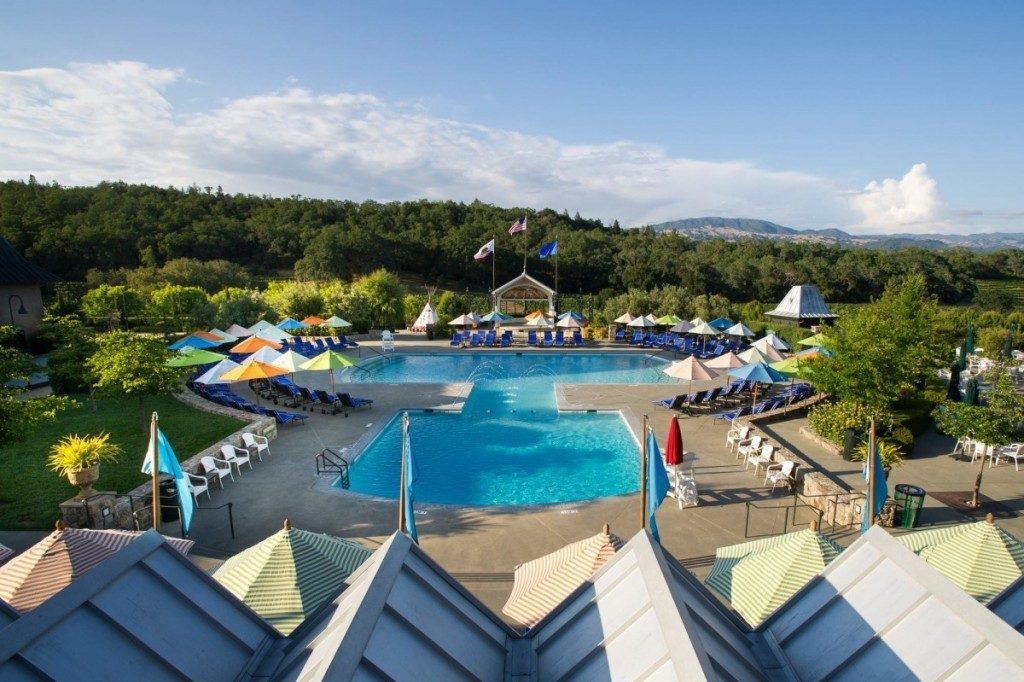
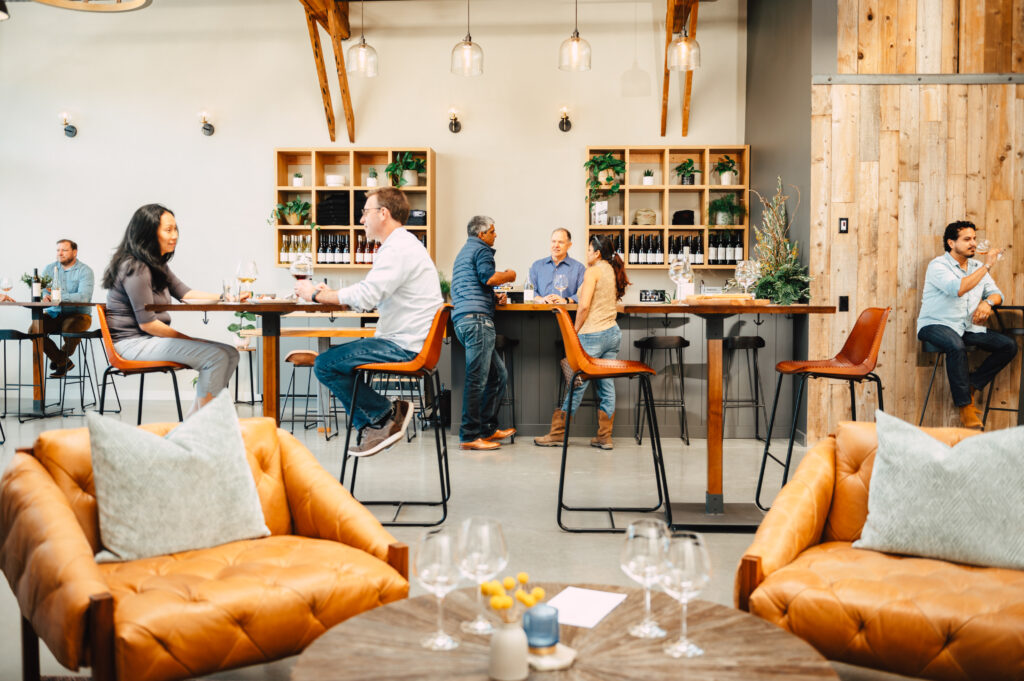

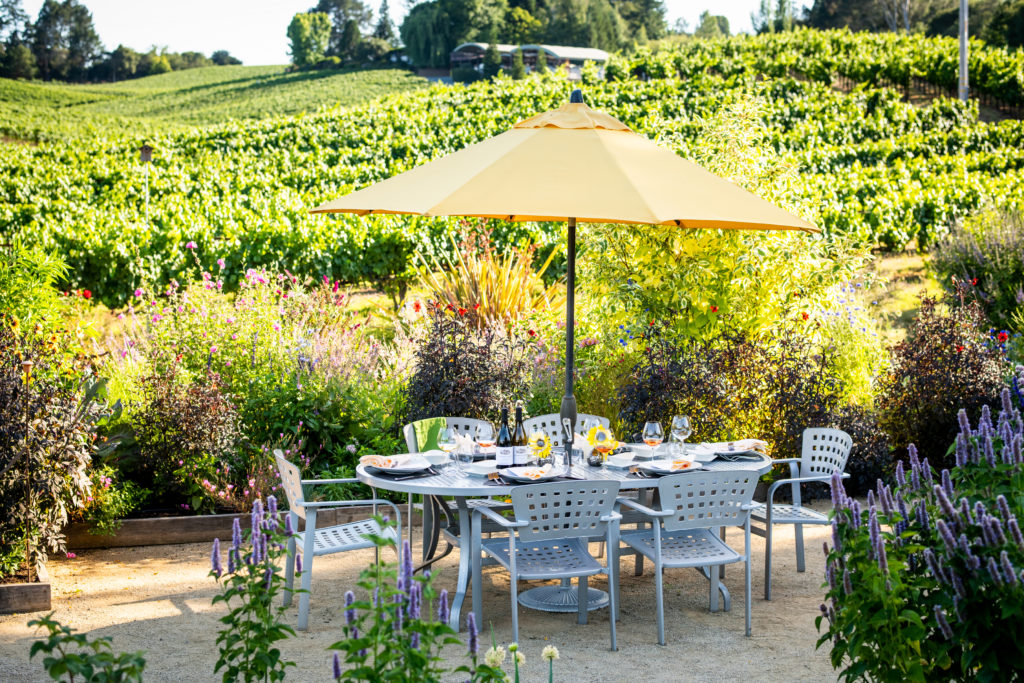
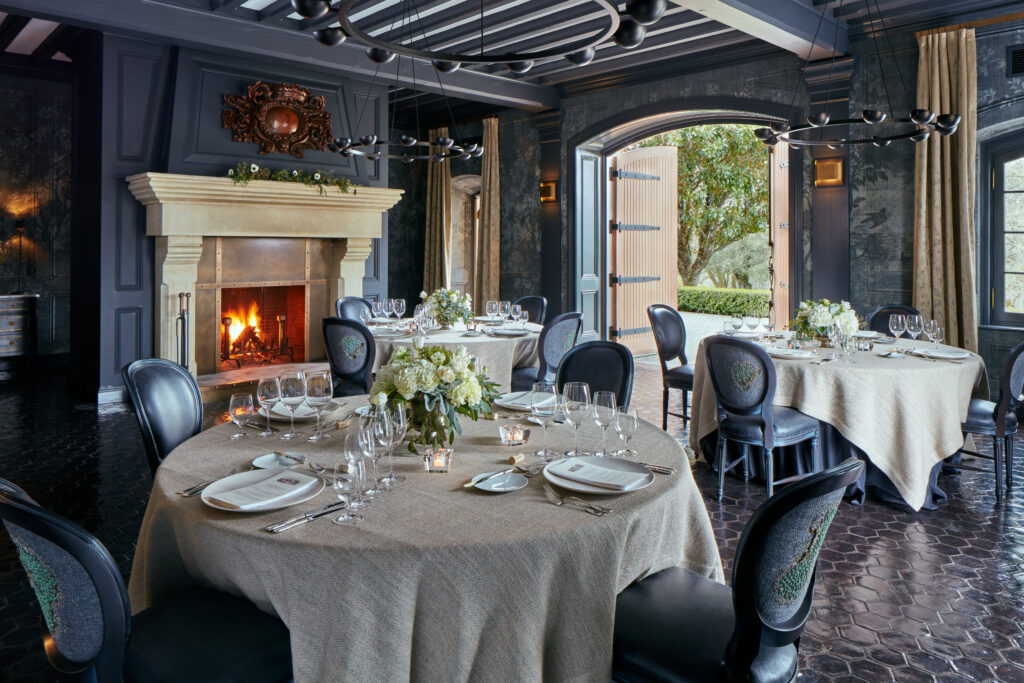


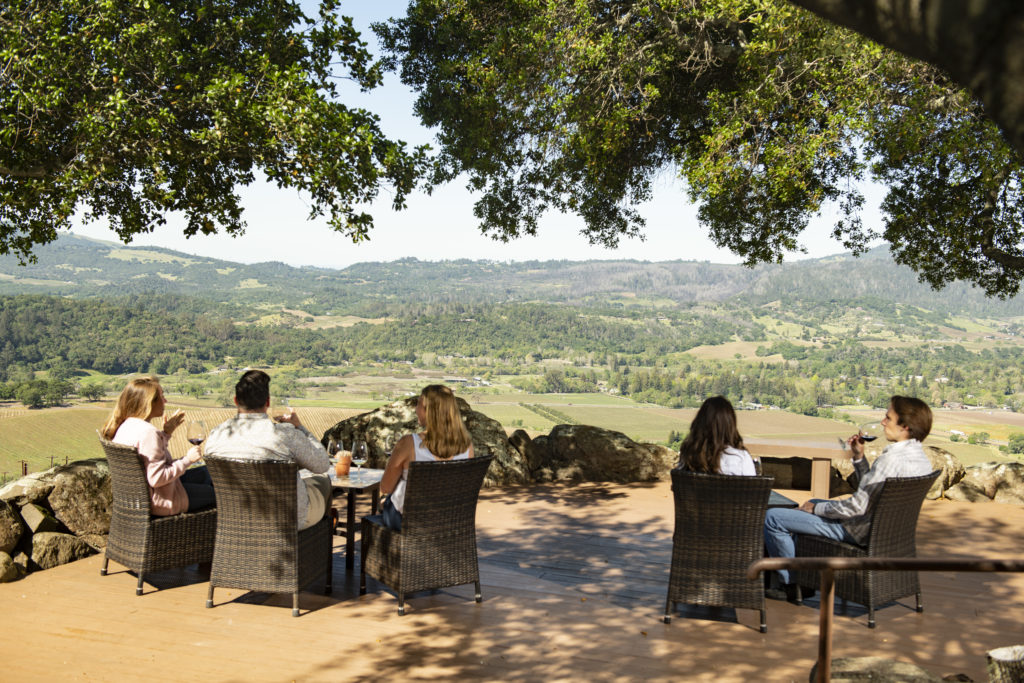
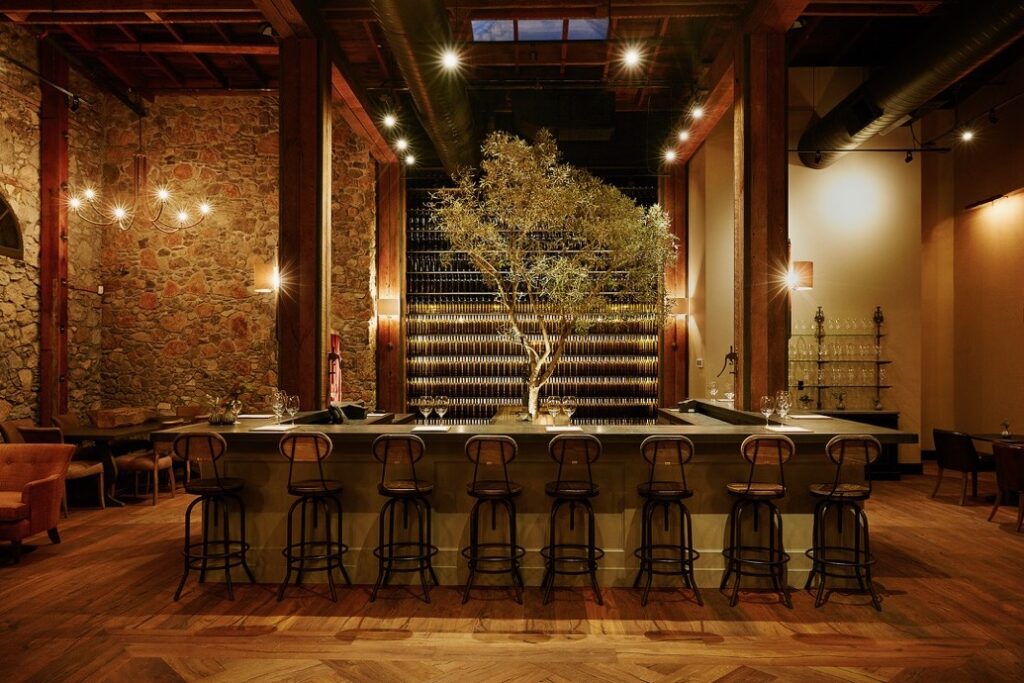
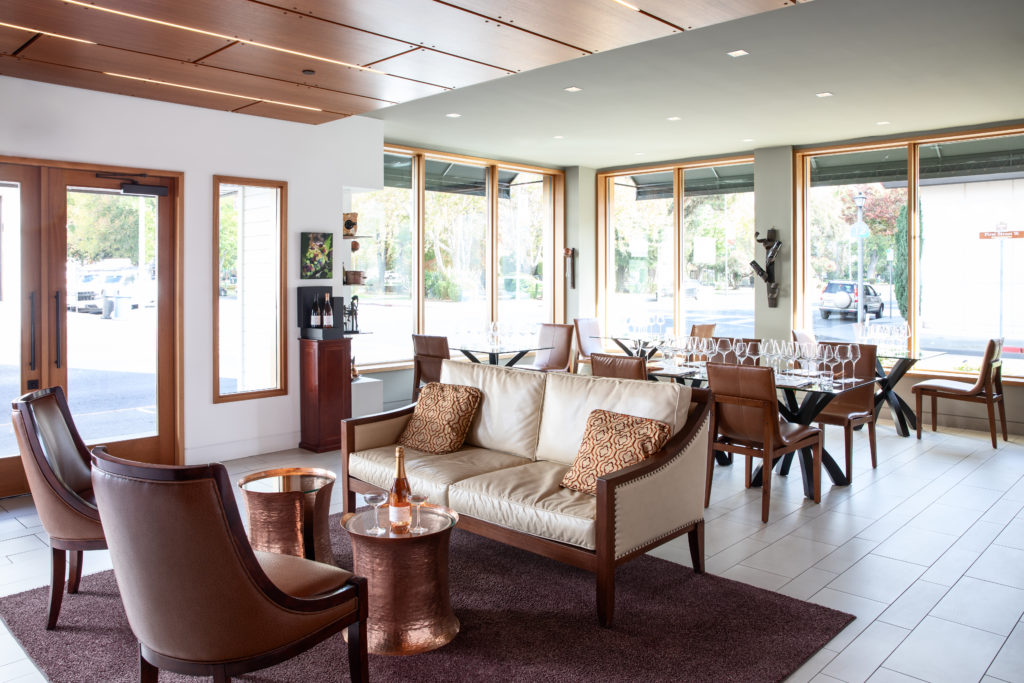
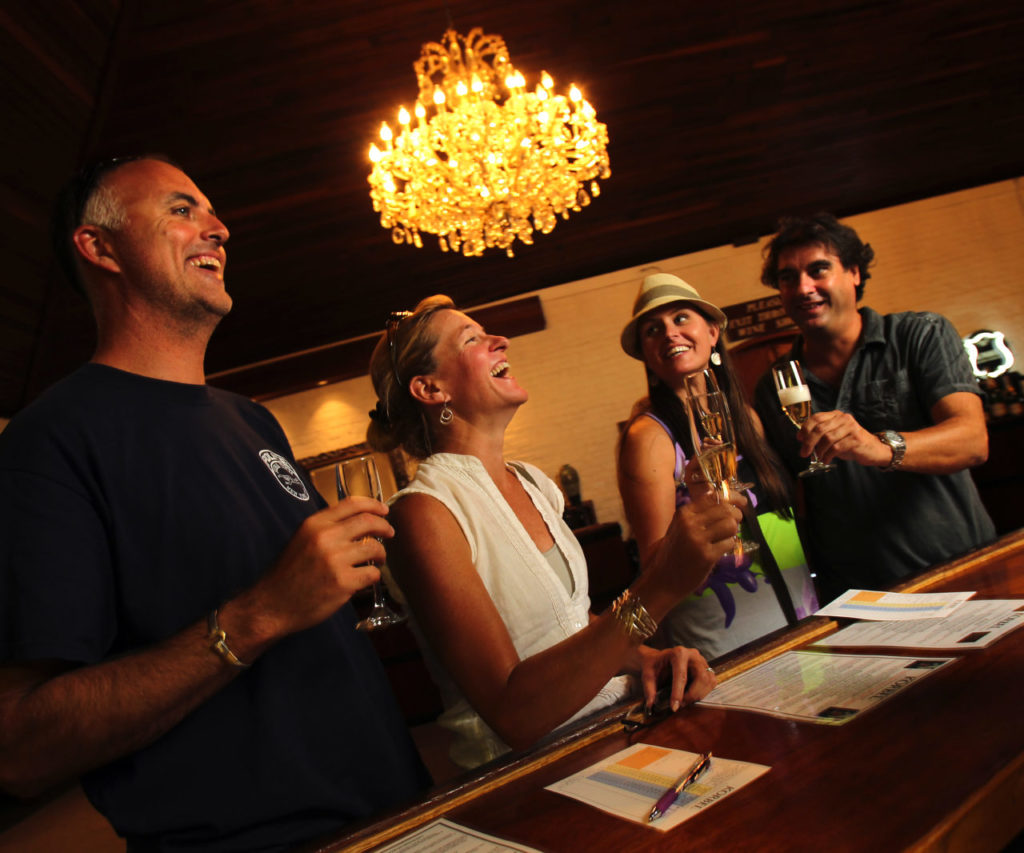


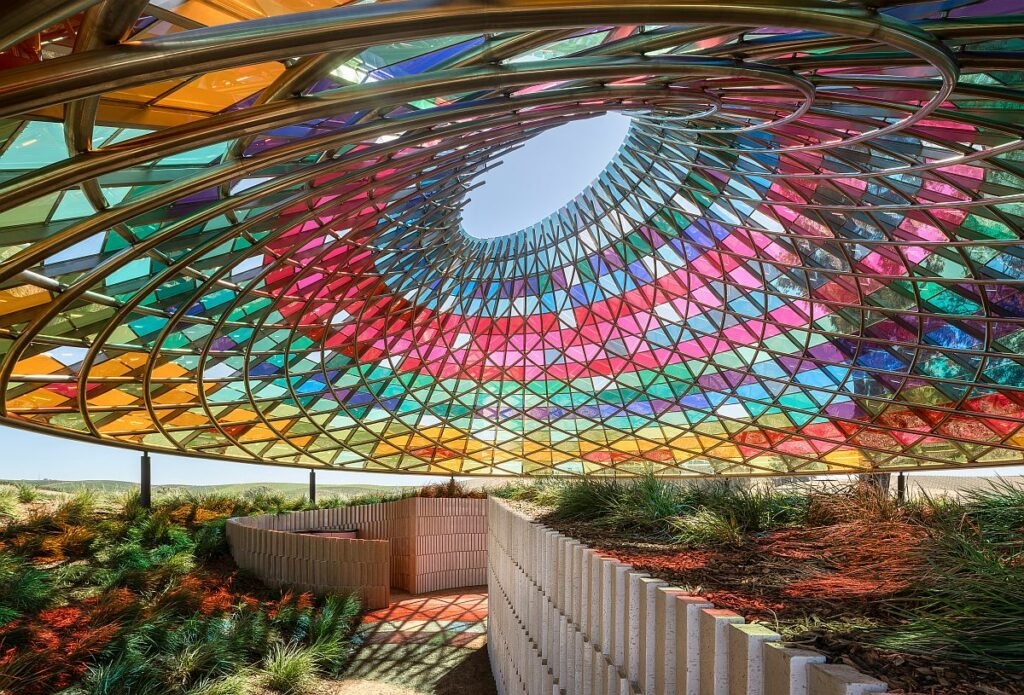

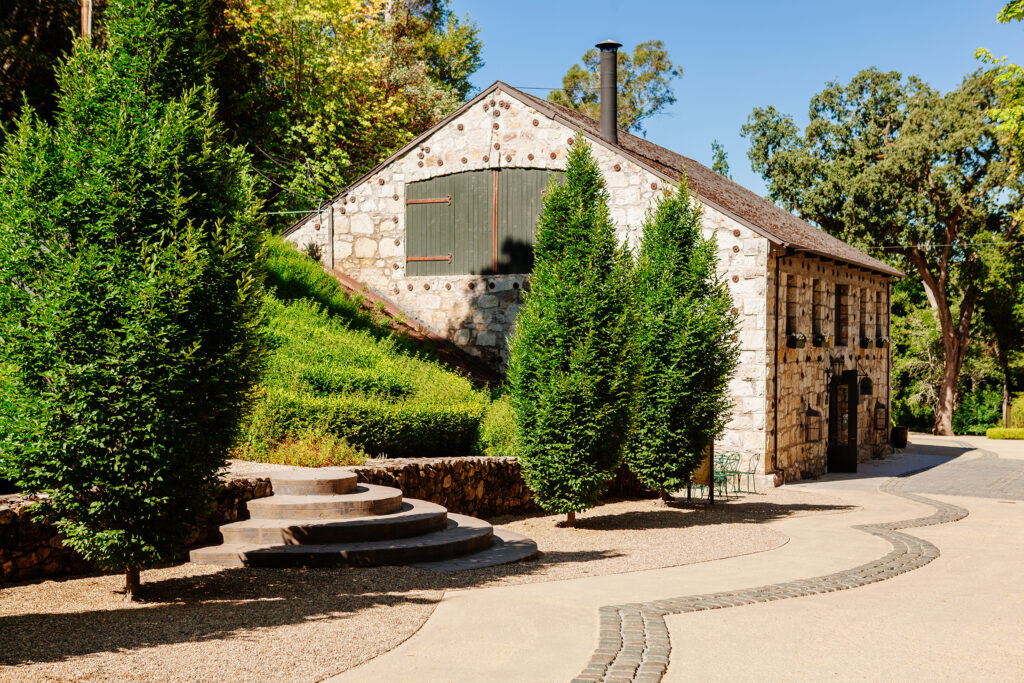
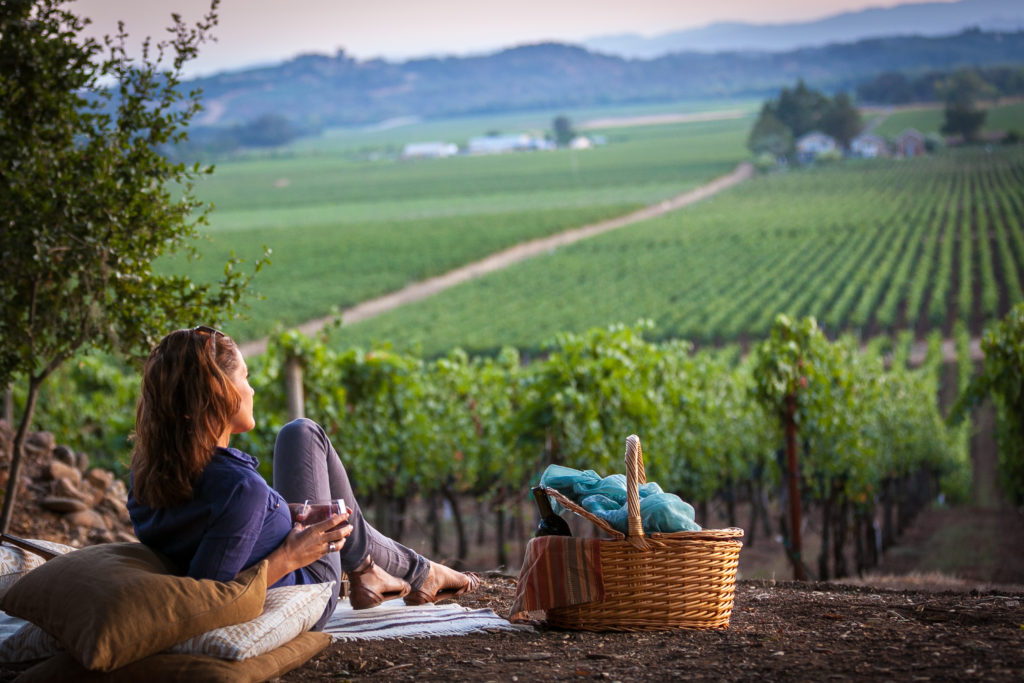
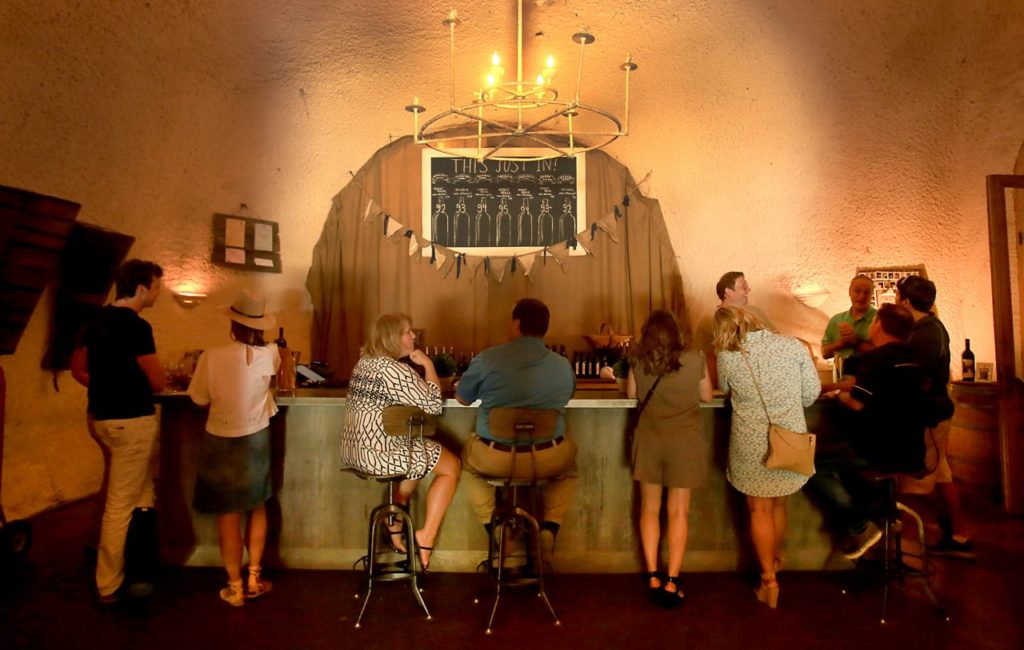

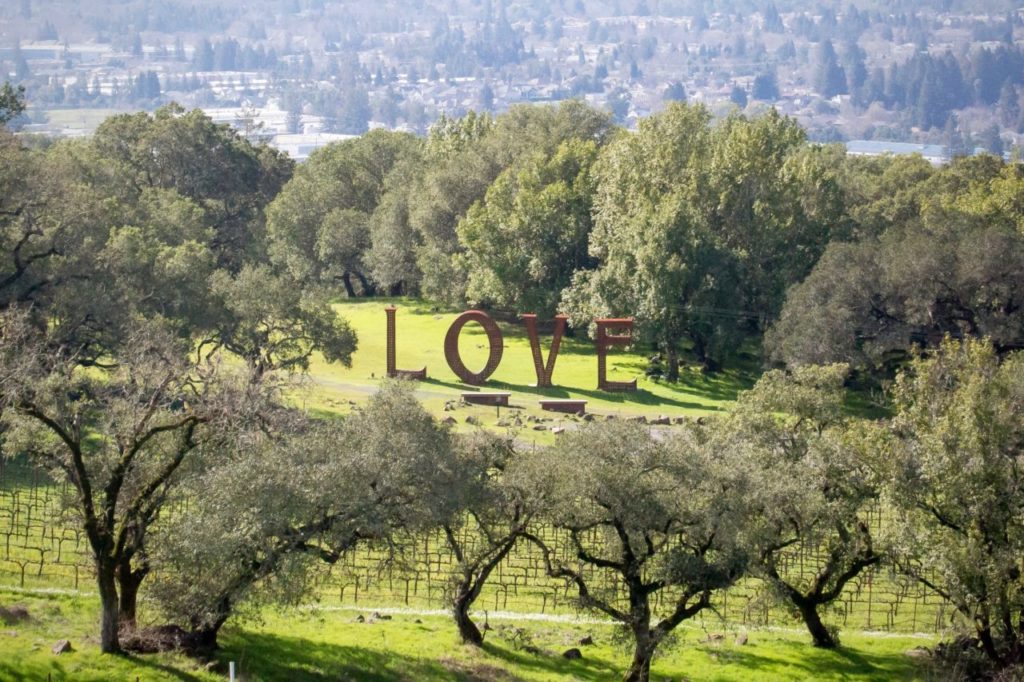
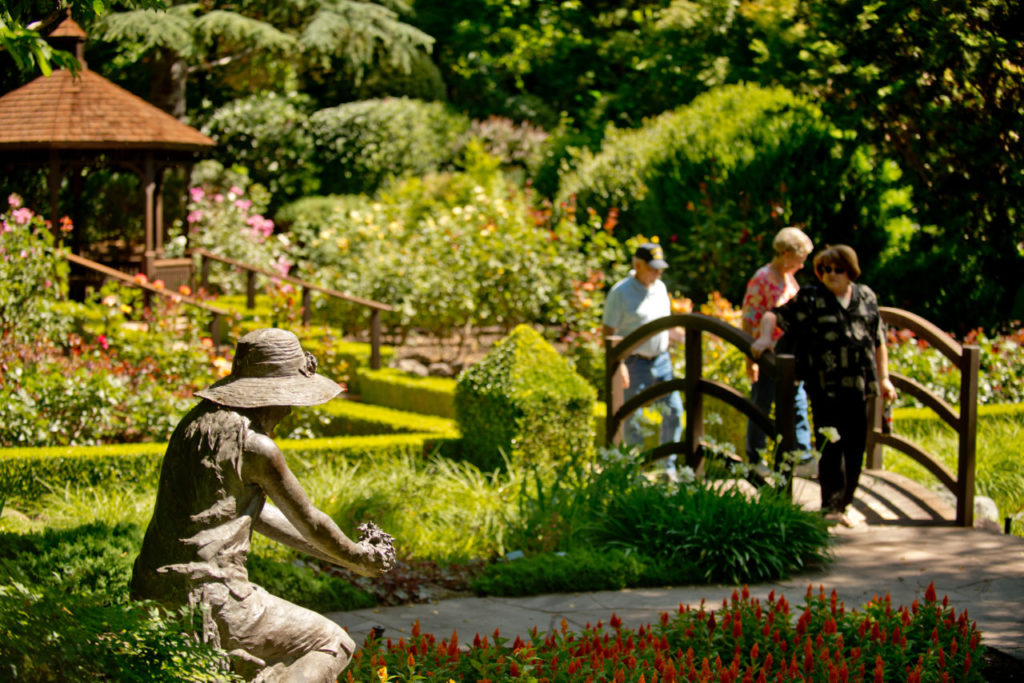
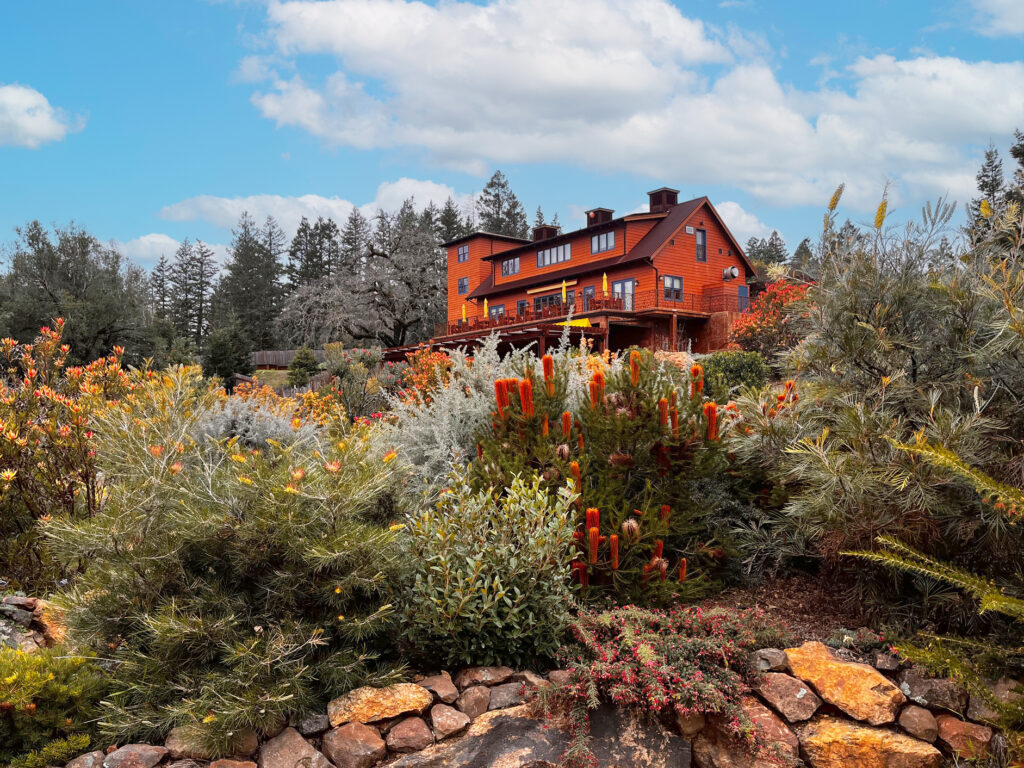
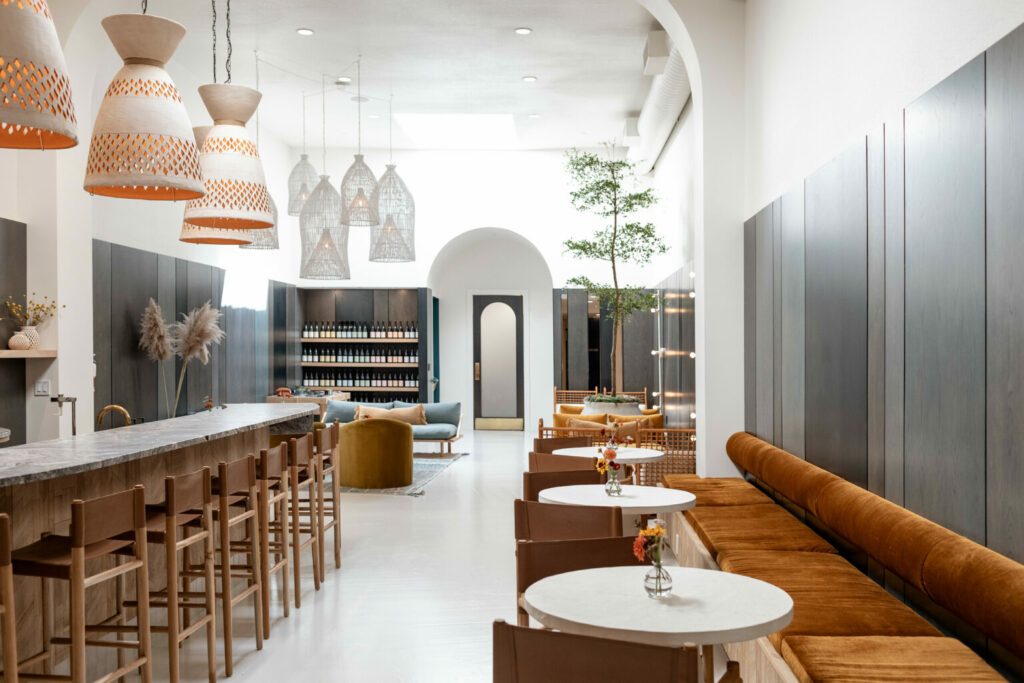
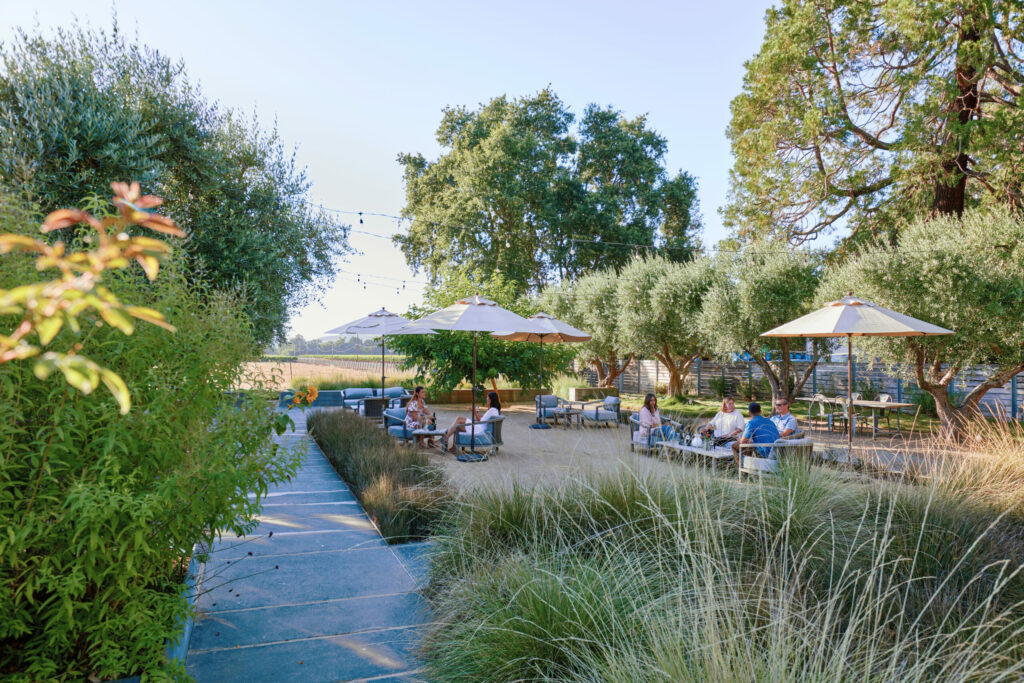
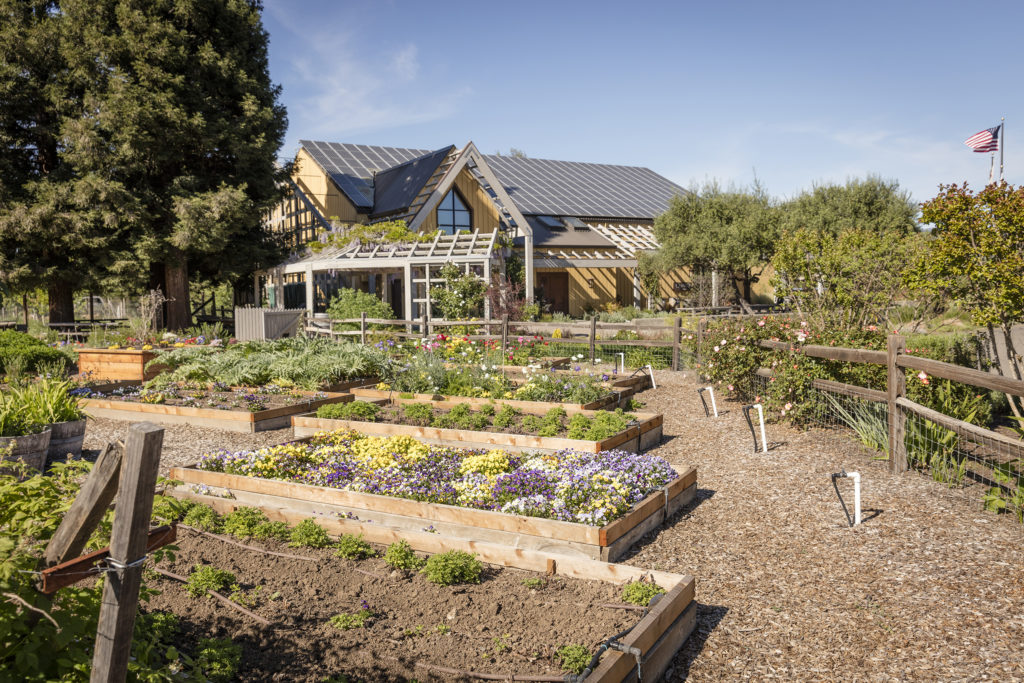


What kind of wine taster are you? Are you looking to revel in gorgeous gardens, or do you relish a fine coastal Pinot Noir? Is it all about classic Sonoma history, or are you seeking family producers a bit off the beaten track?
Whatever the reason, we’ve put together a Sonoma tasting guide to end all tasting guides, with over 120 recommendations — and right now is the perfect time to head out to explore the best wineries in Sonoma.
Click through the above gallery for a peek at a few of our favorite places to taste wine in Sonoma County.
“I Want to Support Smaller, Family-Owned Wineries — Ones a Bit off the Beaten Path.”
Carol Shelton Wines: Set in an industrial district of Santa Rosa, this tiny tasting room can barely contain all the ribbons and awards that Shelton — known as the “Queen of Zin” — has won. $20. 3354-B Coffey Lane, Santa Rosa. 707-575-3441, carolshelton.com
Frick Winery: Bill Frick has been a one-man show for 49 years. Join him in the adorable Frick House for small-lot wines made from Rhône varieties grown on his 7.7-acre ranch. Free. 23072 Walling Road, Geyserville. 707-484-3950, frickwinery.com
Enriquez Estate Winery: Cecilia Enriquez and her parents, Ana and Eduardo, produce about 1,000 cases a year of Pinot Noir and Tempranillo on the family’s 8.5-acre vineyard. From $50. 5960 Eastside Road, Forestville. 707347-9719, enriquezwines.com
Inman Family Wines: Try Kathleen Inman’s balanced, food-friendly Pinot Noir, Chardonnay and sparklers at this welcoming spot set in an organic vineyard. $30. 3900 Piner Road, Santa Rosa. 707-293-9576. inmanfamilywines.com
Singer Wine at Baker Lane Estate: Stephen Singer ran the wine program at Berkeley’s Chez Panisse with his former spouse, Alice Waters. He welcomes a few guests each week for a light meal and tasting of biodynamically farmed Syrah and Viognier. From $85. 7361 Baker Lane, Sebastopol. singer.wine
Bruliam Wines: Physician-turned-winemaker Kerith Overstreet makes just 1,000 cases — mainly single-vineyard Pinot Noir — each year. 1200 American Way, Windsor. bruliamwines.com
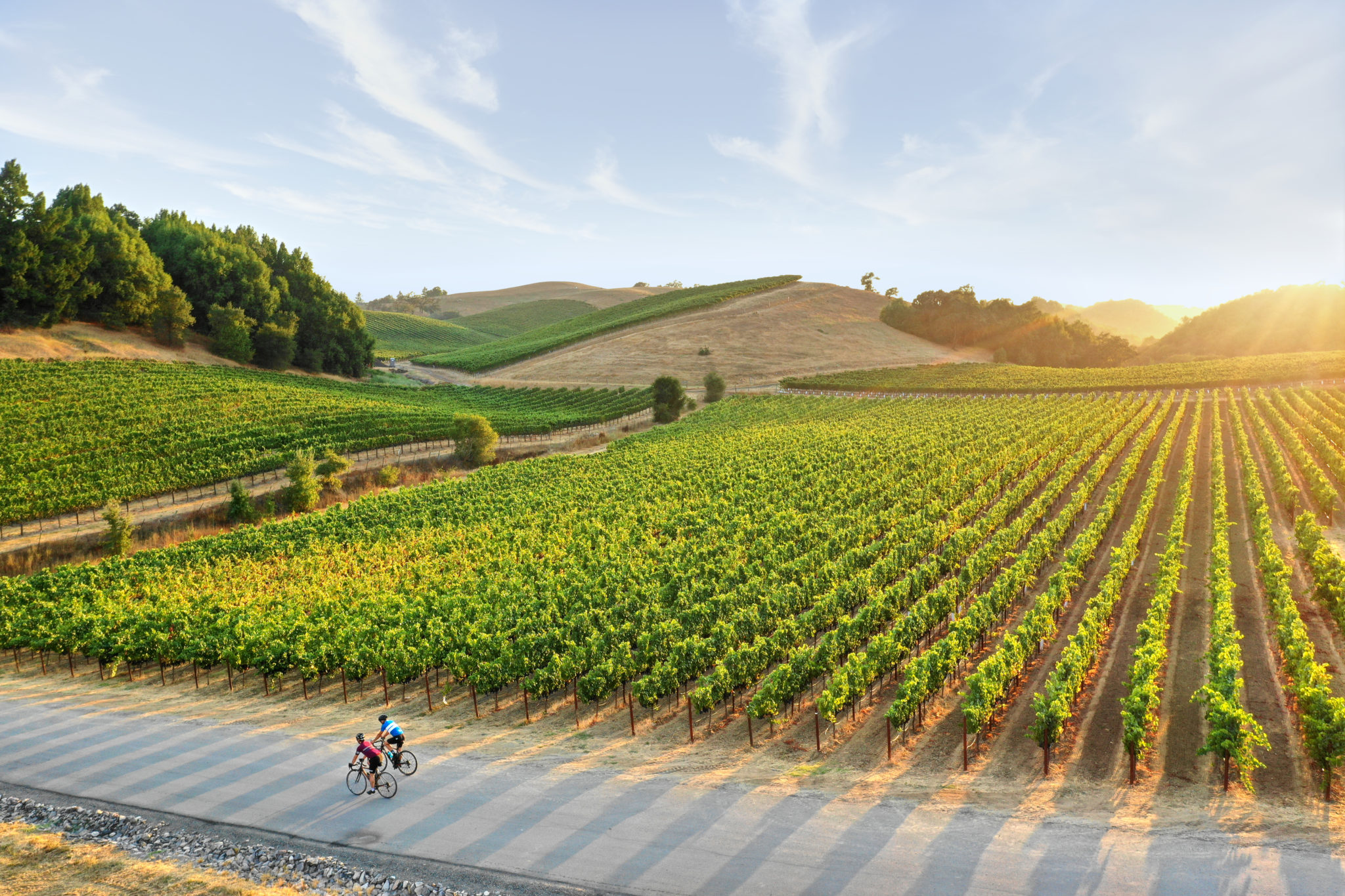
AVA Spotlight: Russian River Valley
Home to some of Sonoma’s oldest, most-prized vineyards, the Russian River Valley is widely recognized for premium Pinot Noir and Chardonnay. The region is known for generously sunny days and cool, foggy nights, but given the diverse sub-regions, other varietals thrive here, too, like Zinfandel, Merlot and even cool-climate Syrah.
Favorite destinations include Gary Farrell Vineyards & Winery, where winemaker Theresa Heredia has been creating her own legacy of award-winning Pinot. Fellow pioneering labels like Merry Edwards, Williams Selyem, Rochioli and MacRostie Winery & Vineyards helped establish the Russian River Valley as an epicenter of premium Pinot Noir.
Sonoma-Cutrer and Balletto are ever-popular tasting spots and a crackling fireplace beckons at Benovia Winery.
The Dutton family of Dutton Estate have been farming in the Russian River region for six generations. And David Ramey of Ramey Wine Cellars is considered among the state’s most innovative winemakers. Tastings here overlook the production facility, for a glimpse of the magic in action.
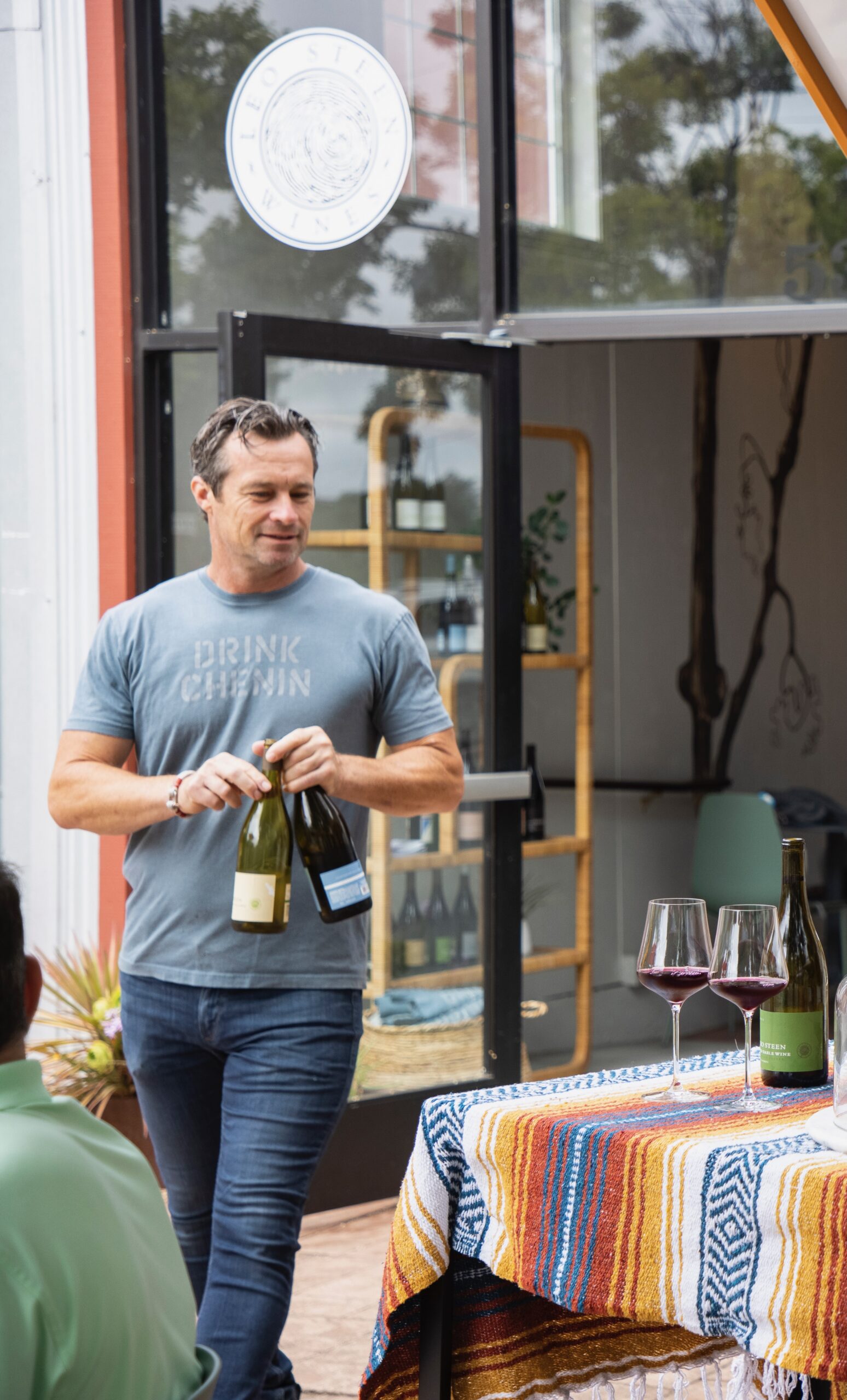
Taste With a Pro: Leo Hansen, Leo Steen Wines
The Drink (53 Front St., Healdsburg), located in the 1800s-era Old Roma Station building, is a shared tasting room for two standout labels: Hansen’s Leo Steen Wines (leosteenwines.com) and his buddy Mike Lucia’s Rootdown Wine Cellars (rootdownwine.com).
“The space was built as a co-op for Italian immigrants to make wine, and later became a fruit-drying facility during Prohibition,” explains Hansen.
His pick is the vibrant, green apple-kissed Saini Farms Dry Creek Valley Chenin Blanc, from one of the oldest planted Chenin Blanc vineyards in Sonoma County. “I love creating food-friendly, low-alcohol wine from this sleek, silky variety,” he says.
And Hansen loves meeting his guests — he leads tastings of six wines seven days a week ($30). After tasting at The Drink, Hansen likes to recommend that folks walk just a few blocks along the Russian River to Arnot-Roberts (arnotroberts.com). “They make fantastic wines with fun varietals like Ribolla Gialla, Trousseau and Gamay Noir.”
3 Great Kid-Friendly Wineries
Belden Barns, Santa Rosa: Scavenger hunts, explorer backpacks to borrow and a special wishing tree. beldenbarns.com
Preston of Dry Creek, Healdsburg: Ultra laid-back, with rambling gardens to explore, kitties to pet and hearth-baked sourdough bread. prestonofdrycreek.com
Cline Cellars, Sonoma: A historic property with sprawling gardens. Picnicking is welcome, and there are cute donkeys, too. Be sure to ask for a coloring map of their property to keep the kiddos entertained. clinecellars.com
No Car Needed: Petaluma
Petaluma has a Norman Rockwell feel, but locals know aspects of the town are just as edgy as San Francisco, just 35 miles to the south. Several excellent tasting rooms beckon here.
Barber Cellars (barbercellars.com), in the Art Deco-style Hotel Petaluma, features standout Zinfandel, classic ’80s arcade games, and an interesting food pairing consisting of a Ukrainian-style zakuski platter of cheeses, salads and savory pastries.
The future Adobe Road Winery, from former race car driver Kevin Buckler (adoberoadwines.com) is under construction along the Petaluma waterfront. For now, Adobe Road tastings are held in the historic Great Petaluma Mill.
And nearby Brooks Note Winery & Tasting Room (brooksnotewinery.com) is in a 1920s-era building. The flagship here is Pinot, but don’t miss the food-friendly Blaufrankisch, paired with local cheese.
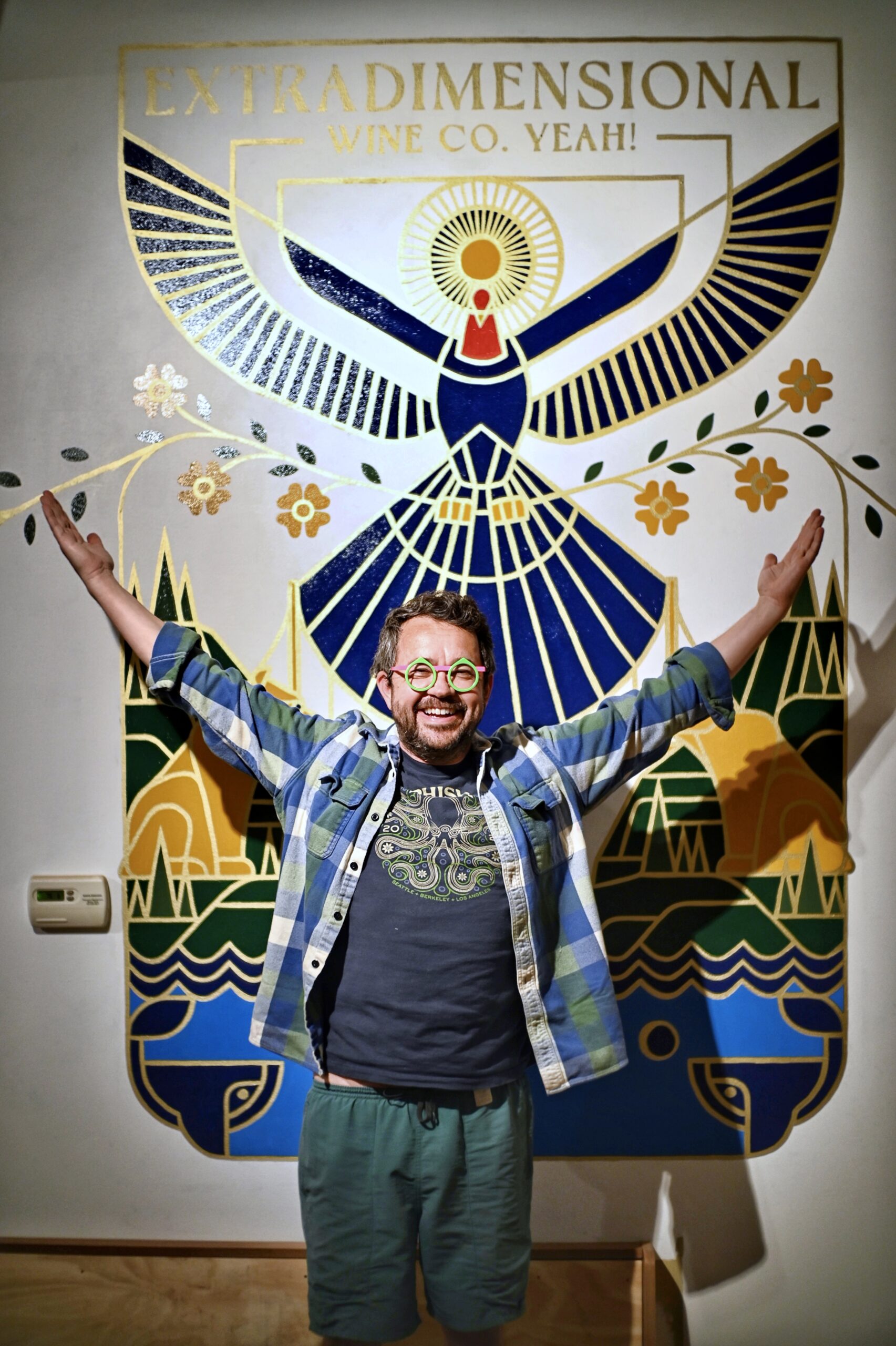
From award-winning winemaker Hardy Wallace, the most exuberant man in all of Wine Country, the Sonoma tasting room for Extradimensional Wine Co. Yeah! is a kaleidoscope of creativity and artistic intention. winecoyeah.com
‘‘Shifting the Lens” at sparkling wine specialist J Vineyards & Winery invites chefs from diverse backgrounds to take over the menu at their popular Bubble Room. In May, the honor went to James Beard semifinalist chef Michael Reed, of Poppy & Seed restaurant. jwine.com
2 Great Spots for Live Music
Muscardini Cellars, Kenwood: Italian varietals and live music every weekend May to October, with Simmer Down Saturdays. muscardinicellars.com
Rodney Strong Vineyards, Healdsburg: Beloved for their summer concert series, with major artists like Chris Isaak and Blues Traveler. Reserve a seat or bring a blanket and sit on the green. rodneystrong.com
“I’m a Total Foodie. Where Can I Have a Delicious Meal With My Tasting?”
Bricoleur Vineyards: The food program here is so meticulously handled that it takes three chefs to run it, including famed chef Charlie Palmer. The Rooted tasting ($150) impresses with a seasonal six-course meal with artistic dishes like handmade sweet shrimp siu mai dumplings with lemongrass and ginger. 7394 Starr Road, Windsor. 707-857-5700, bricoleurvineyards.com
Kivelstadt Cellars: Wine tasting at Kivelstadt’s bucolic tasting room in Sonoma gives you the opportunity to sample the exceptional food from Bloom Carneros restaurant. 22900 Broadway, Sonoma. 707-938-7001, kivelstadtcellars.com
Lynmar Estate: Chef David Frakes’ expensive-but-worth-it Collectors Lunch Pairing ($250) includes an exquisite, multi-course meal with dishes such as chile-Persian lime dusted watermelon with blistered stone fruit slaw. 3909 Frei Road, Sebastopol. 707-829-3374, lynmarestate.com
Jordan Vineyard & Winery: In April 2023, Jesse Mallgren left The Madrona, the Michelin-star restaurant he had run for nearly 25 years, and took his toque over to the glamorous Jordan, amping up an already upscale program. 1474 Alexander Valley Road, Healdsburg. 707-431-5250, jordanwinery.com
Paul Hobbs Winery: Chef Timothy Kaulfers joined this luxury spot in April 2023 to lead the Vineyard Designate tasting experience ($250), offering six rare wines alongside delectable dishes like housemade chicken sausage with an onion and fennel soubise. 3355 Gravenstein Hwy. N., Sebastopol. 707-824-9879, paulhobbswinery.com
Mayo Family Winery: Chef John Locher serves a delightfully inventive, meal with small-batch reserve wines in the Reserve Room ($90). 13101 Arnold Drive, Glen Ellen. 707-833-5504, mayofamilywinery.com
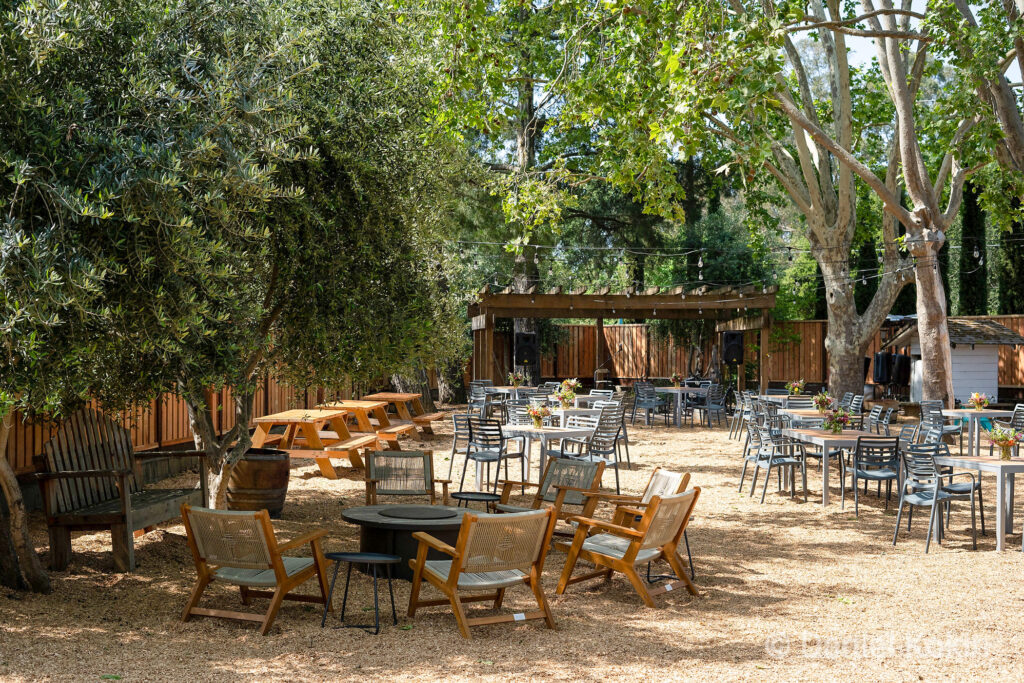
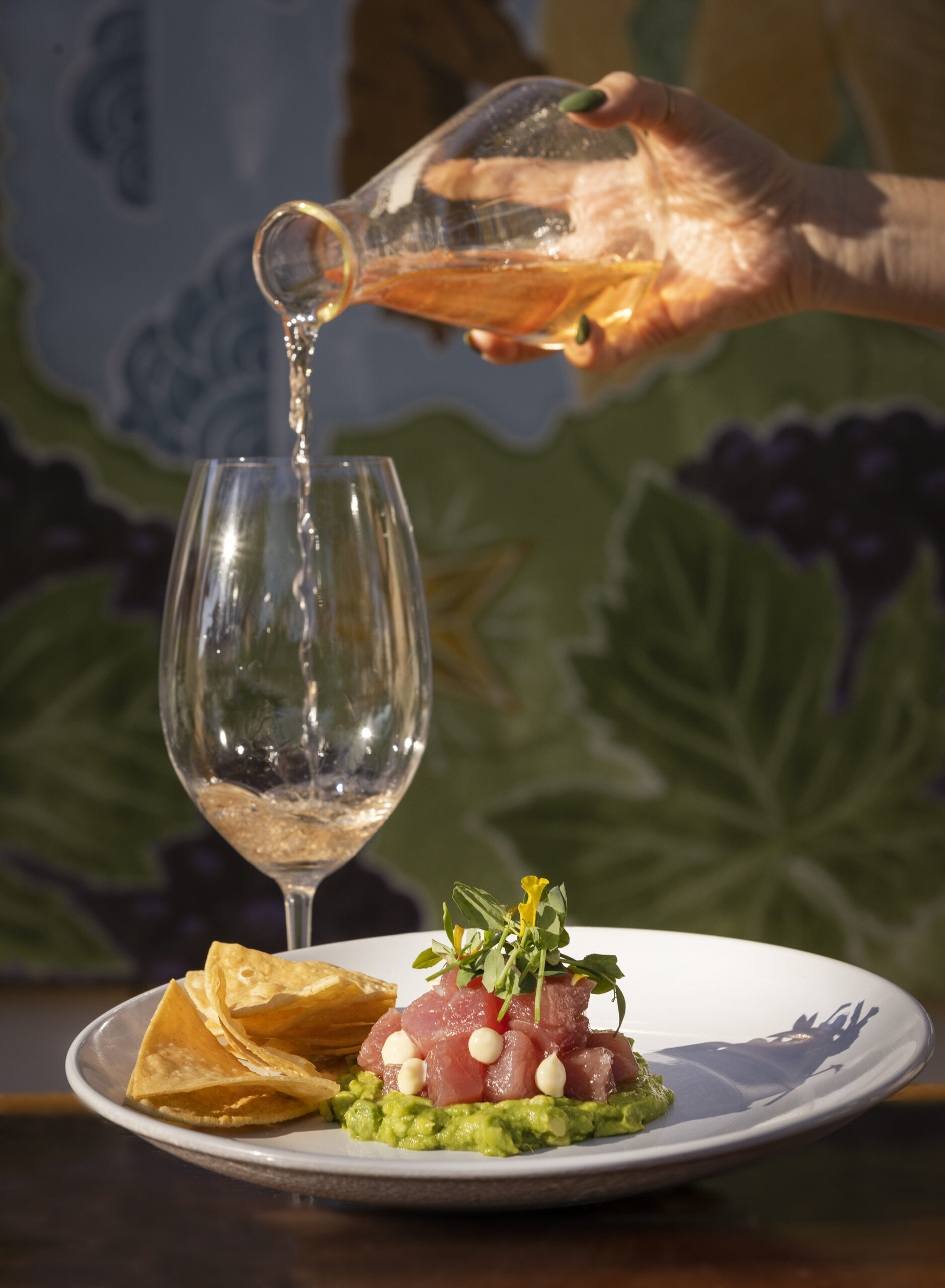
AVA Spotlight: Sonoma Valley
Stretched along the Mayacamas Mountains to the east and the Sonoma Mountains to the west, this beautiful area encompasses five distinct appellations and many microclimates ranging from brilliant sunshine to cool coastal fog. Given the climate, many types of grapes can thrive here.
Visit the 1,850-acre Kunde Family Winery for a mountaintop tasting, Chateau St. Jean for a garden stroll and tasting at the historic 1920s chateau, or VJB Cellars for Italian varietals and wood-fired pizzas on the Tuscan-style piazza.
Arrowood is famous for its warm-climate Cabernet Sauvignon and gracious tastings on its veranda, while Loxton Cellars and Hamilton Family Wines are boutique gems where you can see operations up-close, from grape to glass.
No Car Needed: Downtown Sonoma
Over 20 wineries have tasting rooms around downtown Sonoma’s shady plaza, making it an excellent destination for a day of tasting without the need for a designated driver.
Tom Darling of indie natural wine producer Darling Wines, down a pretty alleyway at the south end of the square, hit a home run with his very first vintage of cool-climate Syrah in 2017, which made the wine list at Thomas Keller’s Bouchon.
Pangloss Cellars (below) is a chic, airy tasting salon for Rhone varietals, with stone walls and wide windows out onto the park. Sosie Wines, right near Darling, makes three sparklers: red, white, and rosé, as well as an interesting Moon Mountain Cabernet Sauvignon.
And Sojourn Cellars is the spot for single-vineyard Pinot Noir from the Petaluma Gap, Russian River and Sonoma Coast.
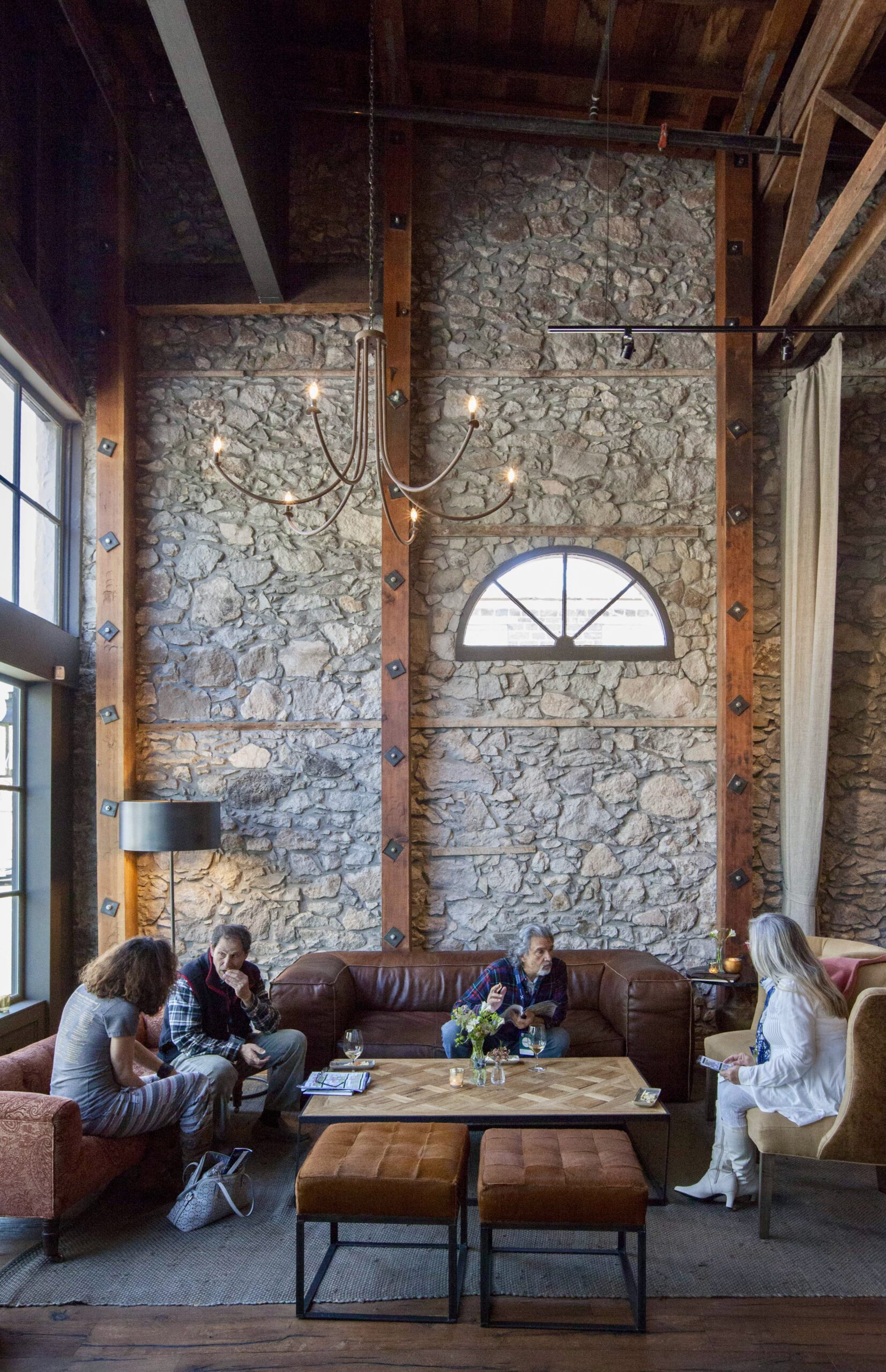
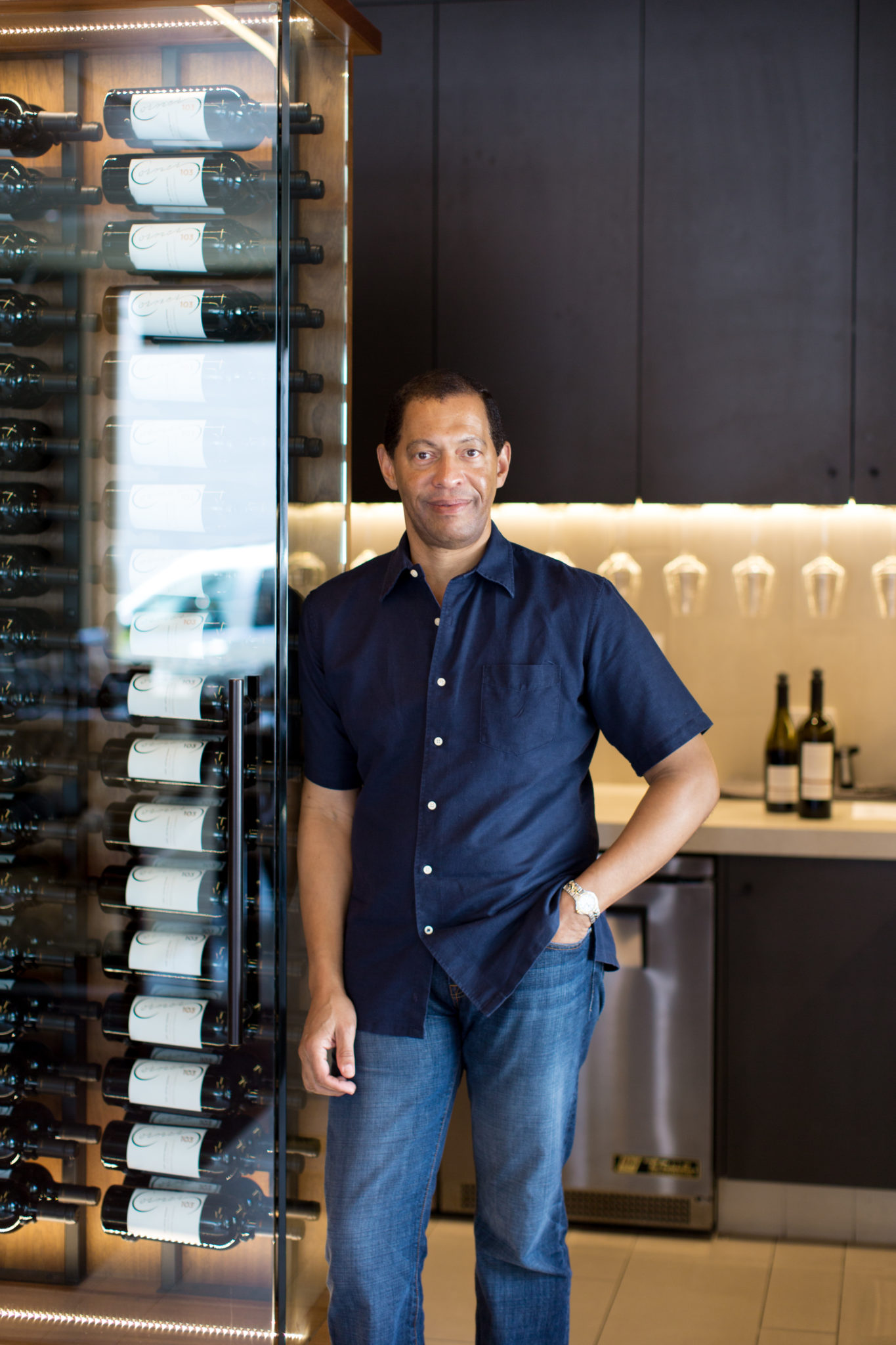
Founder Lloyd Davis has earned all kinds of recognition for his Corner 103 boutique tasting room in downtown Sonoma, including being named one of the top 10 tasting rooms in the country — twice. Davis credits the Black Lives Matter movement for making guests more aware of the importance of diversity in the wine industry and strives to make wine approachable to all. corner103.com
Free Tastings
At historic Korbel Winery in the Russian River Valley, the standard “marketplace” tasting is free, and a flight of three different wines is just $15 (korbel.com). And the super-friendly Locals Tasting Room in Geyserville offering tastings from 10 different local boutique producers, gratis (localstastingroom.com).
3 Great Spots to Play Bocce
Landmark Vineyards, Kenwood: Outdoor tastings by a lake and bocce for groups as large as 15. landmarkwine.com
Roth Estate, Healdsburg: Dedicated to powerful Cabernet from the Alexander Valley, Roth also hosts a bocce and barbecue tournament each spring. rothwinery.com
Dutcher Crossing, Geyserville: Play pétanque (another boules sport) on a court overlooking vineyards. Plus, get snuggles from cute golden retrievers. dutchercrossingwinery.com
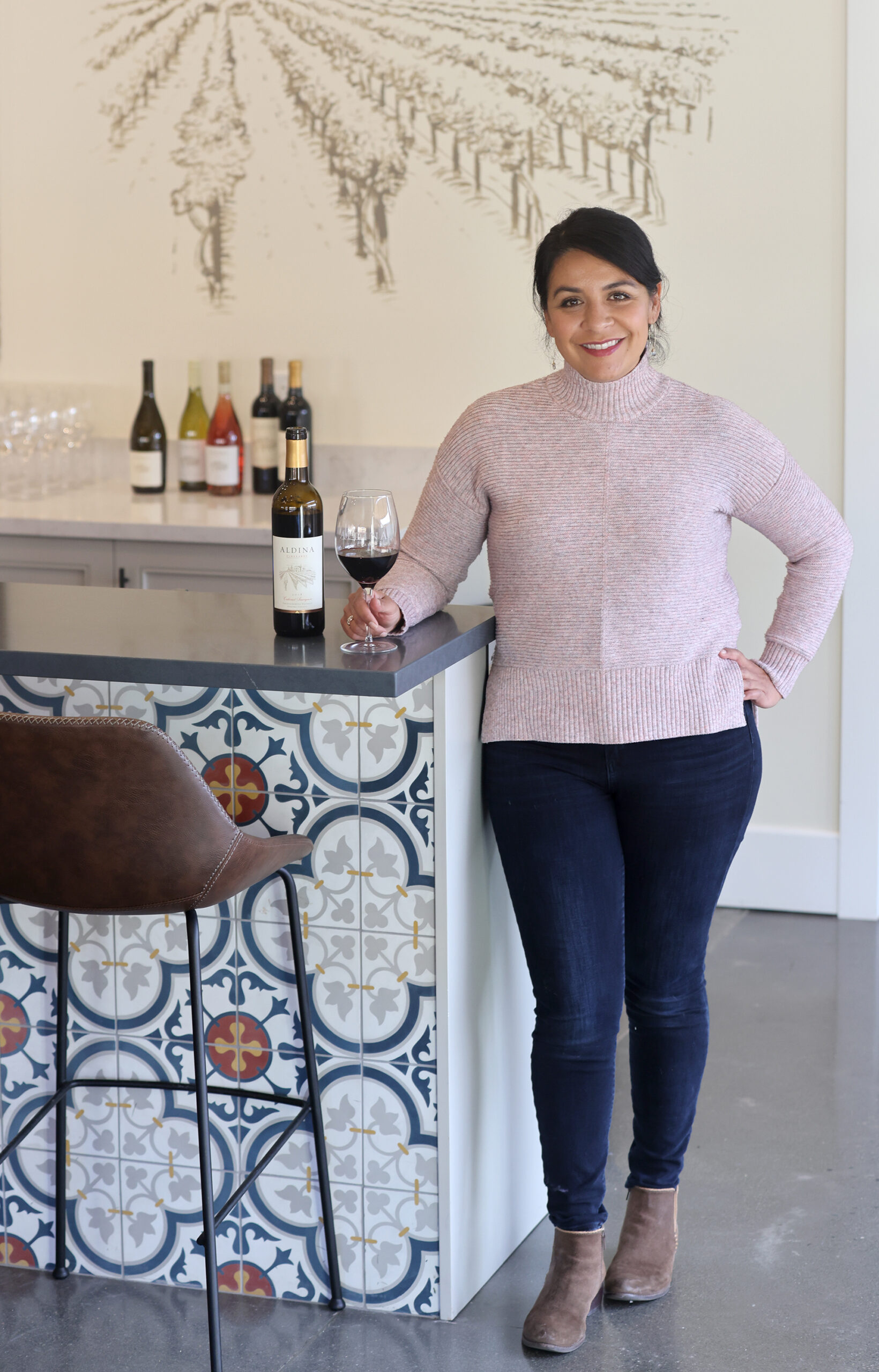
Taste With a Pro: Monica Lopez, Bacchus Landing
At this winery collective just outside Healdsburg, general manager Monica Lopez knows a thing or two about tasting rooms. After all, seven different boutique wineries welcome guests to the 3-acre property, which also has wood-fired pizza, a bocce court, and live music.
“I love being outdoors, so we put a lot of work into making Bacchus Landing a place you could relax outside,” says Lopez, whose family winery, Aldina Vineyards (aldinavineyards.com), is one of the seven tasting rooms on-site (tastings from $25). “We really want to encourage guests to purchase a bottle of wine and just hang out.”
On the rare occasions when Lopez isn’t leading tours at Bacchus Landing, she has a penchant for tasting rooms with beautiful outdoor spaces, like Robert Young Estate in Geyserville (ryew.com).
Bacchus Landing. 14210 Bacchus Landing Way, Healdsburg. 707-395-0697, bacchuslanding.com
“It’s a Special Occasion, And I’m in the Mood To Splurge.”
Aperture Cellars: Modern luxury meets refined hospitality, where rockstar winemaker Jesse Katz continues to impress with his revered Bordeaux-style wines. There is plenty of eye candy here, including images from Katz’s father, photographer Andy Katz. Clearly, talent is a family affair. From $50. 12291 Old Redwood Hwy., Healdsburg. 707-200-7891, aperture-cellars.com
Silver Oak: Those who adore Cabernet will find much to fall in love with here. The winery produces an acclaimed expression of the Bordeaux varietal each year. From $50. 7300 Hwy. 128, Healdsburg. 707-942-7082, silveroak.com
Flowers Vineyards & Winery: There are few better ways to impress than a visit to Flowers Vineyards & Winery, where a short walk through the redwoods reveals a masterfully designed tasting room, California-inspired gardens, and acclaimed Chardonnay and Pinot Noir from the Sonoma Coast. From $75. 4035 Westside Road, Healdsburg. 707-723-4800, flowerswinery.com
The Donum Estate: Spanning 220 idyllic acres in the Carneros, The Donum Estate is designed to dazzle, with more than 50 thought-provoking large-scale sculptures. The most exclusive tasting ($500) happens inside a kaleidoscopic pavilion of colored glass. From $150. 24500 Ramal Road, Sonoma. 707-732-2200, thedonumestate.com
Vérité Winery: Twenty minutes east of Healdsburg, Vérité seems to appear out of thin air, a dramatic, Abbey-inspired estate on a bucolic stretch of road. Father-daughter winemakers Pierre and Hélène Seillan have produced 17 hundred-point wines — all Bordeaux-style blends that reflect the region’s many micro-crus. From $200. 4611 Thomas Road, Healdsburg. 707-433-9000, veritewines.com
Hamel Family Wines: Impressive views of the biodynamically farmed vineyards, bespoke wine and food pairings, and small-production Cabernet Sauvignon and Bordeaux-style blends all lure guests to this special spot in Sonoma Valley. From $95. 15401 Sonoma Hwy., Sonoma. 707-996-5800, hamelfamilywines.com
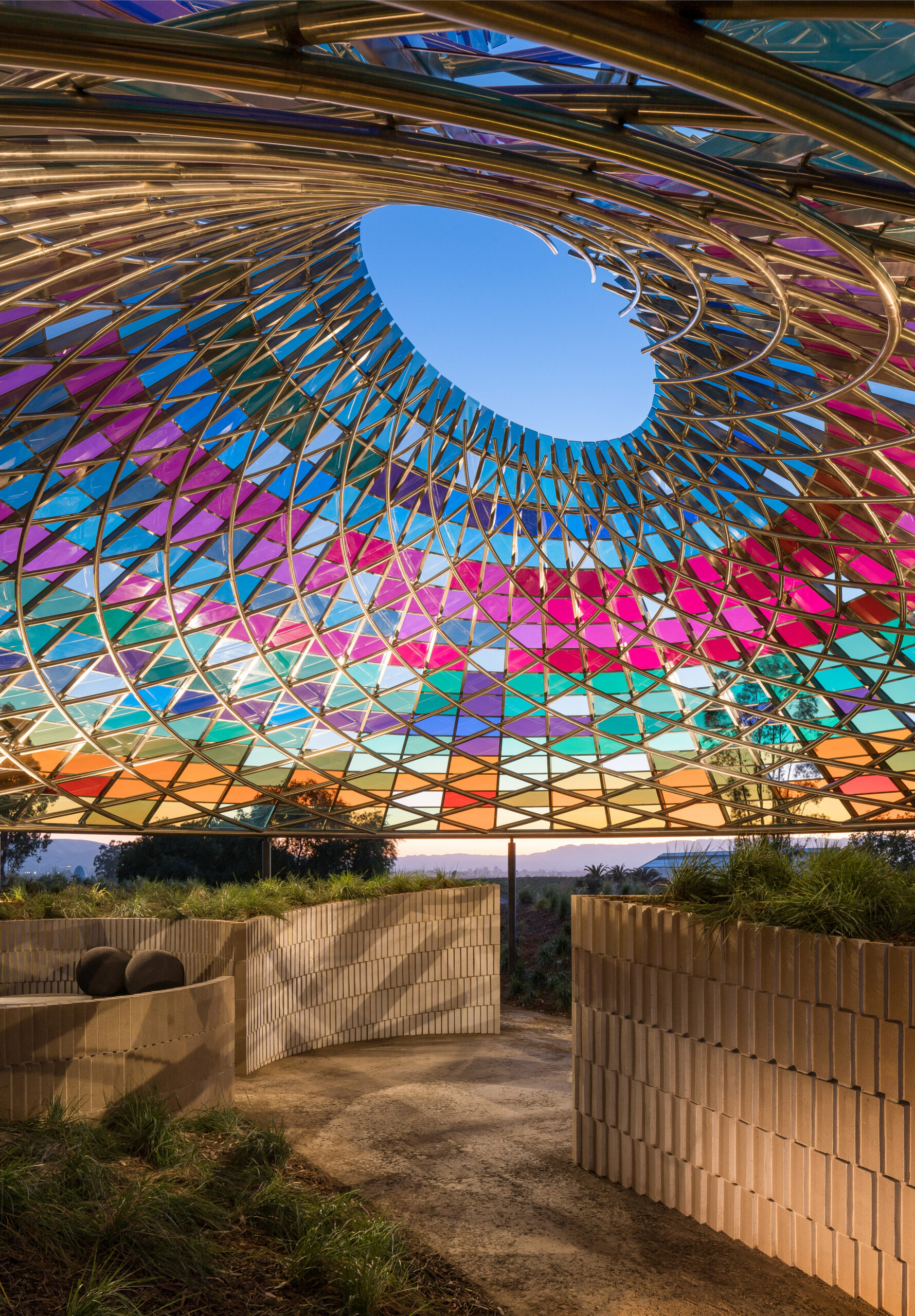
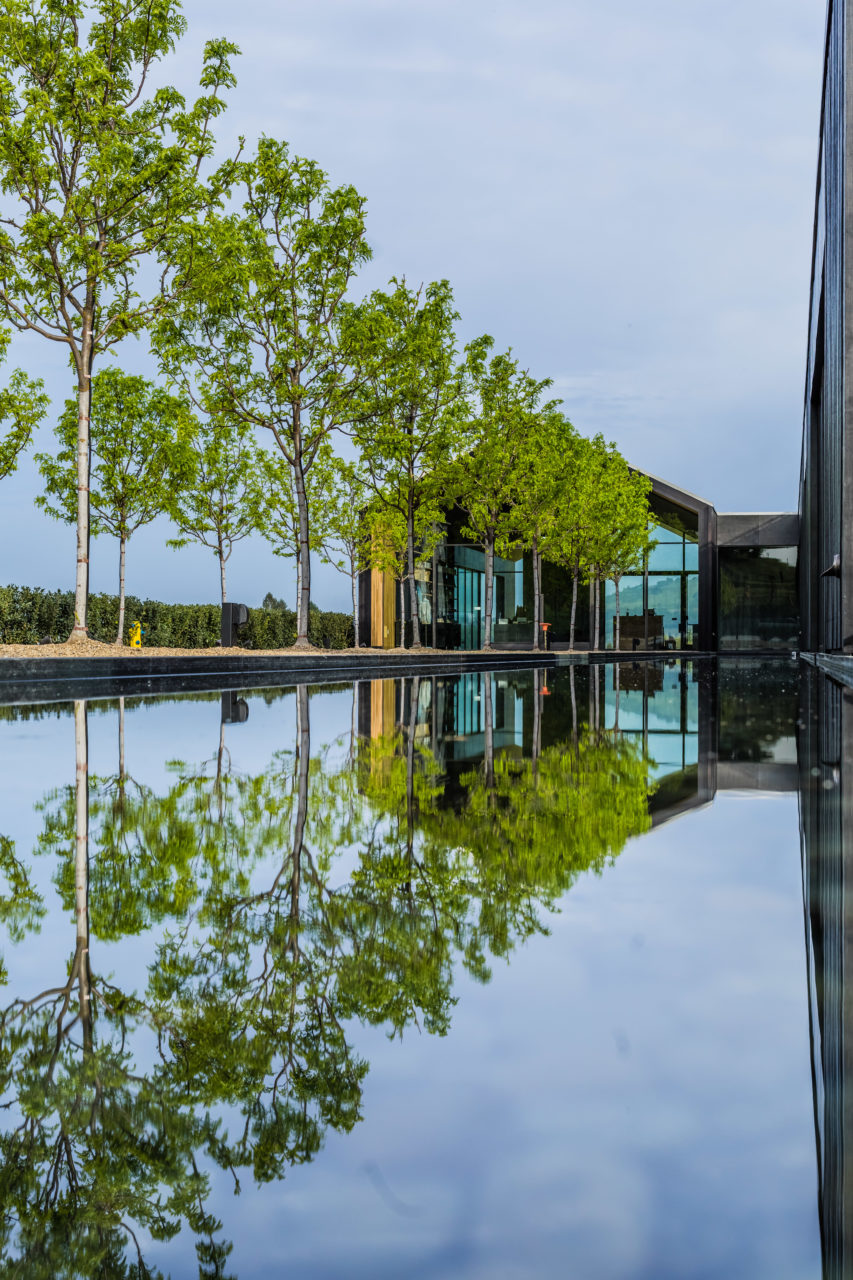
AVA Spotlight: Petaluma Gap
Bursts of Pacific Ocean-driven wind and fog through a “gap” in coastal mountain ranges makes the region a prime spot for growing cool climate Pinot Noir, Chardonnay and Syrah. It’s a huge AVA, spanning more than 200,000 acres from Bodega Bay to San Pablo Bay, but is mostly towns, vineyards and agriculture. Many well-known wines are made with fruit grown here, but actual tasting rooms located in the field are hard to come by.
To get the best sense of the wines made from the Petaluma Gap, head to Keller Estate, perched on a lushly landscaped hilltop with magical vineyard and valley views. Winemaker Ana Keller includes interesting varietals like a Syrah-Viognier blend, a Pinot Gris and sparkling wines (from $35, kellerestate.com).
Taste With a Pro: Ted Lemon, Littorai
There’s a lot to love at Littorai, but the coolest thing about visiting, says Lemon, is the private farm tour. “We’re a biodynamic wine farm, so you really get to see what’s involved in that,” he says. This includes seeing how Littorai makes biodynamic compost teas, which help nourish the vines, and walking through the vineyard blocks. “There’s a lovely view up top, so you can get a sense of the Sebastopol hills,” he says.
Lemon also likes taking friends to Freeman Winery for cave tastings of Pinot Noir and Chardonnay, and to Arnot-Roberts for intriguing, site-specific wines. “The Freemans are lovely and they’re small and owner-run. They don’t make a lot of wine, so you’re really tasting the signature of the winemaker,” he says (freemanwinery.com).
At Arnot-Roberts (arnotroberts.com), Lemon says there are a range of wines on offer from all over, often including offbeat varieties. “It’s really a lot of fun.”
Littorai tastings from $65. 788 Gold Ridge Road, Sebastopol. 707-823-9586, littorai.com
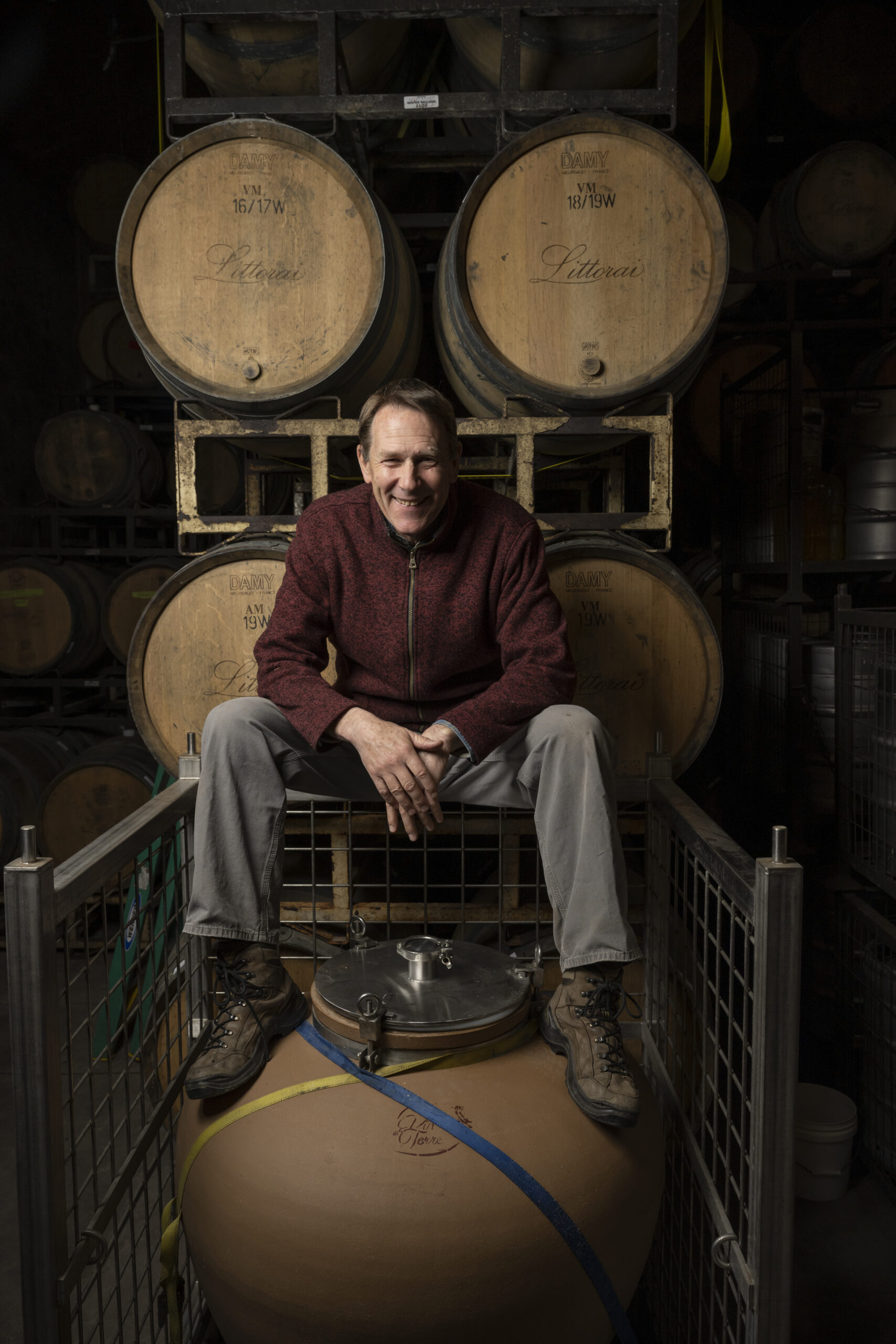
3 Great Wineries to Bring Your Dog
Mutt Lynch Winery, Windsor: One of the most dog-friendly wineries around, with the motto “bark less, wag more.” Wine flights and wine club shipments come with special dog treats. muttlynchwinery.com
Smith Story Wine Cellars, Healdsburg: Lord Sandwich, the charismatic goldendoodle belonging to winery owners Alison Smith Story and Eric Story, helped make this charming family-owned tasting room Instagram-famous. smithstorywines.com
Kunde Family Winery, Kenwood: Fifth-generation winegrower Jordan Kunde welcomes dogs and their owners for a hike and romp through vineyards and native grasslands. kunde.com
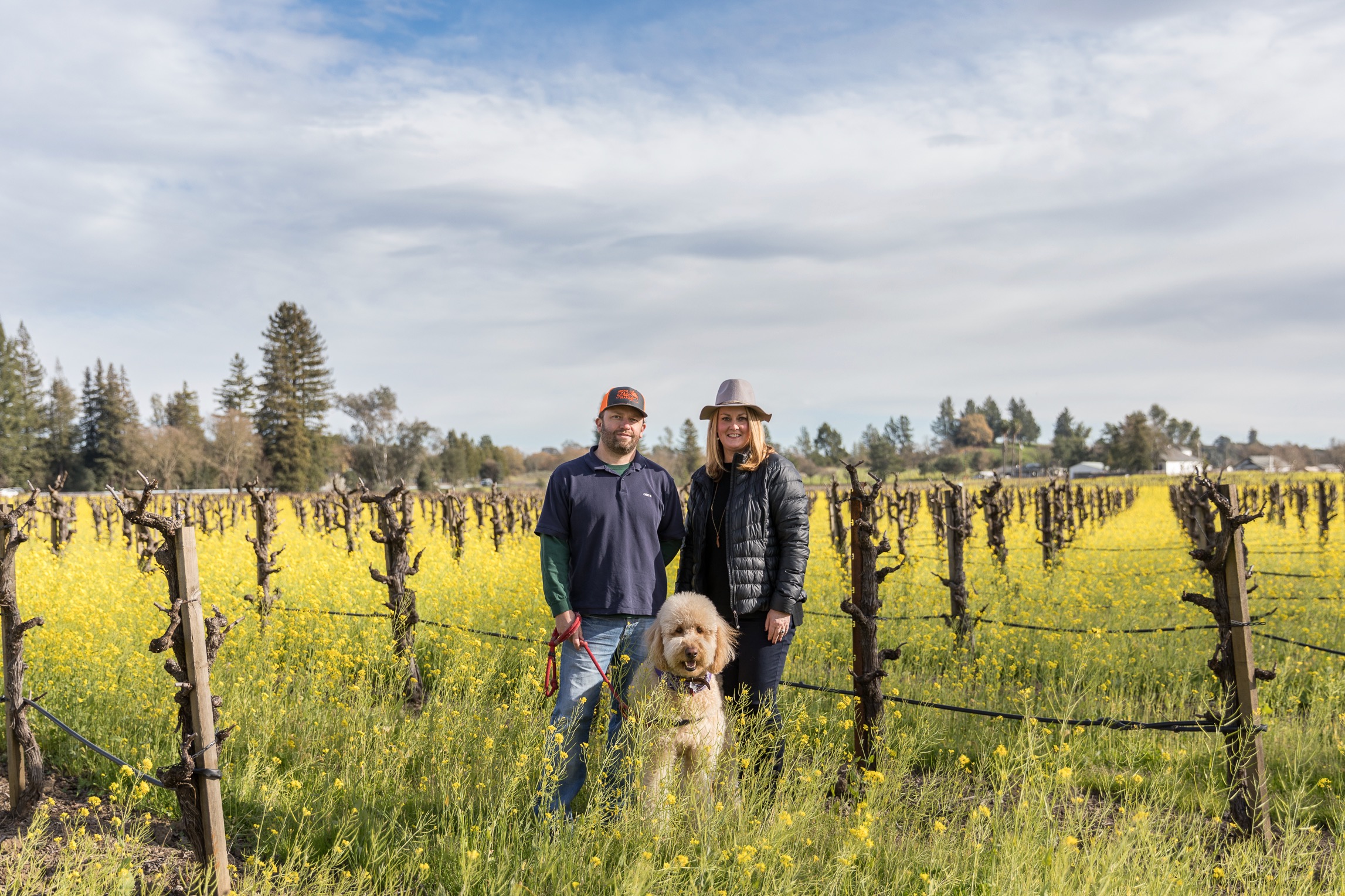
3 Great Wineries with Olive Groves
DaVero Farms & Winery, Healdsburg: Cuttings from an ancient, 800-year-old olive grove in Tuscany helped establish the orchards. The fruit is gently handpicked, then pressed the same day for an extra-virgin elixir that’s rich, fruity and peppery. davero.com
Trattore Farms, Geyserville: For $20, add a tasting of their excellent flavored oils to any tasting at their Dry Creek estate or in downtown Healdsburg. trattorefarms.com
Jacuzzi Family Vineyards, Sonoma: A large stone chateau anchors one of the area’s largest olive oil operations, with 45 acres of Italian and Spanish trees. In harvest season (usually October), visitors can see the pressing process up close. jacuzziwines.com
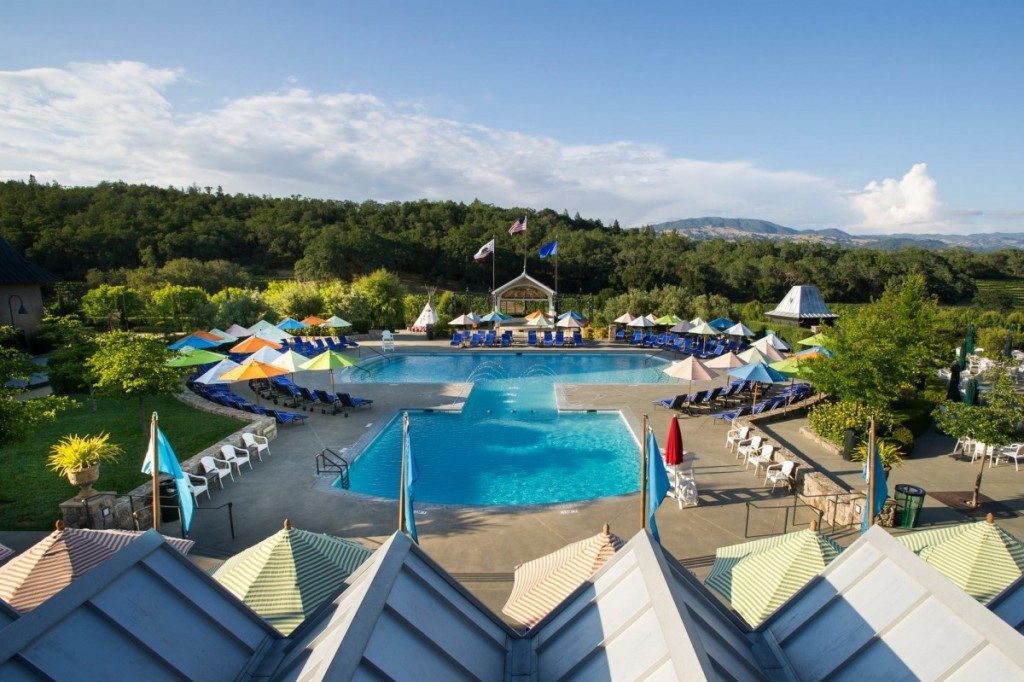
At Geyserville’s family-friendly Francis Ford Coppola Winery, reserve a cabine to hang out and swim for the day in one of two giant swimming pools surrounded by chic blue chaise lounges (from $250). Inside, film buffs will find a museum of Coppola’s movie memorabilia, including Academy Awards and a screeching red Tucker automobile. francisfordcoppolawinery.com
Taste With a Pro: Alice Sutro, Sutro Wine Co.
Visual artist, winemaker and mother of two Alice Sutro wants her guests to experience her family’s ranch in Chalk Hill, near the Russian River, in a very authentic way, so guests are led on a walk through the vineyard tasting.
“It’s like a 30-minute crash course in viticulture. Why does a trellis work that way, why do we maintain the canopy like this, what are our volcanic soils like — and here’s how that affects what’s in the glass,” explains Sutro. “I really want people to see the effort and value in grape-growing. It seems so necessary to me.”
When not walking the lands that inspire her painting and winemaking, Sutro’s hands-down favorite tasting room is Bannister Wines in Geyserville (bannisterwines.com), where Brook Bannister, a furniture craftsman turned winemaker, and Morgania Moore, a jewelry and lighting designer, have created a bohemian-styled art gallery and salon in a 104-year-old former bank.
Sutro Wine Co. hike and tasting, $65. 13301 Chalk Hill Road, Healdsburg. 707-509-9695, sutrowine.com
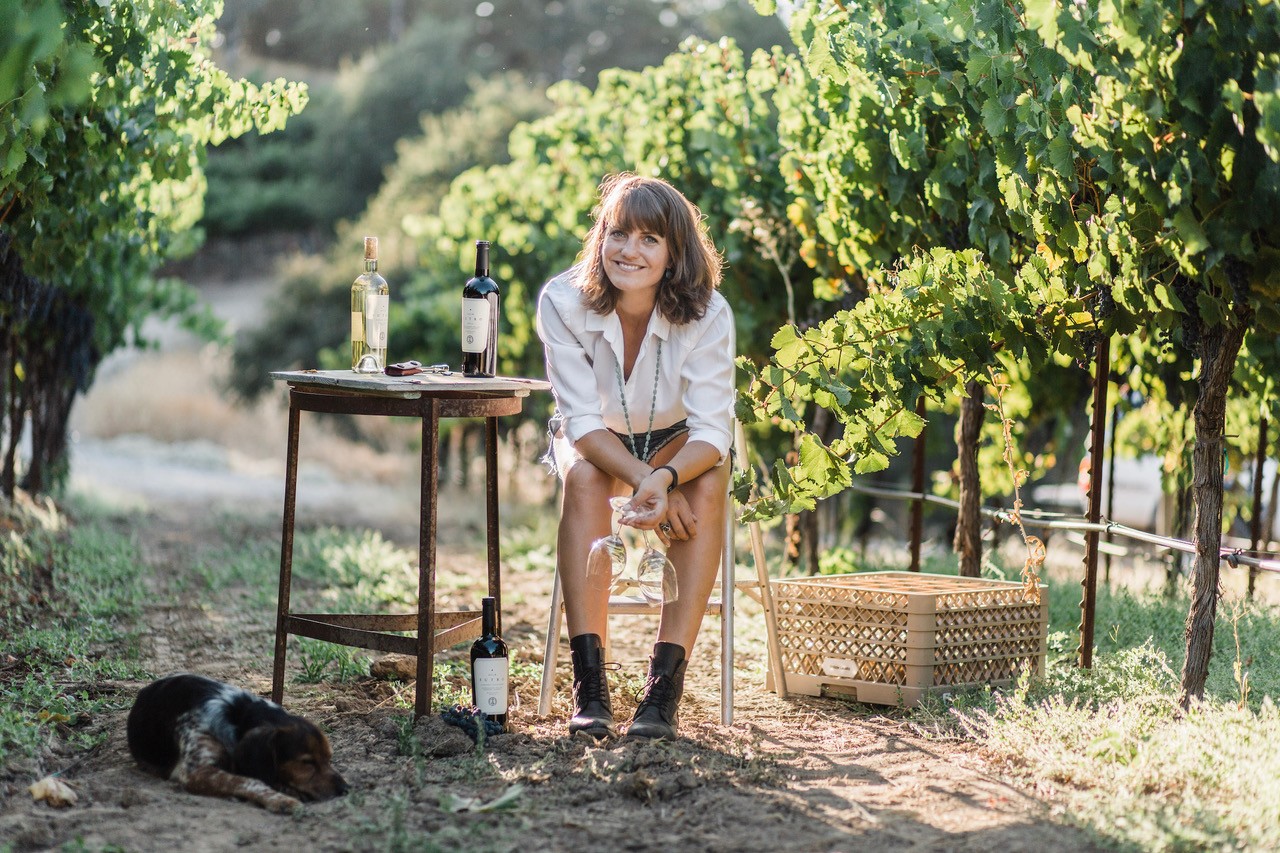
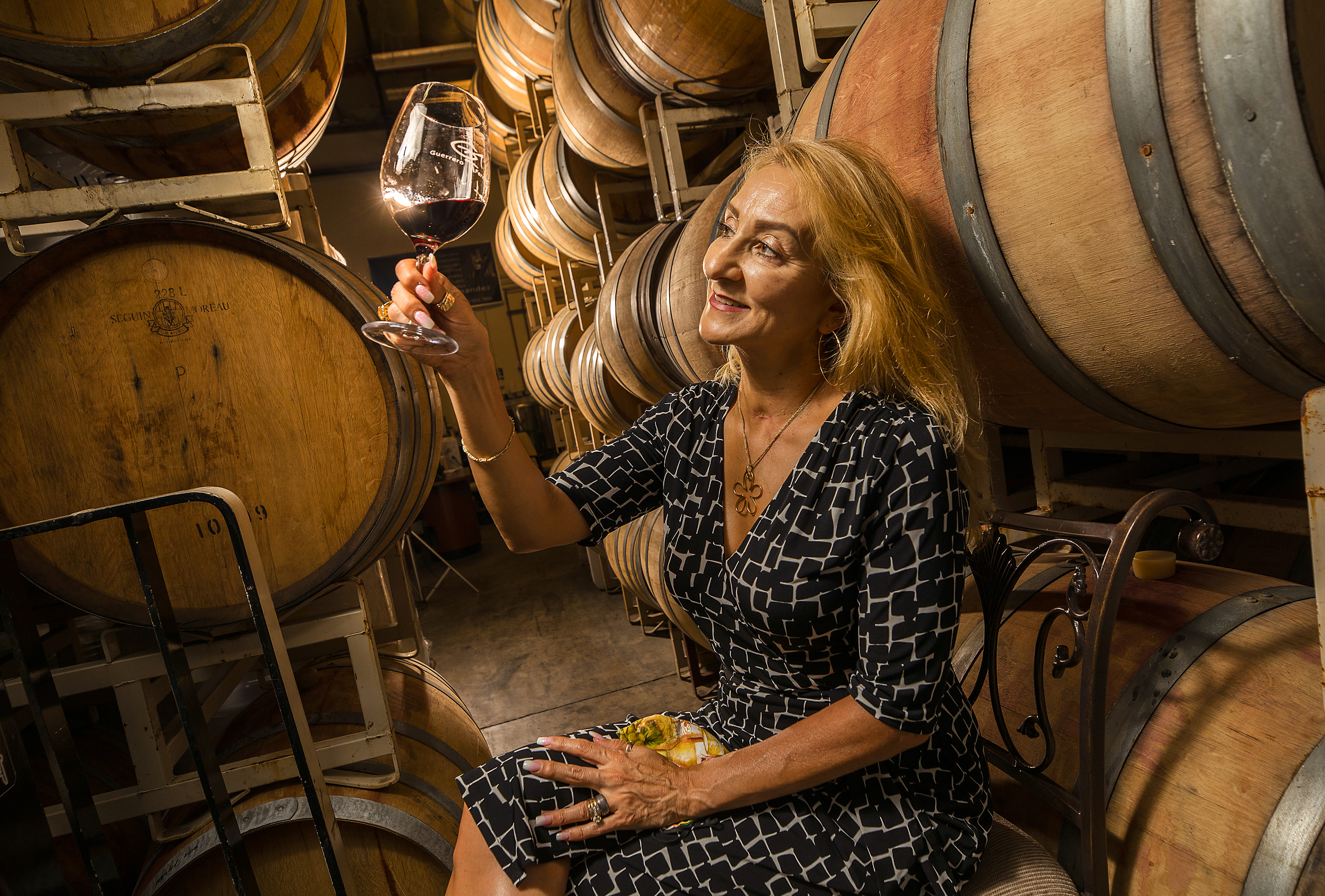
Owners Olga Fernandez and Martin Guerrero have poured their hearts into the homespun tasting room at Guerrero Fernandez Winery in Windsor, where guests can compare Zinfandel from Dry Creek and Russian River valleys. Don’t miss the karaoke nights. gfwines.com
“I Love a Sense of History. What Are Some Classic Destinations?”
Martinelli Winery: For more than 135 years, the Martinelli family has farmed this land, including the famously steep Jackass Hill. Daredevil winegrower Giuseppe Martinelli planted Jackass Hill in 1889 and farmed it with a team of horses for 30 years. From $35. 3360 River Road, Windsor. 707-525-0570, martinelliwinery.com
Buena Vista Winery: California’s first premium winery was founded by Hungarian immigrant Count Agoston Haraszthy in 1857. Don’t miss the plush, Champagne-focused Bubble Lounge. From $35. 18000 Old Winery Road, Sonoma. 800-926-1266, buenavistawinery.com
Kendall-Jackson Wine Estate & Gardens: The late Jess Jackson bought his first vineyards in 1974. An unwitting mistake that produced a slightly sweet Chardonnay put the winery on the map. These days, a 4-acre organic garden produces rare veggies for in-house pairing menus. From $35. 5007 Fulton Road, Santa Rosa. 707-571-8100, kj.com
Gundlach Bundschu Winery: The oldest family-owned winery in the state, GunBun’s Rhinefarm vineyards were first planted in 1858. The Bundschu family is known for coastal Chardonnay and reserve Cabernet Sauvignon, among a dozen different varietals — and for rollicking outdoor concerts in the old redwood barn. Metallica once performed a secret concert here. From $75. 2000 Denmark St., Sonoma. 707-938-5277, gunbun.com
Sebastiani Vineyards & Winery: This downtown Sonoma winery, founded in 1904, was one of the few to operate through Prohibition, producing small amounts of sacramental and medicinal wines. From $50. 389 Fourth St. E., Sonoma. 707-933-3200, sebastiani.com
Iron Horse Vineyards: The family winery began with a vision in the pouring rain back in 1976. Audrey Sterling and her late husband Barry thought the 300 acres of gentle rolling Sebastopol hills looked like Camelot. Today, the small sparkling wine house produces stellar bubbly. From $35. 9786 Ross Station Road, Sebastopol. 707-887-1507, ironhorsevineyards.com
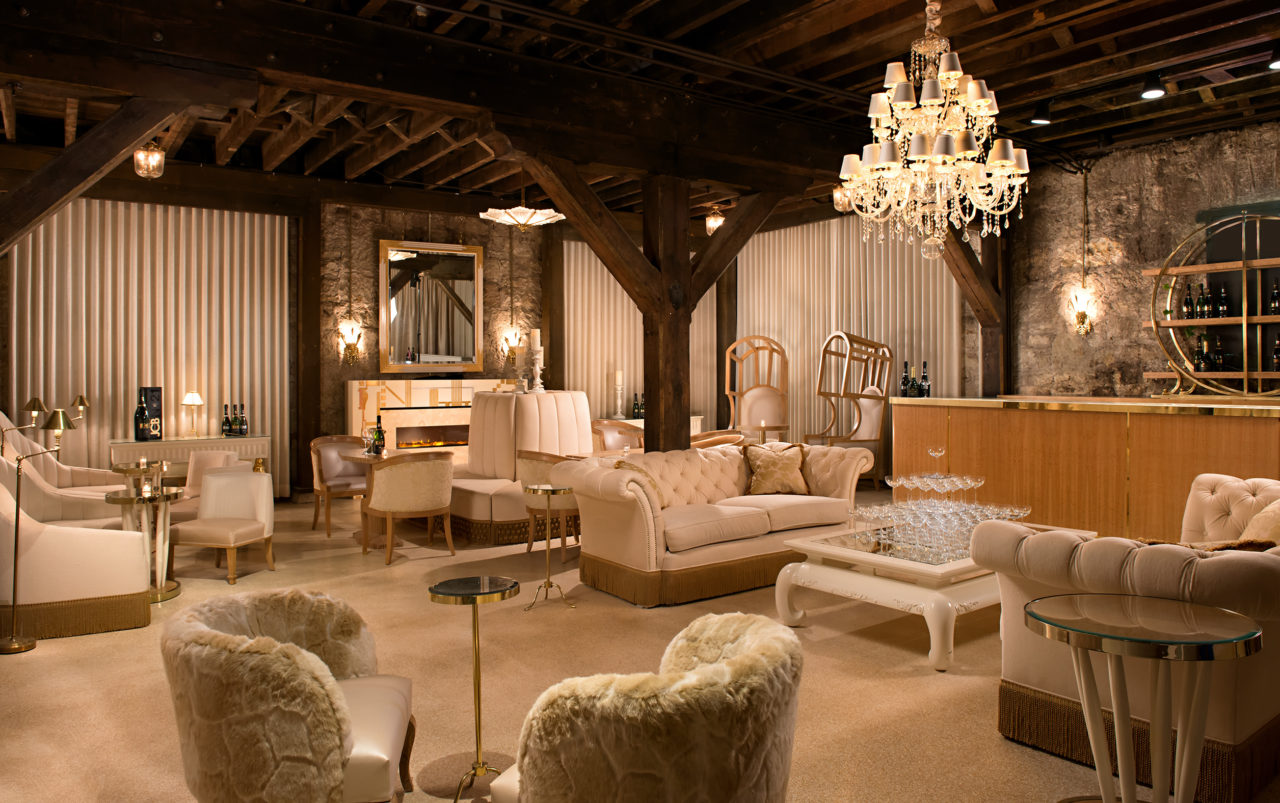
AVA Spotlight: Alexander Valley
This is one of Sonoma County’s largest appellations in terms of acres planted, second only to the vast North Sonoma AVA. Located near Geyserville, Alexander Valley is known for fruit-driven Cabernet Sauvignon that is complex and full bodied, with silky tannins. This distinctive Cab comes courtesy of the region’s warm, dry climate, morning fog, and the moderating influence of the Russian River. Chardonnay, which tends to be on the rich, floral side, also shines here, along with old vine Zinfandel. Get a sense of the region’s best at Stonestreet Wines (below), Hawkes Wine, Hanna and Alexander Valley Vineyards.
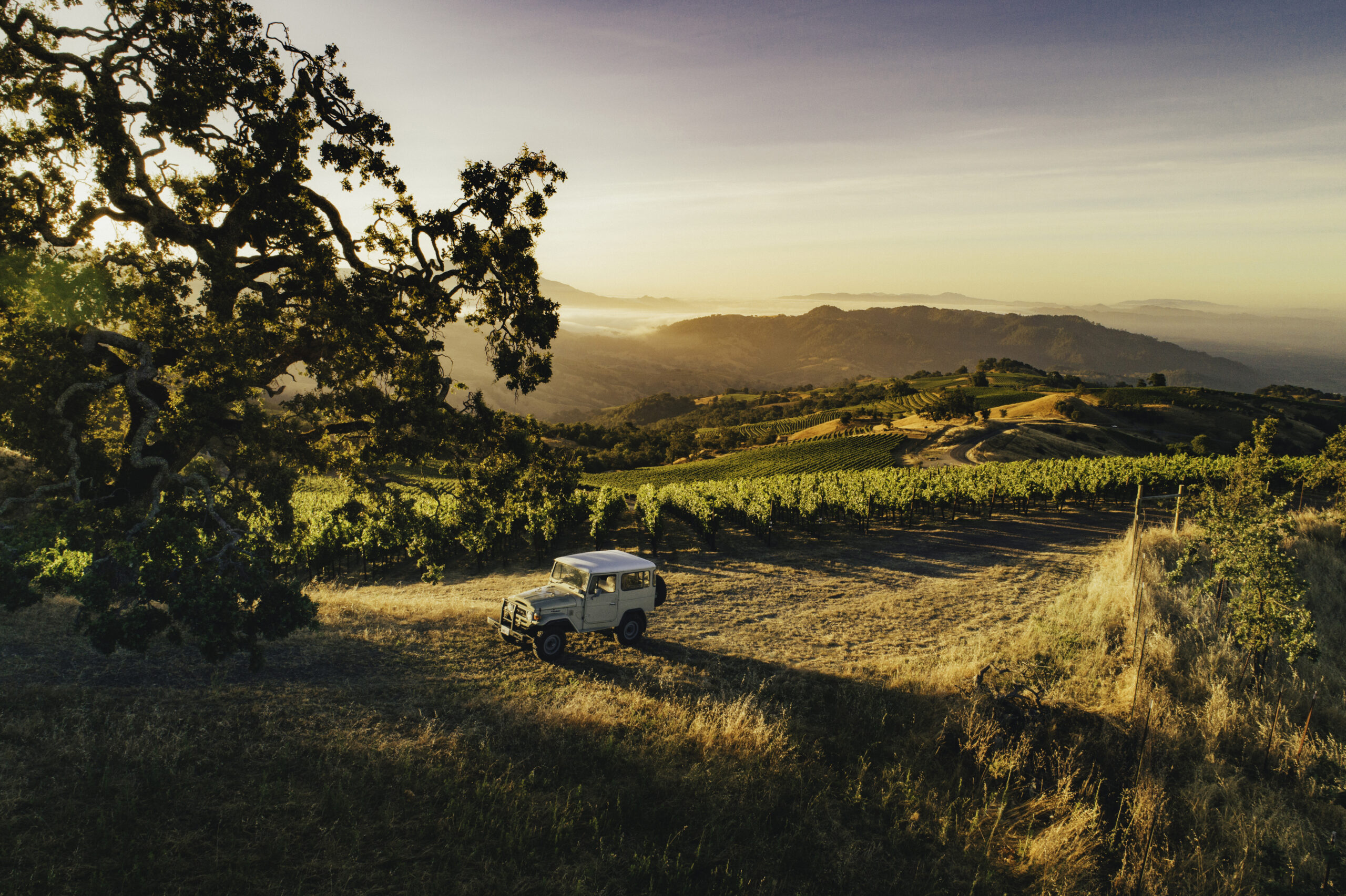
Taste With a Pro: Katie Madigan, St. Francis Winery
In 2002, Madigan was a 21-year-old intern at St. Francis back when the proverbial light bulb went off and she realized winemaking was her calling.
Two decades later, Madigan is still just as excited about the work she does. She says the winery has a variety of fun tasting experiences, including a pedal trolley tour made famous by Al Roker and friends at a taping with NBC’s Today Show in April 2023. Estate pairings on the patio from chef Peter Janiak use produce from the 2-acre garden.
With out-of-town guests, Madigan also loves visiting Anaba Wines in Sonoma (anabawines.com). “The winery is super dog-friendly, which makes it easy to bring my pup along,” she says. She also enjoys rare Rhone and Italian varietals at Unti Vineyards in Healdsburg (untivineyards.com). “All of its wines are dynamite, and the intimate feel of its tasting room gives the perfect personal touch.”
St. Francis tastings from $35. 100 Pythian Road, Santa Rosa. 888-675-9463, stfranciswinery.com
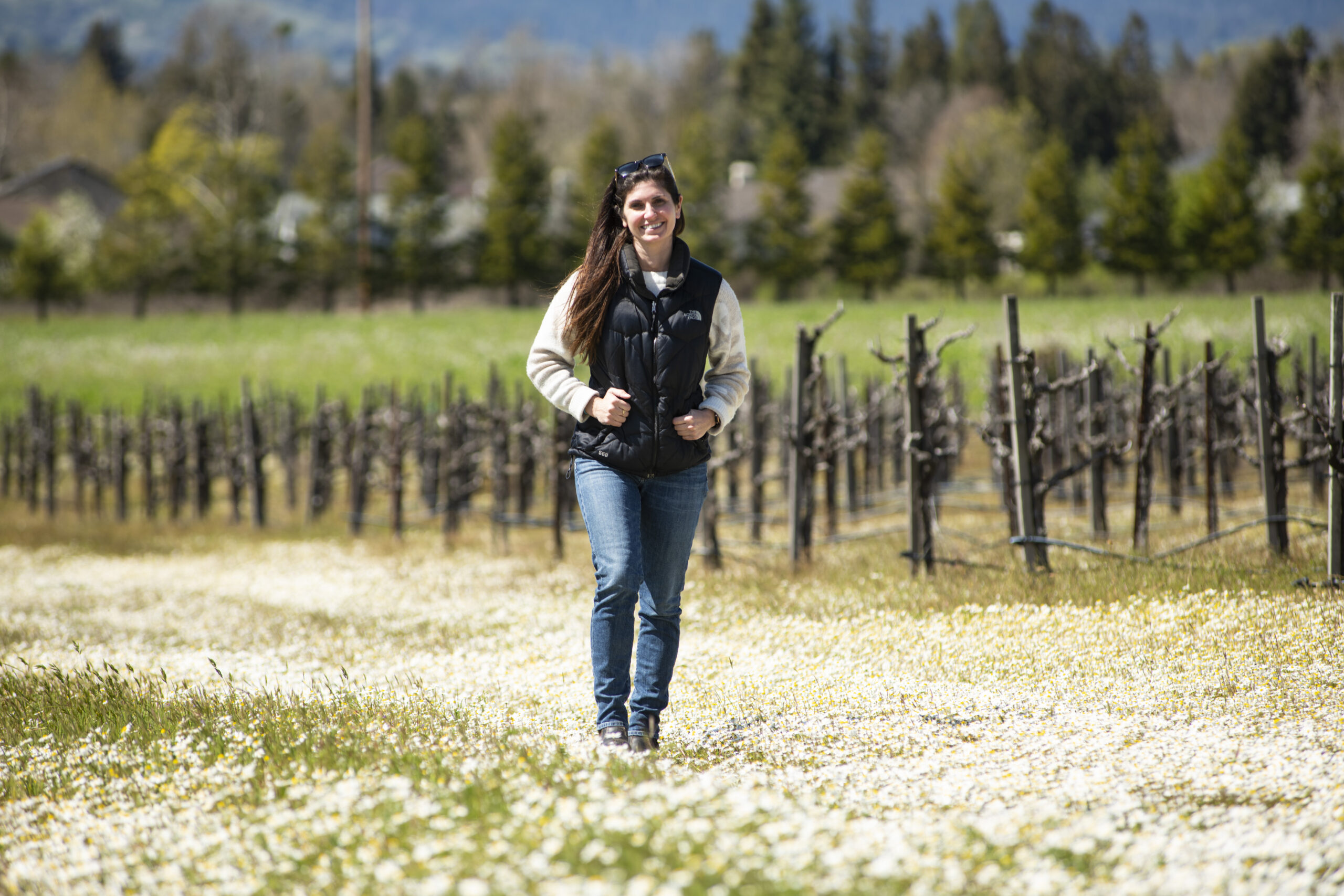
Top 3 Tastings in Caves
Bella Winery, Healdsburg: In sprawling caves set beneath the gorgeous, century-old Lily Hill vineyard, visitors gather among stacks of barrels as soft light filters in. Small-production lots of Zinfandel are the draw. From $30. 9711 W. Dry Creek Road, Healdsburg. 707-473-9171, bellawinery.com
Deerfield Ranch Winery, Kenwood: Feel like part of the harvest action as you cross the outdoor crushpad to reach a quiet tasting room set inside 23,000 square feet of caves. From $35. 10200 Sonoma Hwy., Kenwood. 707-833-5215, deerfieldranch.com
Capo Creek Ranch, Healdsburg: Food pairings are led by Mary Roy, a former physician, now Capo’s hospitable winemaker, chef and owner. From $165. 7171 W. Dry Creek Road, Healdsburg. 707-608-8448, capocreekranch.com
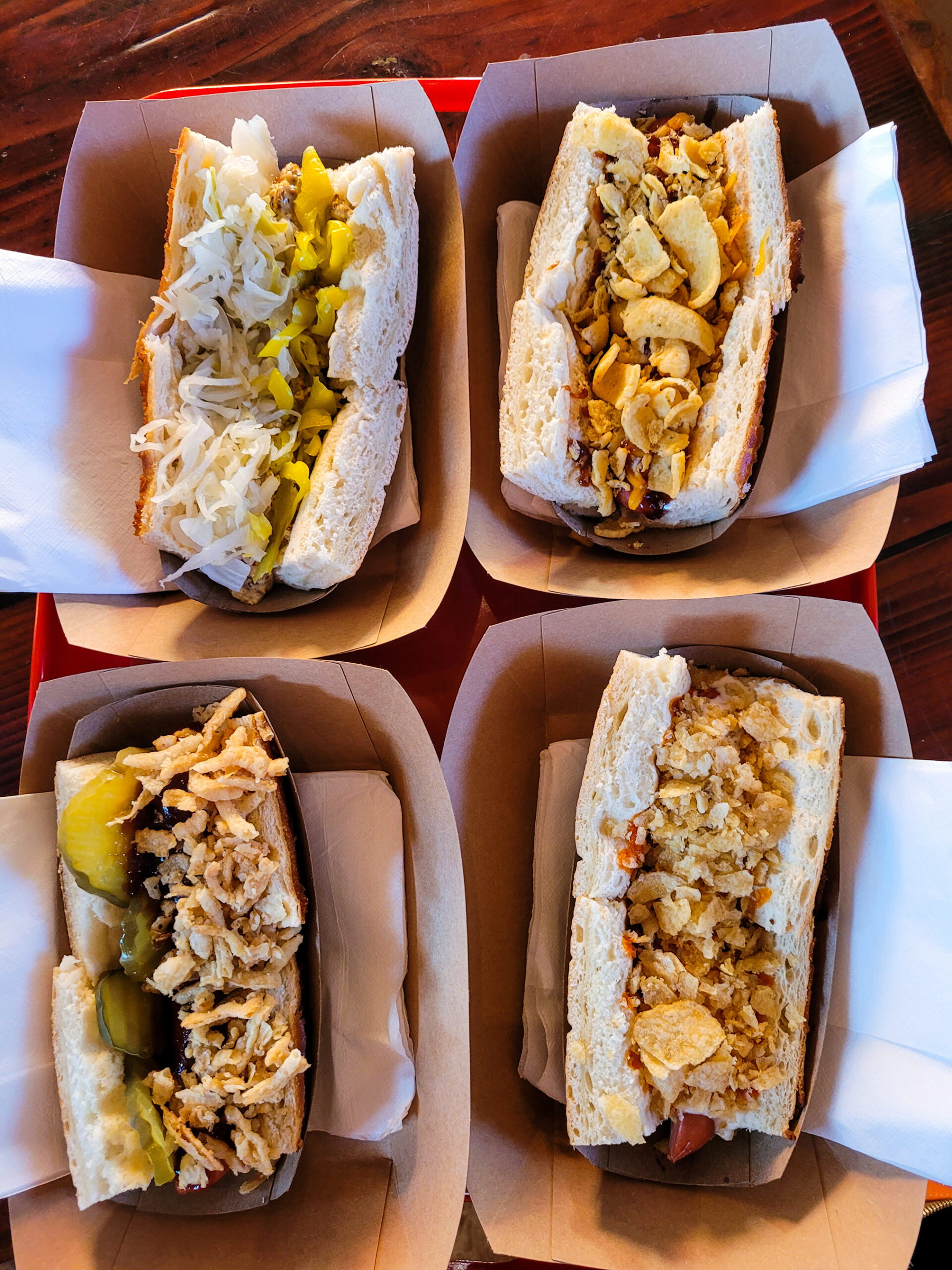
Pachyderm Station is what Primus guitarist Les Claypool calls his quirky Sebastopol tasting room decorated with concert posters and an old-timey bar. Homey? Yes. Weird in the best kind of way? Also, yes. Fridays through Sundays, pair the excellent site-specific Pinot Noirs with fancy hot dogs from Claypool’s own Whamola Wieners. purplepachyderm.com
At The Barlow in Sebastopol, Pax Winery & Tasting Room is like a clubhouse for likeminded indie winemakers, led by Syrah and Grenache specialist Pax Mahle. Take a quick peek around back at harvest time to glimpse the busy crush facility he shares with natural wine pioneer Martha Stoumen and rising stars Rosalind Reynolds and Patrick Cappiello. paxwine.com
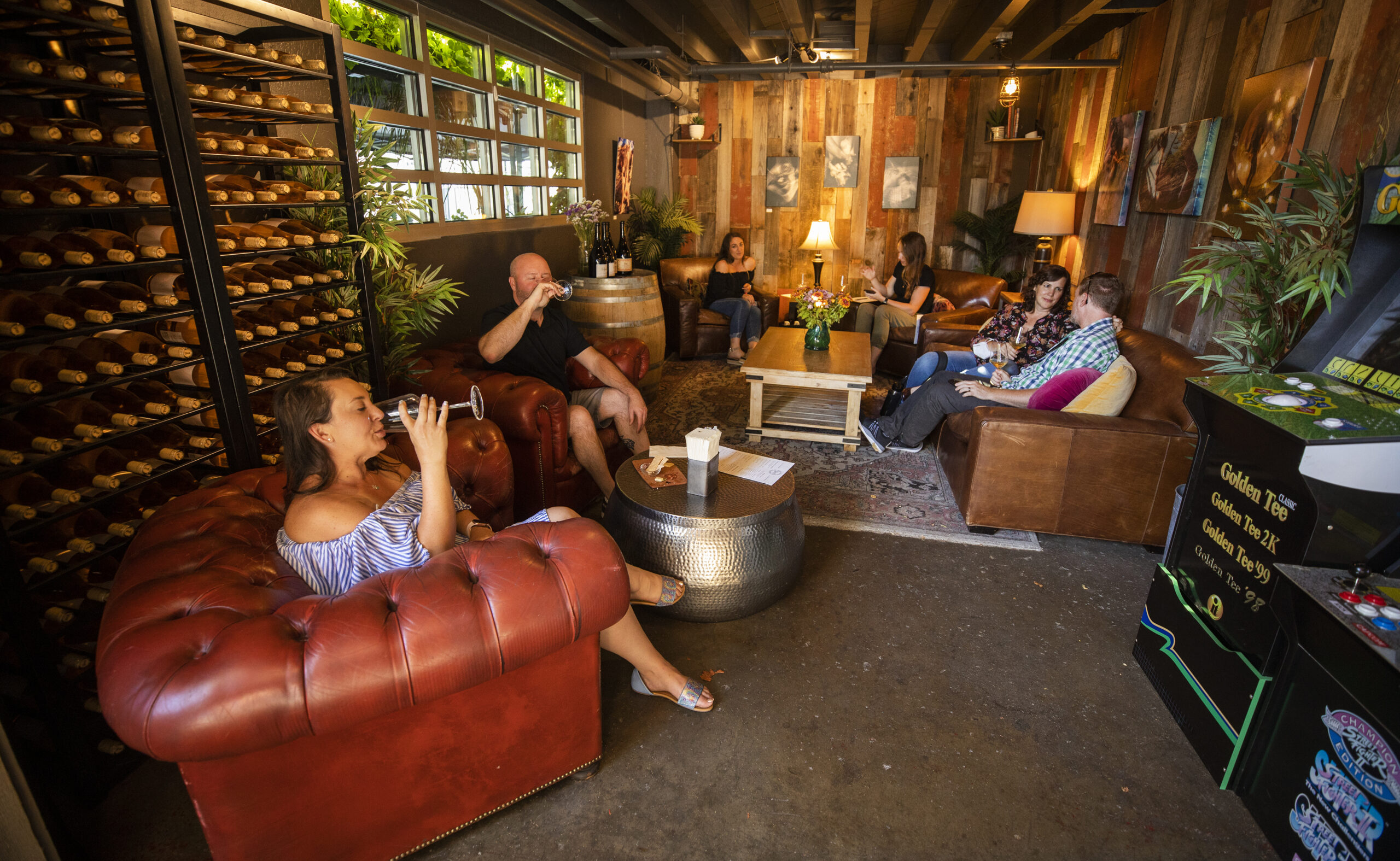
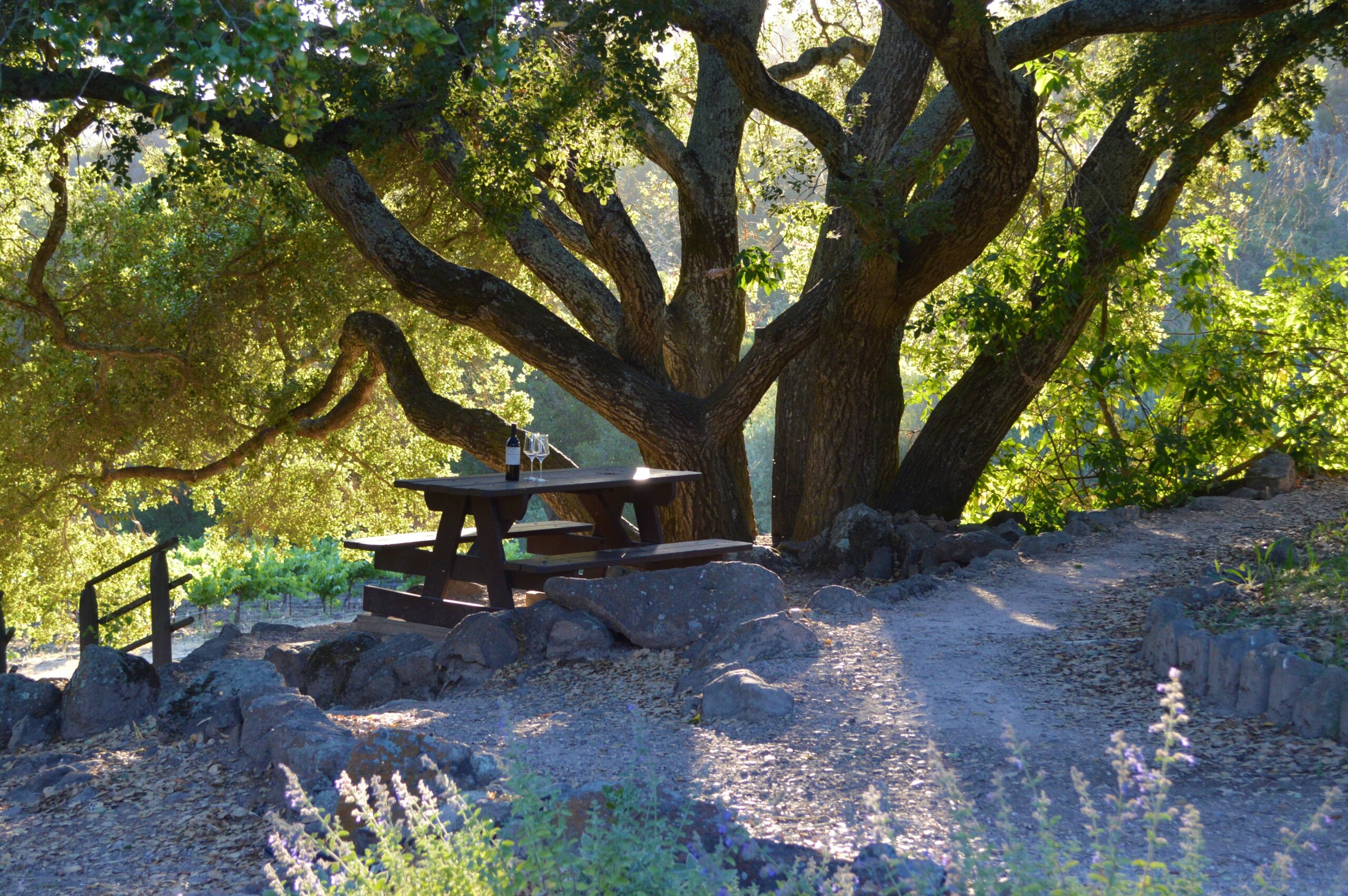
Top 3 for a Great Picnic
Lambert Bridge Winery, Healdsburg: Shady tables await on an expansive picnic lawn, with gorgeous views of vineyards and surrounding forests. From $35. 4085 W. Dry Creek Road, Healdsburg. 707- 431-9600, lambertbridge.com
VML Winery, Healdsburg: Chill in the serene Butterfly Garden, a shaded sanctuary tucked next to Dry Creek, as you enjoy single-vineyard Pinot Noir and Chardonnay. From $50. 5610 Dry Creek Road, Healdsburg. 707-431-4404, vmlwine.com
Bartholomew Estate Winery, Sonoma: Grab a bottle from the tasting room, then settle in at a picnic table overlooking the vineyard. After, hit the trail at 375-acre Bartholomew Park. From $45. 1000 Vineyard Lane, Sonoma. 707-509-0540, bartholomewestate.com
“Forget Instagram. I Want All the Prettiest Views in Real Life.”
Paradise Ridge: The second-story veranda is the place to drink in sweeping views of the Russian River Valley and the winery’s iconic “LOVE” sculpture as the sun sets over the vineyards. Paradise found, indeed. From $35. 4545 Thomas Lake Harris Drive, Santa Rosa. 707-528-9463, prwinery.com
Scribe Winery: Lush palms meet native ornamental grasses, succulents, roses, and a bountiful culinary garden at Scribe. The landscape’s wild splendor is a fitting accent to the restored hacienda’s “old California” vibe. Tastings for Scribe Viticultural Society members. 2100 Denmark St., Sonoma. 707-939-1858, scribewinery.com
Matanzas Creek Winery: Stunning lavender fields beckon at Matanzas Creek, especially in June, when row upon row of fragrant purple blossoms reach their peak. Book a reservation to visit the terraced gardens and tasting room. From $35. 6097 Bennett Valley Road, Santa Rosa. 707-528-6464, matanzascreek.com
Ferrari-Carano Vineyards and Winery: The gardens are stunning any time of year, but for tulip lovers, early spring is the time to visit. Call the winery’s “tulip hotline” to find out when they’re at their colorful best. Tastings start at $40. 8761 Dry Creek Road, Healdsburg. 707-433-6700, ferraricarano.com
Arista Winery: With a winding gravel pathway, picturesque pond, and harmonious collection of trees, ferns and manicured greenery, the Japanese water garden at Arista is an oasis of serenity for seated sipping. From $30. 7015 Westside Road, Healdsburg. 707-473-0606, aristawinery.com
McEvoy Ranch: The 550-acre winery and olive oil operation is tucked away in a hidden, private valley on the Sonoma/ Marin county line near Petaluma. Graceful olive trees are surrounded by extensive plantings of lavender and herbs. 5935 Red Hill Road, Petaluma. 707778-2307, mcevoyranch.com
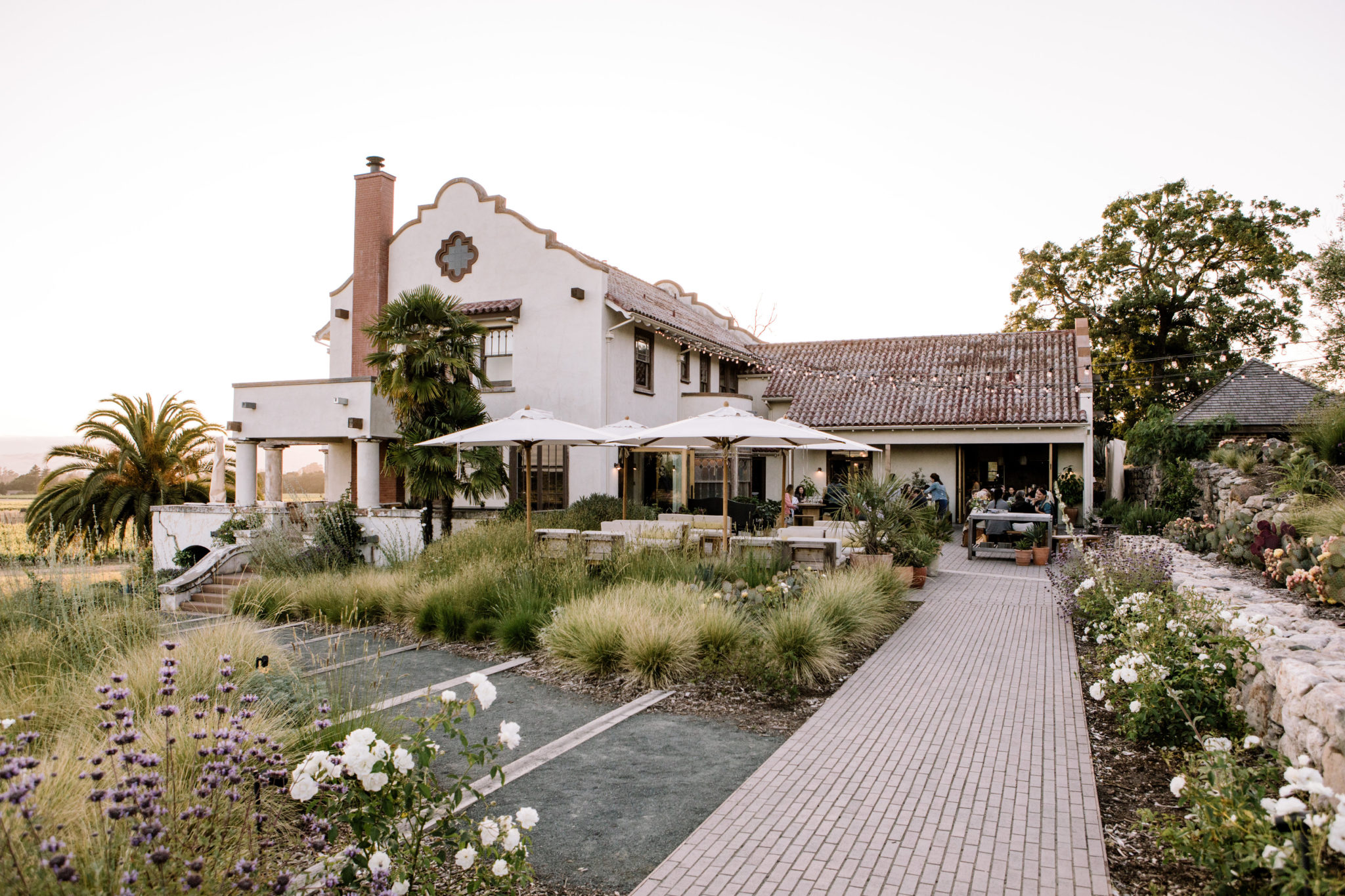
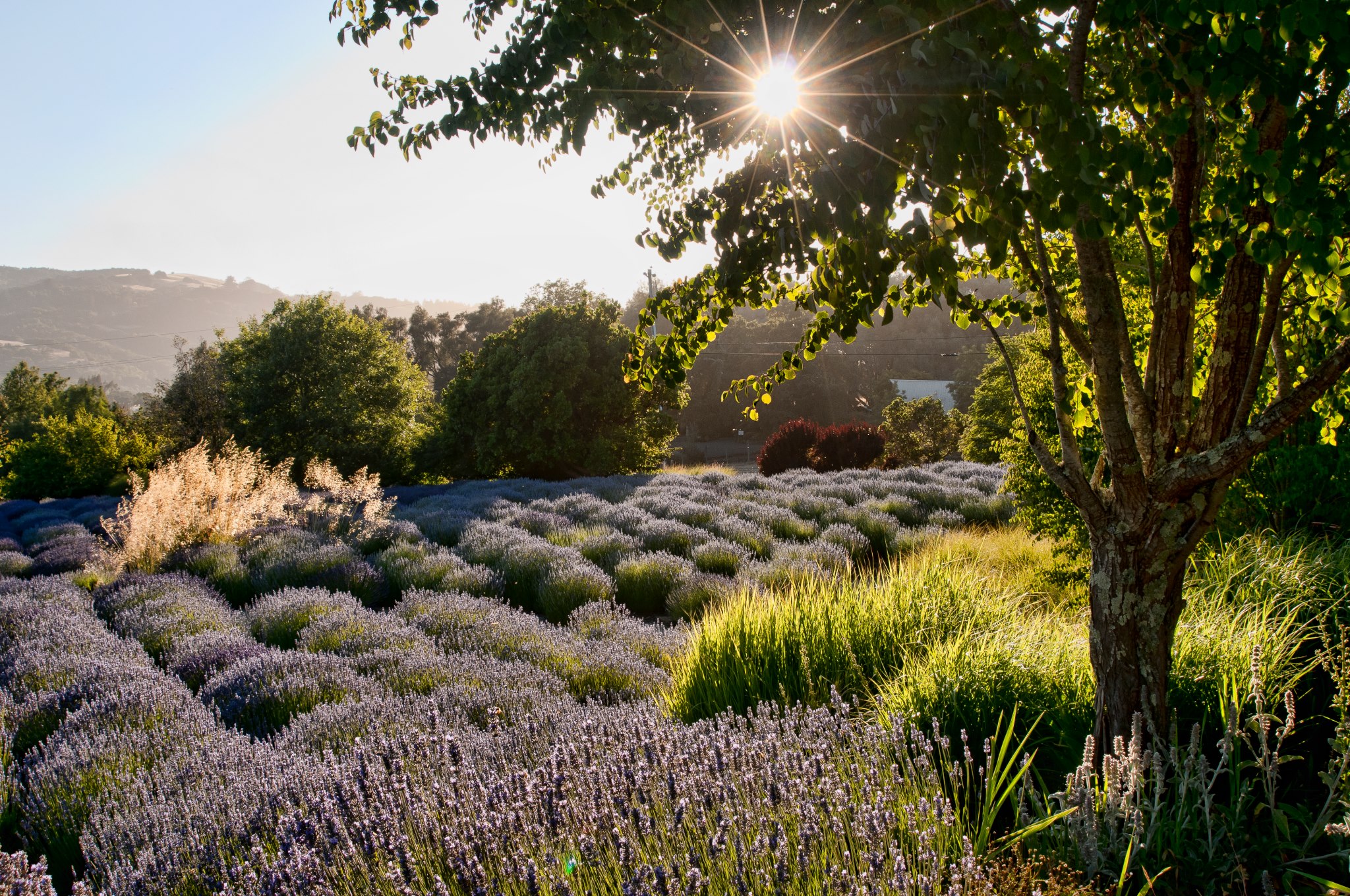
AVA Spotlight: Sonoma Coast
The Sonoma Coast appellation covers more than 750 square miles, stretching from the Mendocino County border to the San Pablo Bay. While the expansive AVA’s diverse microclimates, soils, elevations, and exposures allow many grape varieties to flourish, it’s best known for cool climate Pinot Noir and Chardonnay.
Set within the broader Sonoma Coast, the West Sonoma Coast AVA covers the farthest western sliver of the county along the Pacific coastline, as well as the Fort Ross-Seaview AVA. The region sets itself apart with a cool maritime climate, high elevations and extreme growing conditions. To sample the coast, visit Fort Ross Vineyard & Winery (below) — one of the few West Sonoma Coast wineries with a tasting room within the bounds of the remote region — plus Peay Vineyards, Cobb Wines, Red Car Wine and Hirsch Vineyards.
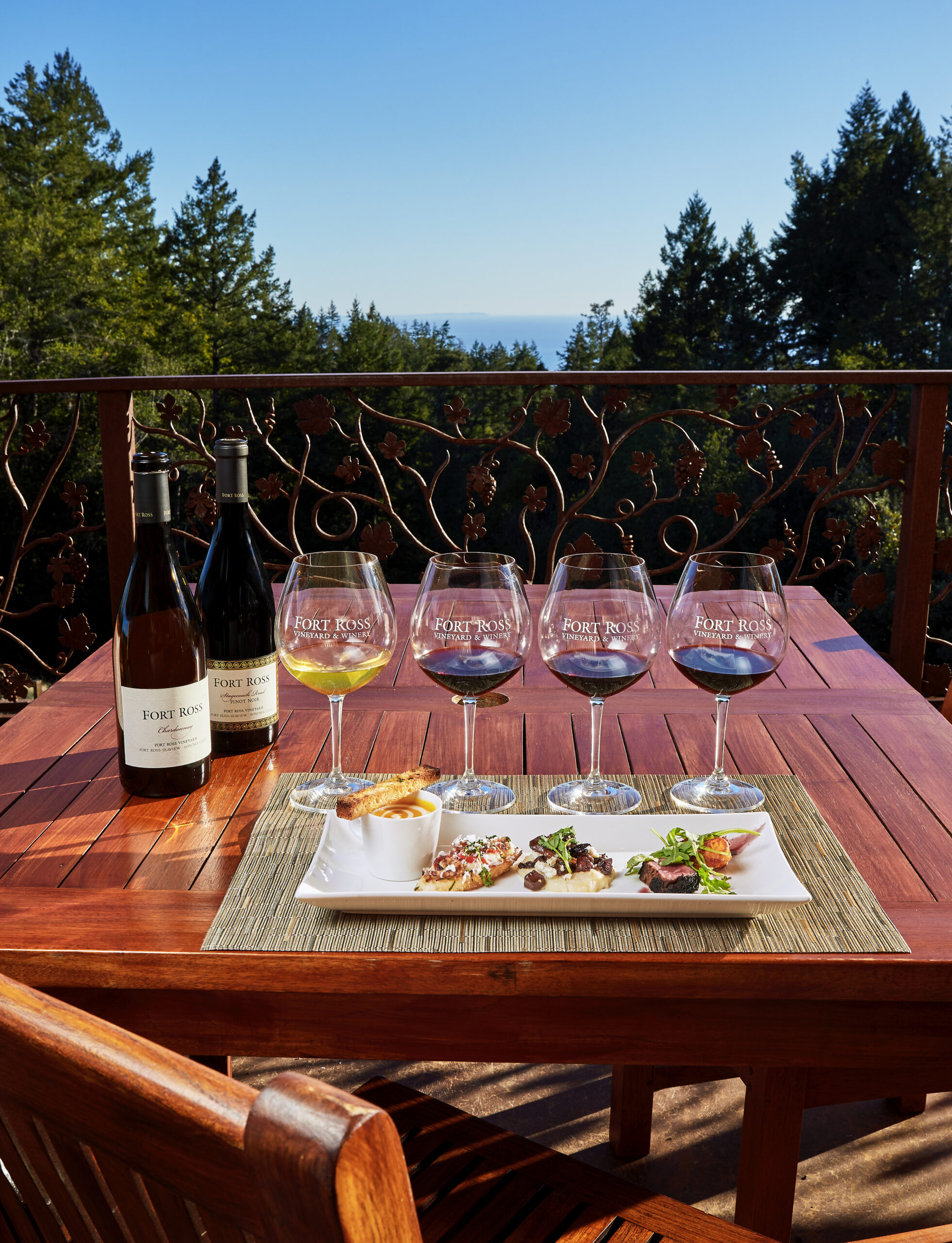
Taste With a Pro: Corinne Rich and Katie Rouse, Birdhorse Wines
Rich and Rouse have day jobs as assistant winemakers at Scribe and Bedrock Wine Co., respectively, but the couple still finds time to run their own wine brand, crafting uncommon varietals like Valdiguie and Cinsault. The couple thrill to introducing people to favorites like their Portuguese-style, green pineapple-wet stone Contra Costa Verdelho.
“It’s such a special wine, with so much of the texture and weight of an Old World Chardonnay, but a flavor profile that’s authentically Californian.”
To taste, they invite guests to join their mailing list and attend their release parties, recently hosted at chic Luma Bar & Eatery in Petaluma. Or look for the couple at Preston Farm & Winery, one of their favorite stops, where they treasure bottlings of Barbera, Carignan and Nero d’Avola (prestonfarmandwinery.com). “Their wines are excellent, and the farm is such a beautiful, integrated ecosystem of grapes, animals, other crops, and the natural surroundings. It’s really a gold standard of what farming in Sonoma County can look like.”
Birdhorse Wines, birdhorsewines.com
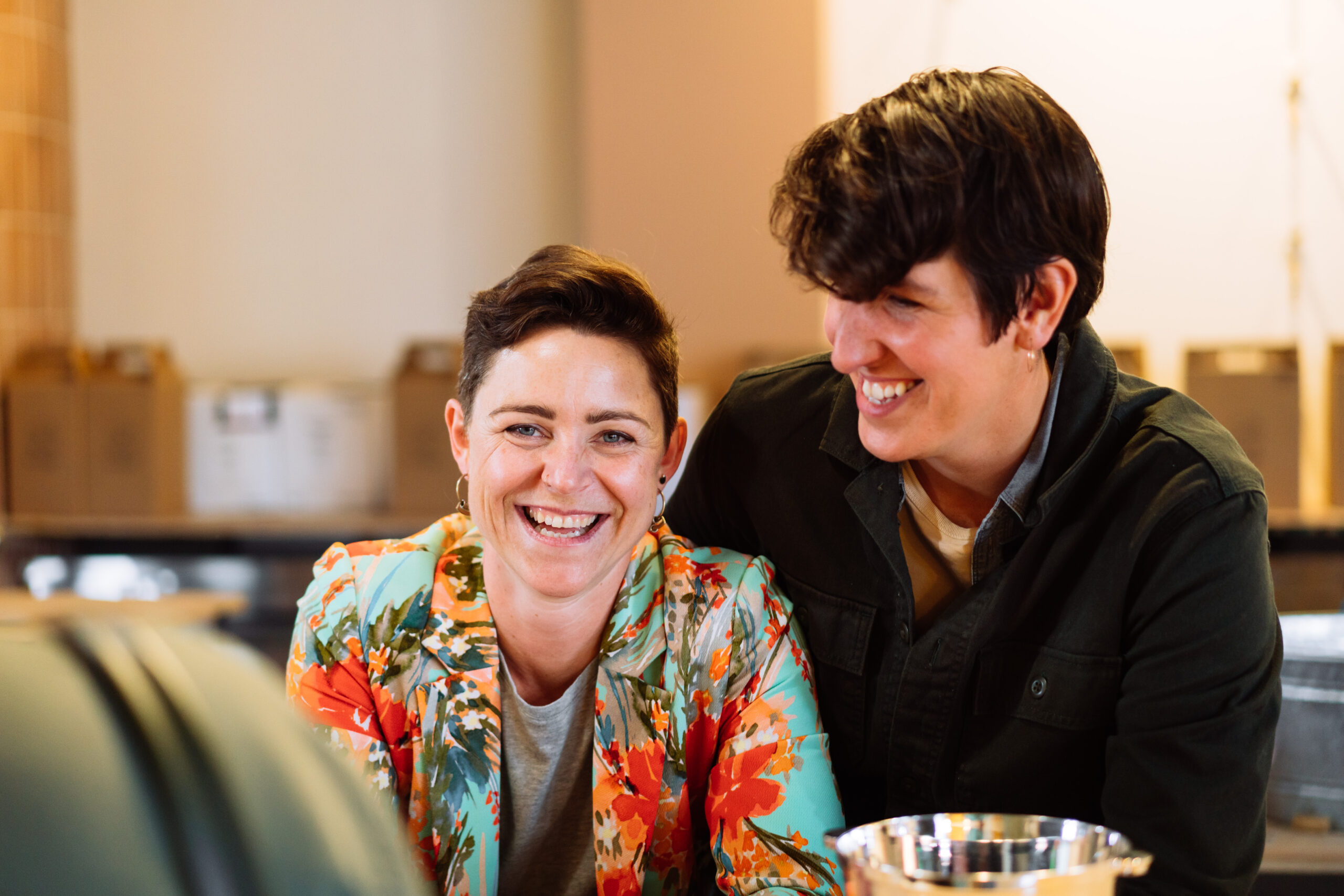
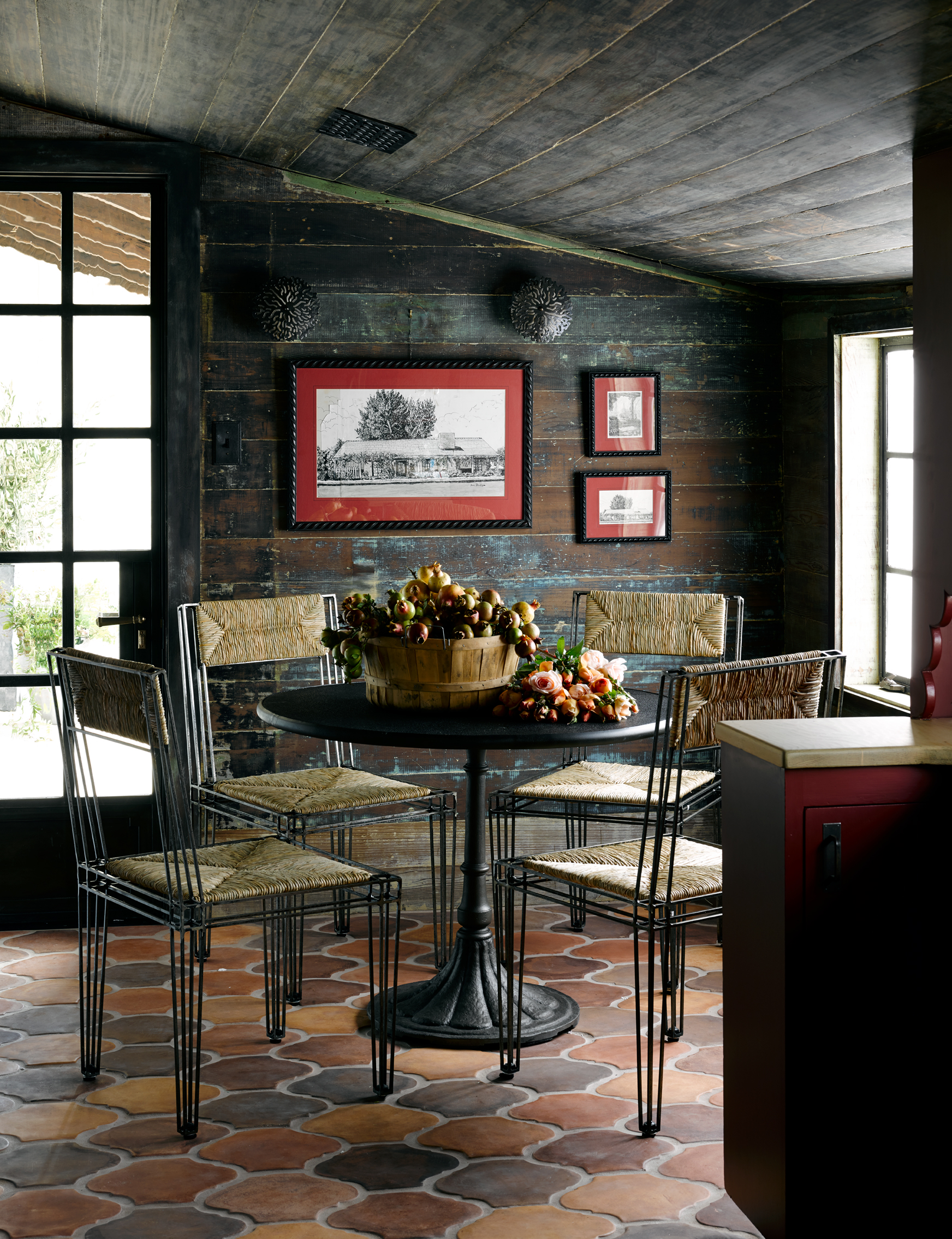
Custom white papel picado banners flutter in the breeze at the beautifully preserved 1842 Vallejo-Casteñada Adobe in downtown Sonoma, home to Three Sticks Wines, vintner Bill Price’s award-winning Pinot Noir and Chardonnay house. Not to be missed. threestickswines.com
Learn the art of sabrage — using the blunt edge of a sword to open a bottle of sparkling wine — at Healdsburg favorite Breathless Wines. After you learn to open the bottle, you get to drink it. breathlesswines.com
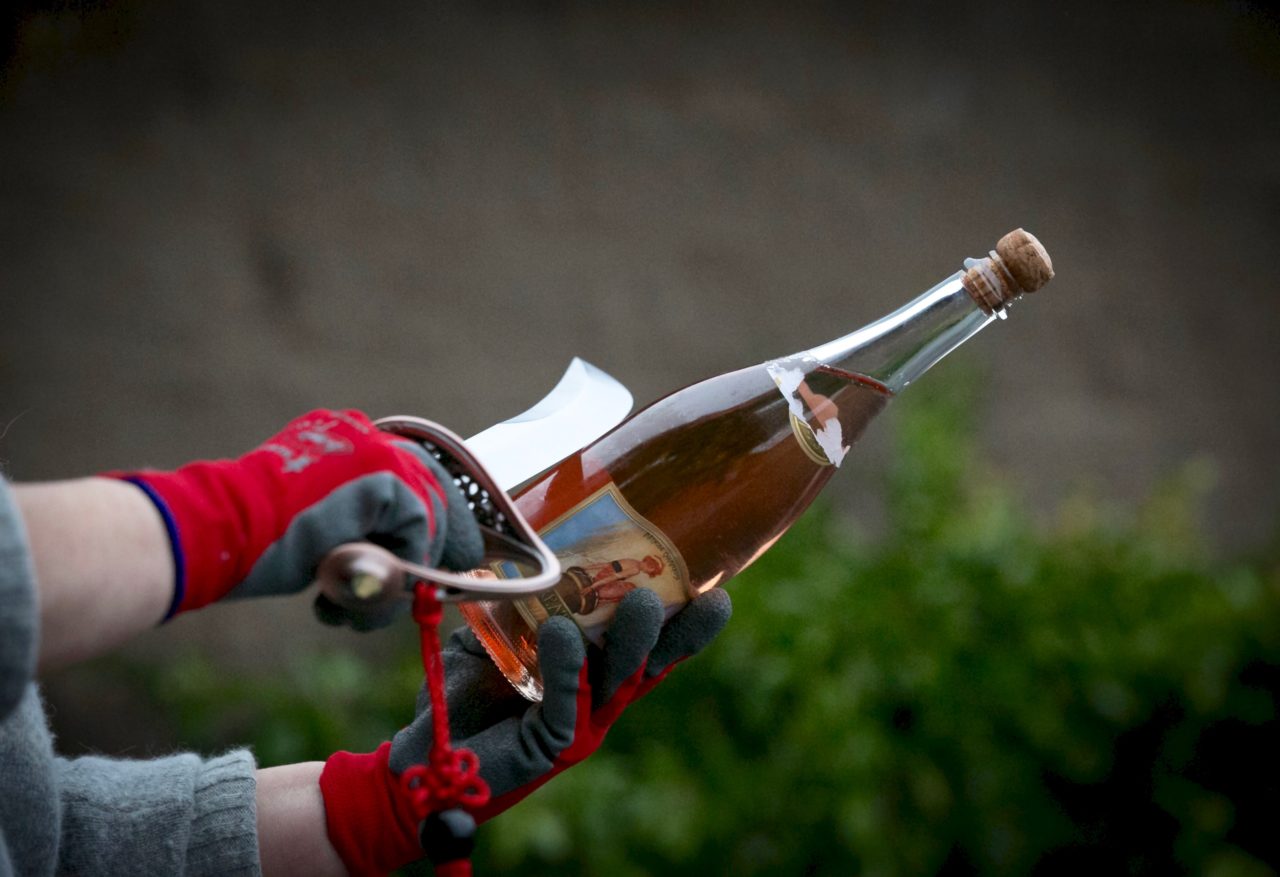
Top 3 for High-End Design
Ram’s Gate Winery, Sonoma: This hilltop destination in the Carneros gives off Belgian country vibes and was designed by Orlando Diaz-Azcuy, a member of Interior Design magazine’s Hall of Fame. ramsgatewinery.com
Reeve Wines, Healdsburg: Noah and Kelly Dorrance cofounded Healdsburg’s Banshee Wines in 2009, and Reeve, named for their son, is one of the couple’s two spin-off projects after Banshee. Kelly also runs a Healdsburg antique shop, and the tasting lounge here is decorated with her gorgeous finds. Events hosted here benefit Everytown for Gun Safety. reevewines.com
Marine Layer, Healdsburg: As envisioned by standout local interior designers The Hommeboys, this is a Moroccan-inspired lounge for cool-climate Pinot Noir and Chardonnay from the Sonoma Coast. marinelayerwines.com
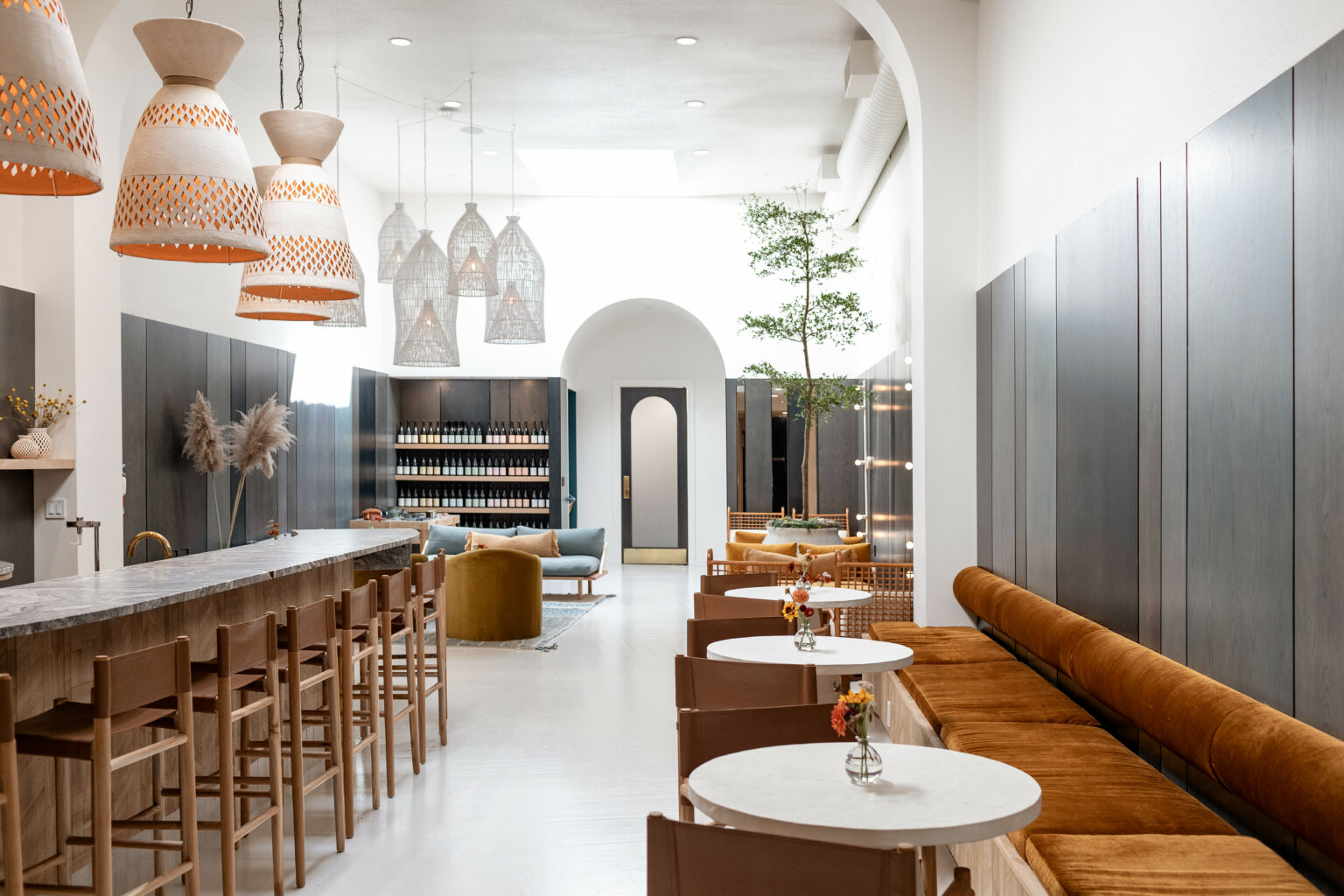
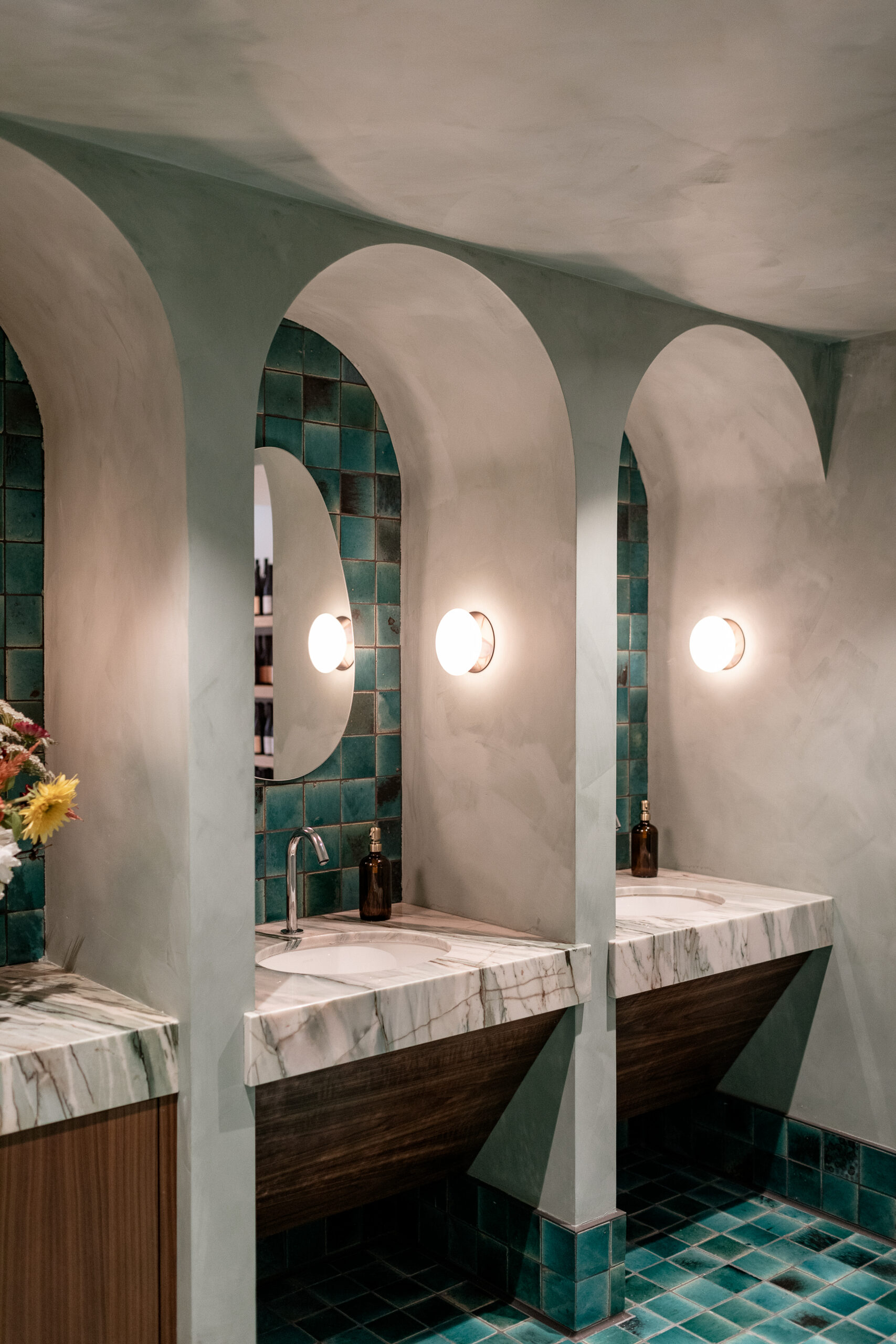
Taste With a Pro: William Allen, Two Shepherds
The Two Shepherds winery is low on glamour, says Allen, but rich in uncommon grape varieties. “You will often get to taste some really unusual things, like our Grenache Blanc, which we make as a normal white and as an orange wine,” he says. “Or we have a carbonic Carignan versus a regular Carignan, so we can show you the different expressions.”
When friends ask for winery recommendations, Allen often sends them to the wonderfully laid-back Ryme Cellars in Forestville (rymecellars.com). “I love Megan and Ryan Glaab,” he says. “They make unusual varieties and their wines are super-awesome. They just have really fun, clean, interesting things that you’re not going to find in a lot of places, and it’s super-upbeat.” Two Shepherds Winery, tastings from $20. 7763 Bell Road, Windsor. 415-613-5731, twoshepherds.com
“I Want to Support Sustainable and Regenerative Farming.”
Medlock Ames Winery: Co-founder Ames Morison is an industry thought leader in sustainability planning and new trends in organic viticulture. A sound-immersion tour ($75) of their Bell Mountain Ranch property is an introduction to his approach. From $65. 13414 Chalk Hill Road, Healdsburg. 707-431-8845, medlockames.com
Hanzell Vineyards: Award-winning Chardonnay and Pinot Noir are created here in balance with organic vegetable gardens and orchards. Ducks and chickens wander the vineyards and a herd of fire-suppression pigs (yes, pigs!) loosen soils and tramp down overgrowth. $65. 18596 Lomita Ave., Sonoma. 707-996-3860, hanzell.com
Benziger Family: Winery Mike Benziger is a leader in biodynamic grapegrowing, a holistic method attuned to building the strength of the soil. On a tram tour into the vineyards ($35), learn about biodynamics and see the farm’s insectary gardens. From $75. 1883 London Ranch Road, Glen Ellen. 888-490-2739, benziger.com
Ridge Vineyards, Lytton Springs: The solar-powered winery is made of straw bales plastered over with vineyard clay, an insulated design that stays cool in summer and warm in winter. The estate Zinfandel vines are more than 115 years old and have thrived after the changeover to organic practices. From $30. 650 Lytton Springs Road, Healdsburg. 707-433-7721, ridgewine.com
DeLoach Vineyards: The estate has been farmed biodynamic ally since 2009, and tasting room guests are invited to tour the “Theater of Nature,” as they call it — a wander through 20 acres of culinary gardens and vineyards. From $35. 1791 Olivet Road, Santa Rosa. 707-755-3300, deloachvineyards.com
Quivira Vineyards: Want to talk green? Ask about the epic 500-yard compost pile that nourishes the gardens and fields. Quivira is a model of integrated, diversified farming with organic vegetables, flowers, and livestock among the grapes. From $35. 4900 West Dry Creek Road, Healdsburg. 707-431-8333, quivirawine.com
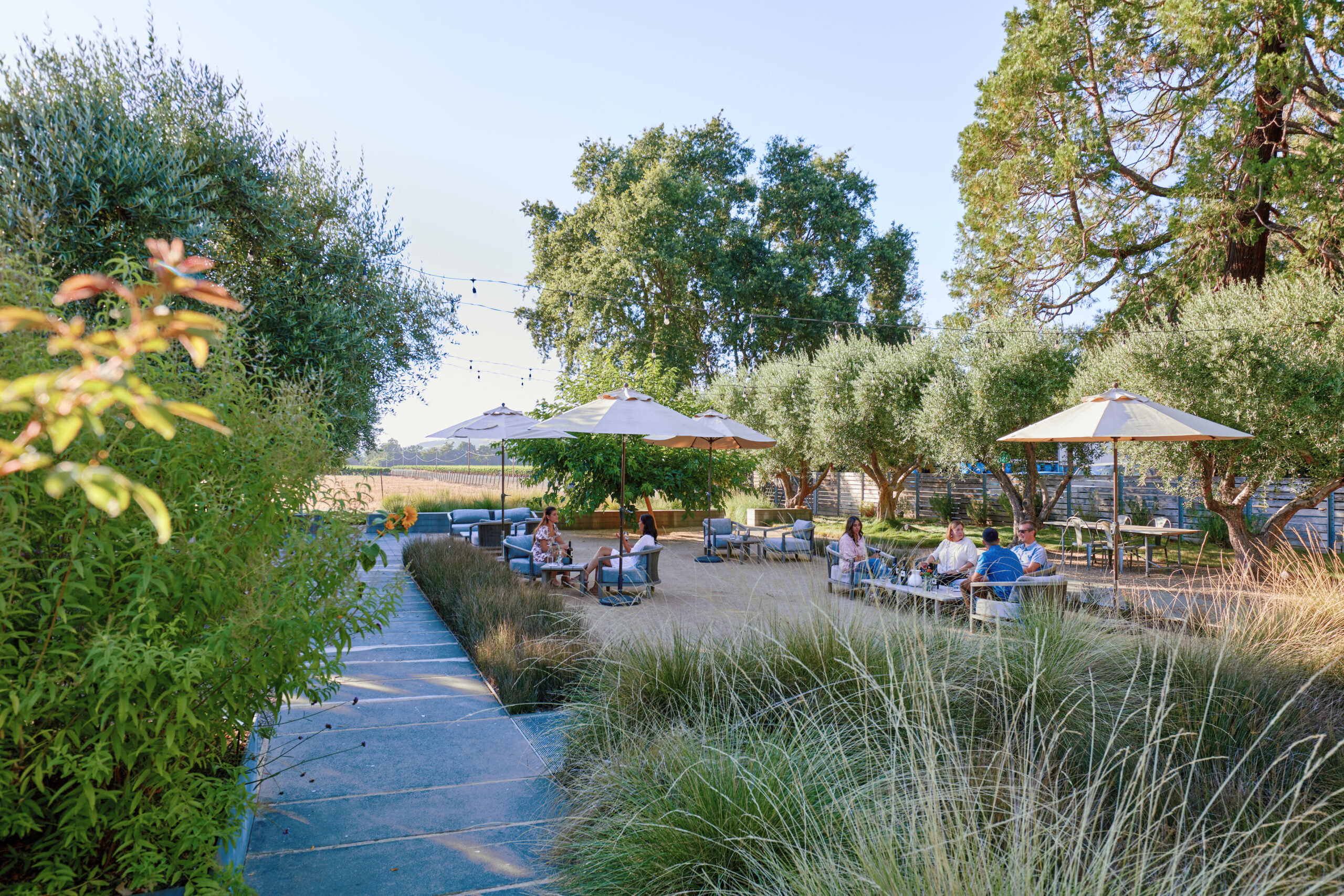
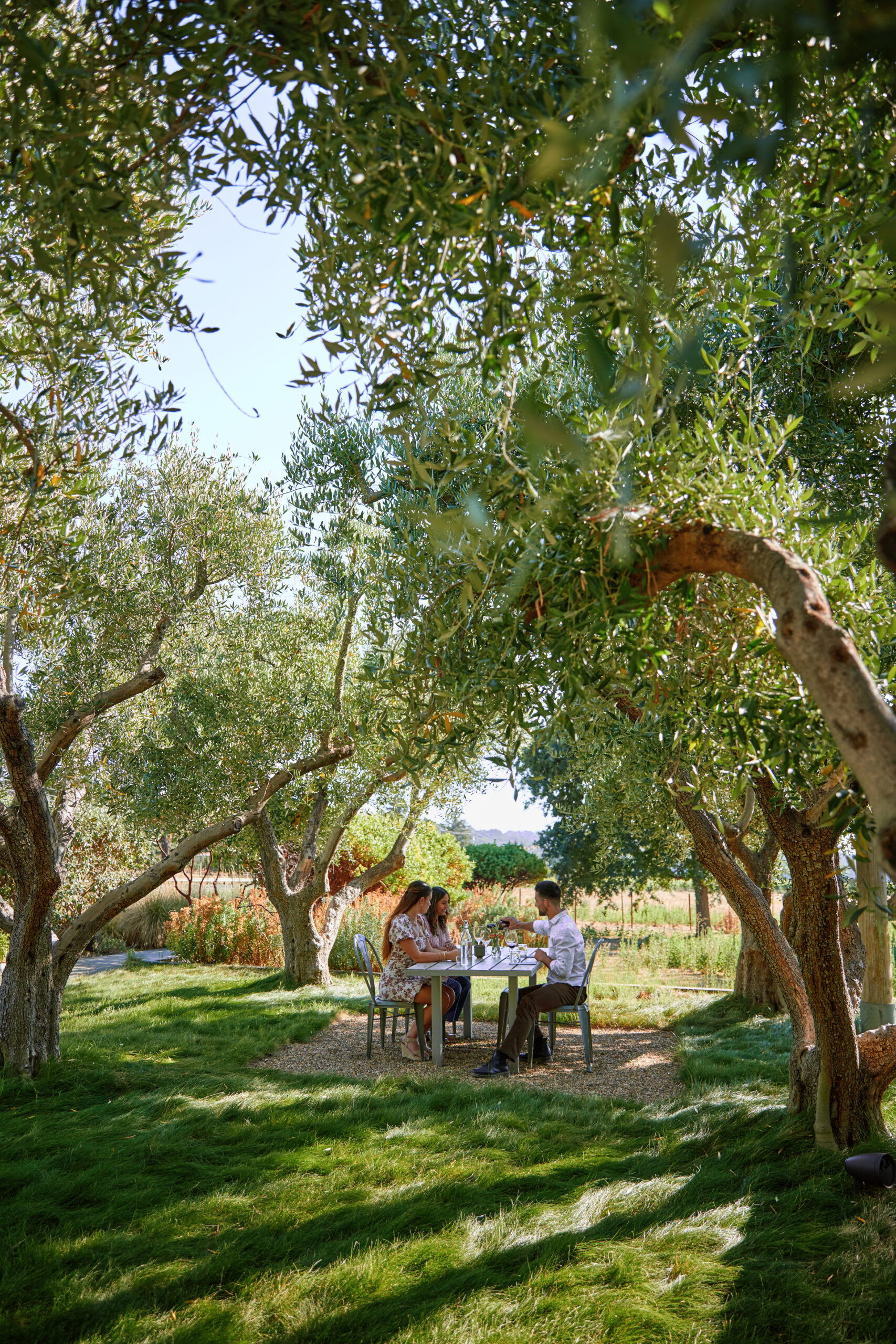
AVA Spotlight: Dry Creek Valley
Zinfandel lovers make a pilgrimage to Dry Creek to taste this inky, feisty varietal, which thrives on the long, full days of abundant sunshine tempered by cool breezes from the Pacific Ocean. In addition to Zin, other varieties that grow well there include Sauvignon Blanc, Cabernet Sauvignon, Syrah and Grenache.
The indomitable Dave Stare of Dry Creek Vineyard helped shape the course of the valley and establish it as an AVA. The Nalle family of Nalle Winery are Dry Creek pioneers who farm 100-year-old Zinfandel ines. Several families have wineries that go back generations here: A. Rafanelli Winery, Seghesio Family Vineyards, Rochioli Vineyards & Winery and Pedroncelli. And don’t miss the views from the tasting room at Cast Wines, which span nearly the entire valley.
Taste With a Pro: James McCeney, Patz & Hall Winery
The winemaker joined the P&H team in May 2023 and enjoys popping out of the cellar to greet guests and share what drew him to the storied winery, founded in 1988.
“One of the things that makes Patz & Hall so special is our deep relationship with our growers,” he says. “Throughout our tasting room, we proudly display images of these farming families.” He also gets a kick out of sharing secret treasure vineyards. “If you enjoy our Zio Tony Ranch Russian River Chardonnay, this makes you a true insider — it’s a New World mirror of a Premier Cru Chablis with a mouthwatering taught, crystalline acidity.”
If not hosting at the P&H Sonoma tasting room, he often takes friends to Domaine Cameras (domainecarneros.com). “I live just over the county line in Napa, off Old Sonoma Road, so it’s a great spot for sparkling wine made from Sonoma Carneros grapes.”
Patz & Hall Winery, 21200 Eighth St. E., Sonoma. 707-265-7700, patzhall.com
No Car Needed: Downtown Healdsburg
Healdsburg’s compact downtown, organized around a central plaza like several other local wine towns, is another spot to wander all day without starting up the car.
A tasting at Matt and Sara Licklider’s Lioco Winery is like a visit to your coolest friend’s even cooler house, with interesting light fixtures and art prints on the wall. Record player aside — yes, there’s that, too — they’re known for stellar Chardonnay, Pinot Noir and Carignan with an emphasis on older vines, unique soil types and heritage clones.
On North Street, BloodRoot Wines hosts vinyl record spin sessions and pét-nat and pupusas nights. Alan Baker of Cartograph Wines worked in public radio production in Minnesota for decades before realizing his winemaking dream with wife Serena Lourie.
And Centennial Mountain (formerly Aeris, for the Latin word for air or climate), celebrates founder Kevin Harvey’s love of Piemontese varieties, including Carricante, an aromatic white grape that grows beautifully on Sonoma’s Centennial Mountain Vineyard. It’s believed to be one of the only plantings of the rare variety in the state.
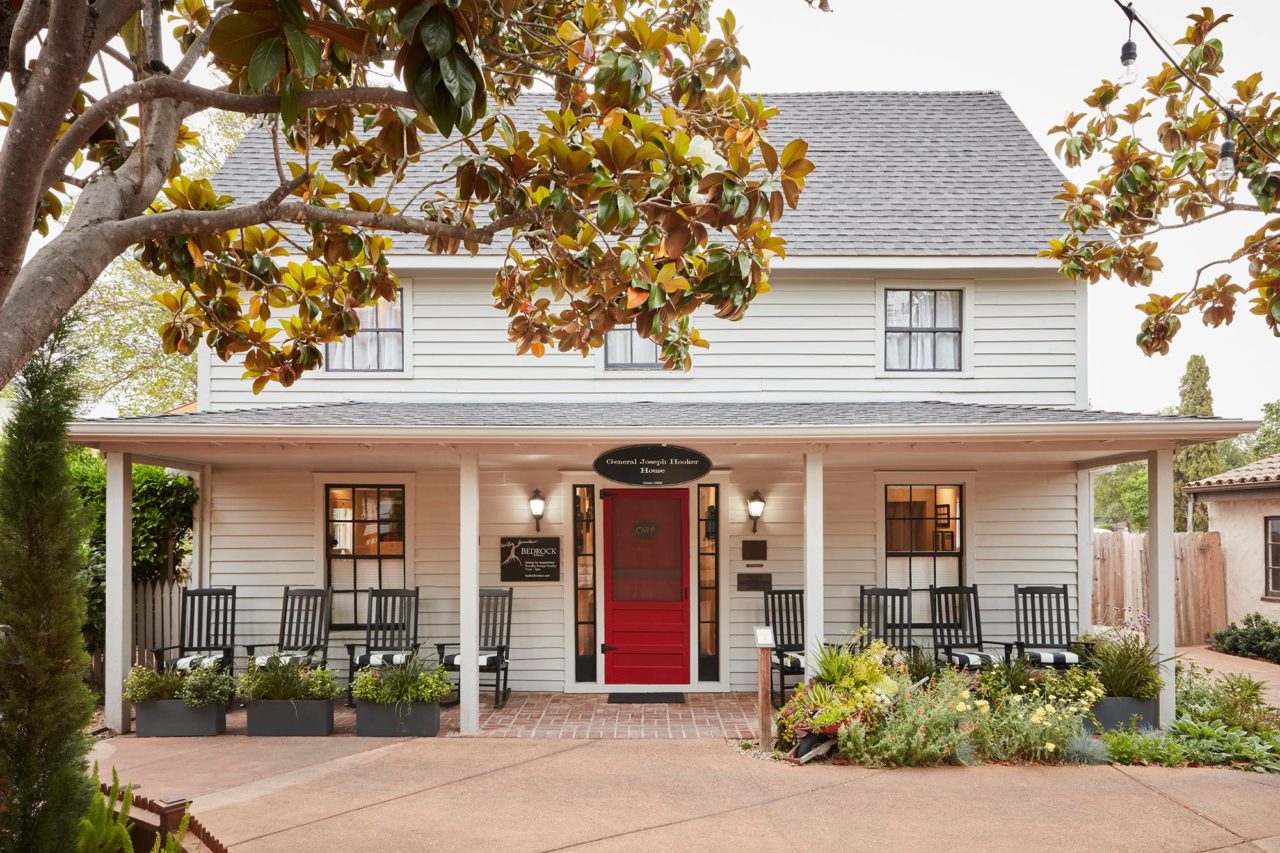
The intrigue of Bedrock Wine Co. lies in complex, character-driven wines from historic vineyards over a century old. Winemaker Morgan Twain-Peterson’s Sonoma tasting room occupies the 1852 home of Civil War general “Fighting Joe” Hooker — a coincidence given that Twain-Peterson also farms Hooker’s 130-year-old vineyard just outside town. From $45. 414 First St. E., Sonoma. 707-343-1478, bedrockwineco.com
Trail runners and mountain bikers can purchase a oneday pass to access vineyard trails with gorgeous views at Notre Vue Estate Winery & Vineyards outside Windsor. A 350-acre wildlife preserve surrounds the vineyard blocks. notrevueestate.com
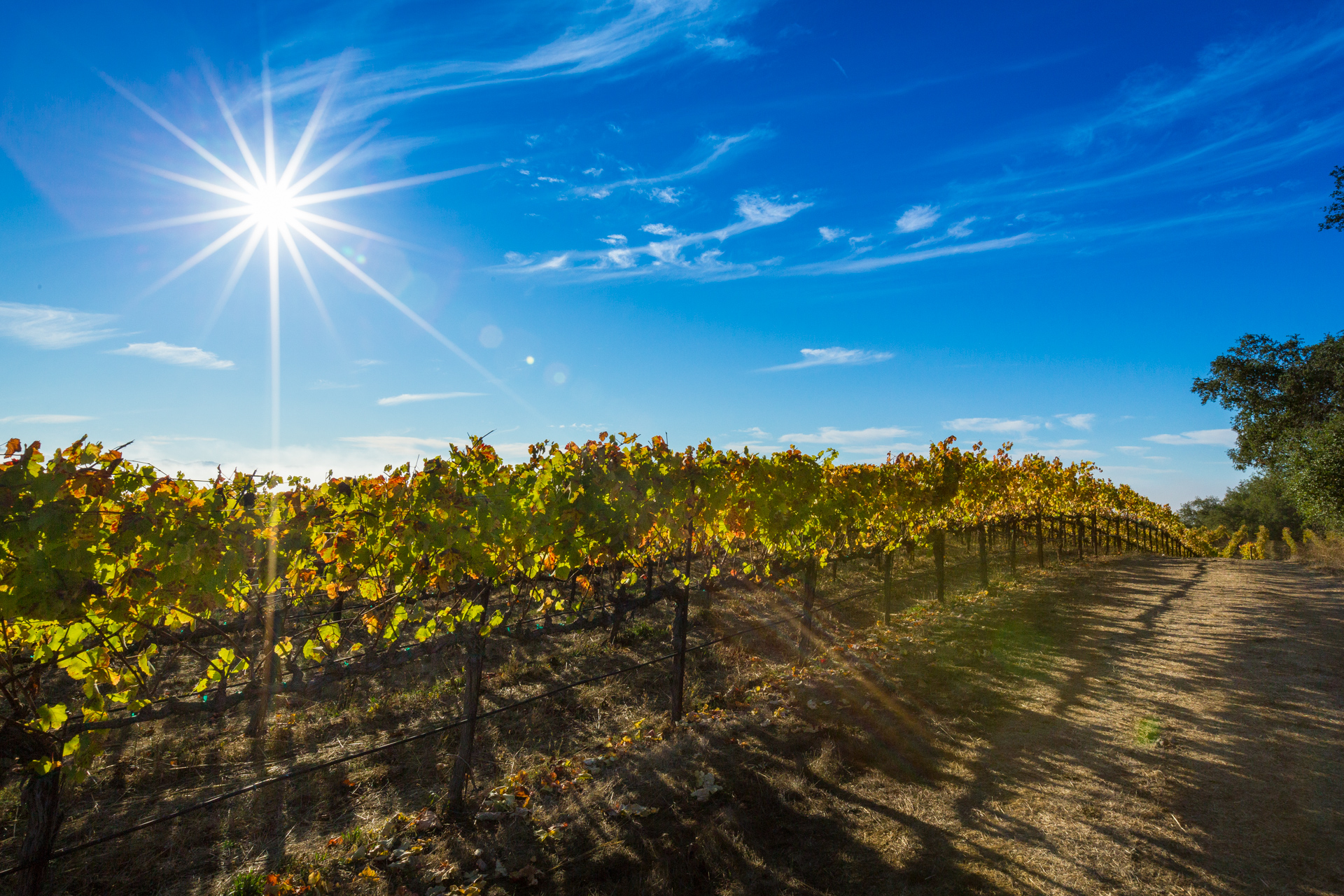
Top 3 for Trying Unusual Varietals
Idlewild Wines, Healdsburg: Owner Sam Bilbro loves Italian Piedmont wines, so that’s what he makes, in a rainbow array of single varietal masterpieces, including jasmine tea-white peach Arneis and tart strawberry-violet Freisa. idlewildwines.com
Old World Winery, Fulton: Celebrating natural, biodynamic wine, owner Darek Trowbridge adds nothing to his juice except a minimal amount of protective sulfur. Focusing on field blends from 120-year-old vineyards, he crafts very rare varietals such as Muscadelle, Trousseau Gris, Palomino and Mondeuse Noire. oldworldwinery.com
Sunce Winery & Vineyard, Santa Rosa: Owners Frane and Janae Franicevic cultivate a global snapshot of four dozen- plus wines, including rare Lagrein, Negroamaro, Rosa del Peru and Trincadeira varietals. suncewinery.com
By the team of Tina Caputo, Sarah Doyle, Imane Hanine, Heather Irwin, Peg Melnik, Abigail Peterson and Carey Sweet.
The post The Ultimate Guide to Sonoma Tasting Rooms appeared first on Sonoma Magazine.
]]>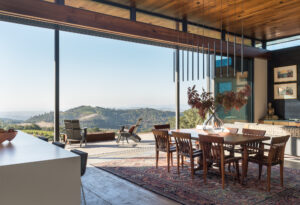
High above the town of Sonoma, the screenwriter/winemaker and his wife built a rammed-earth contemporary home that overlooks beloved vineyards.
The post Peek Inside ‘Karate Kid’ Screenwriter’s Japanese-Style Sonoma Home appeared first on Sonoma Magazine.
]]>


































Along the southwestern slope of the Mayacamas, some 1,400 feet above the town of Sonoma, screenwriter and vintner Robert Kamen and his wife, Evonne Kamen Sproat, live in a much-longed-for contemporary Japanese-style hilltop home.
It is their oasis and their dream, they say—a place they never really imagined they would call home. But here, surrounded by 50 acres of organically grown Syrah, Cabernet, and Sauvignon Blanc, along with centuries-old oaks and heritage olive trees, the couple feels at peace.
At sunset, they relax on the expansive deck in modern chairs that hint of an Adirondack past, sipping a rosé made by Robert from grapes grown on the property, with their two standard poodles at their side, siblings named Kashmir and Kaia. The view they take in at the end of each day together sweeps broadly across the entire San Francisco Bay, with silhouettes of Mount Tam, the bridges, and even Mount Diablo.
The couple say it’s serendipity that brought them to this life, at this rugged site and on this rugged land, which lies 5 miles uphill from downtown Sonoma, the last two of those miles along a mostly dirt road.
“I live a 24-hour romance with the vineyard and with Vonnie. We live in the bubble of love,” explains Robert, a screenwriter known for “The Karate Kid,” “Taps,” “The Fifth Element,” and some two-dozen other blockbuster films. “I just knew I always wanted to live here, and I found the perfect person to do it with. If there’s someone who likes living here more than me, it’s Vonnie.”
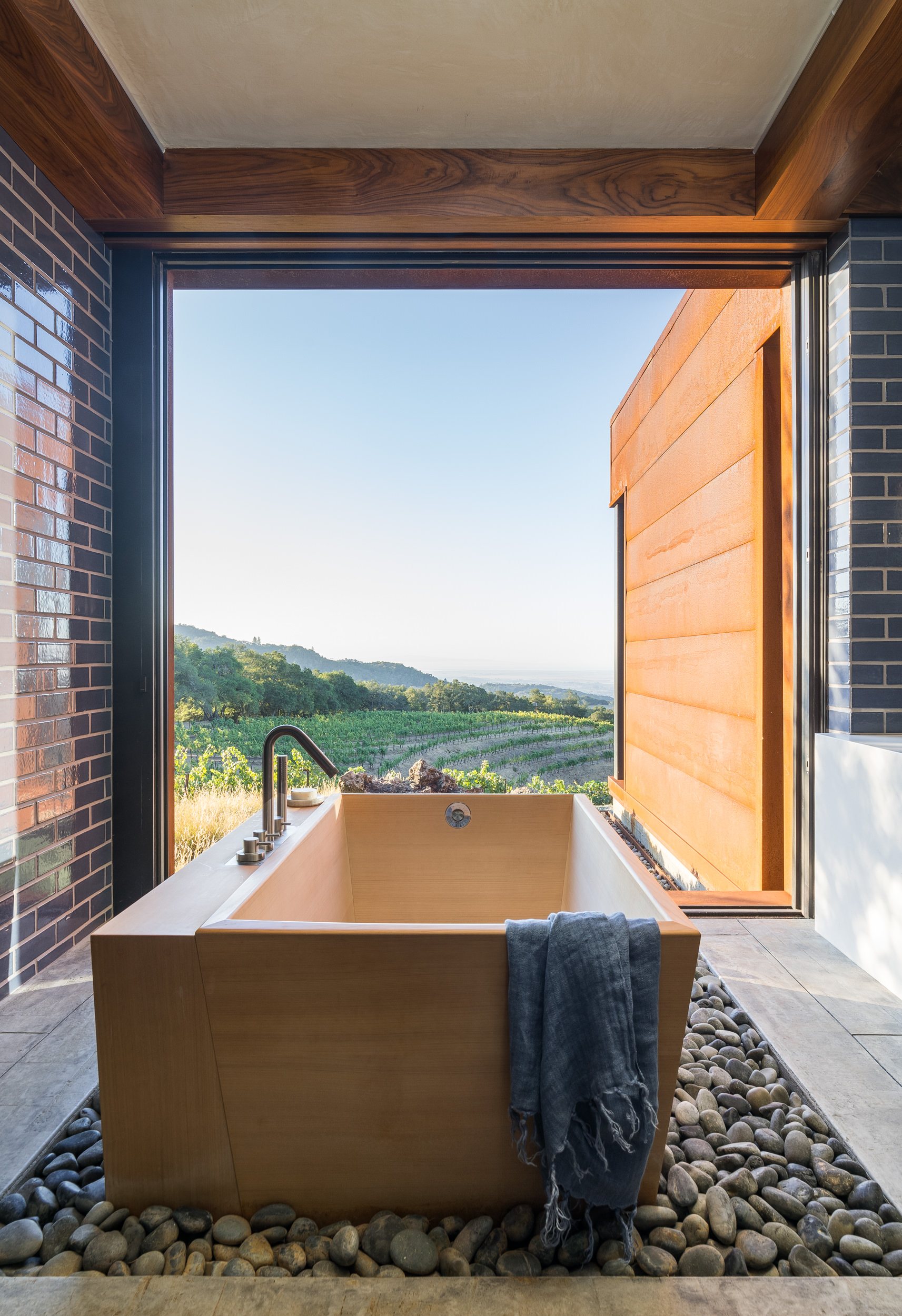
Back in the late 1970s, it was Robert who stumbled upon the site of his home while on a hike with a friend. At the time, the place was strewn with rocks and ryegrass, but Robert found himself utterly seduced by the view. He put down $135,000 to buy the land, the entire paycheck from the first screenplay he ever sold. It was a leap of faith for sure, as there was no electricity at the site, no water, not even a road. Essentially, he bought the view.
For a couple of years, Robert simply hiked and explored the land, getting to know the place. Later, the Bronx native built a simple, rustic studio on the property—a retreat from his apartment on Central Park in New York City, where he raised three daughters from an earlier marriage.
Viticulturist Phil Coturri helped Robert plant his first organic vineyard, convinced that the rocky, volcanic soil could grow great wine. Kamen Estate’s first harvest was in 1986, and for a while, Robert sold the fruit to other producers. But soon, he was drawn to the allure of winemaking, and the first Kamen Estate release was bottled in 1999.
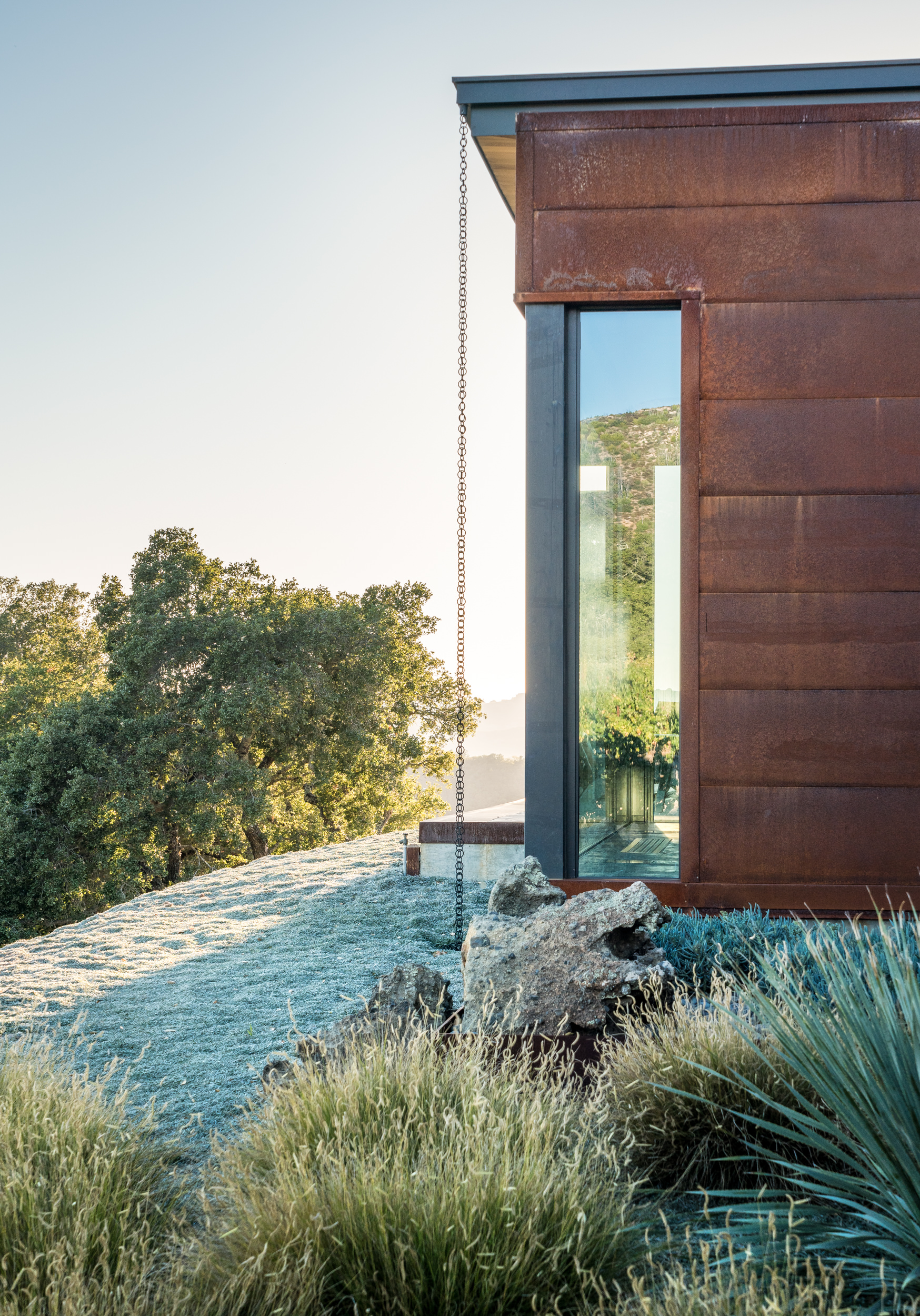
Robert left New York to live full time in the small studio on the vineyard in 2010. But these days, he and Evonne, who have been together 11 years, live in a larger Japanese-style contemporary home, designed by Santa Rosa architect Jessie Whitesides of Asquared Studios and completed in 2019.
The day of their first project meeting, Whitesides started sketching out designs with a black marker. “He said it needed to be a pretty simple thing,” recalls Whitesides. “I said ‘I see a couple of interlocking boxes, flat roof.’” And that was it—the basic vision for the project was in place.
“I probably never would have built the house without Vonnie,” Robert says of the three-year construction project Whitesides and her team oversaw. Evonne, a native of Hawaii of Japanese heritage, has always been drawn to the outdoors. She traveled all over the world for 44 years as a flight attendant.
Early in their relationship, Evonne told Robert the story of a fellow flight attendant who envisioned that she would one day live in the mountains near the ocean, surrounded by greenery. Driving up to the vineyard with Robert for the first time, Evonne thought, “My god, this is what she was talking about.”
Perched atop a steep hillside and divided into a series of three interlocking boxes, the couple’s 4,000-square-foot home has just one bedroom and a single office, lit throughout by floor-to-ceiling windows. A natural palette of Corten steel, wood, and glass blends with the surrounding property and with the textural striations of the rammed-earth walls.
The 8-foot-tall windows, imported from Portugal at a cost of nearly $1 million, are an essential feature of the design. “We take great pleasure in them, because our whole idea was we wanted to live inside and outside,” says Robert. “If it’s 100 degrees, we want to live inside. If it’s pouring rain, we want to live inside. But the rest of the time we want an inside/outside environment, and the windows afford us that.”
A marble Buddha greets guests as they enter the home through a massive oak front door, which pivots to open directly into the great room, where the view sweeps out through the windows to the spectacularly layered landscape beyond.
An open kitchen flanks one side of the entry, with an entertainment area at the other side. Nearby, there’s a yoga room with soaring windows, a wine storage area, and a Japanese-style bathroom with an elevated shower and soaking tub, opening to a zen garden.
Robert and Evonne have filled the home with art they’ve collected, including rugs, paintings, and textiles, many by friends and family. The early 1900s Japanese silk kimono Evonne’s grandfather’s wife wore for her wedding hangs on the bedroom wall, and polished Hawaiian driftwood sculptures made by Evonne’s mother share space with tapestries and paintings from Dutch actor Jeroen Krabbé.
Robert still writes daily in his large office on a desk inlaid with mother-of-pearl, which he purchased long ago in India, near the Taj Mahal. Photographs of his three daughters are displayed on long, open shelves, alongside piles of scripts from over the years, each inked on the side with the name of the film.
Robert and Evonne insist on a simple, purposeful life up in the hills, marked by long walks with their dogs through the vineyards, alfresco lunches, and evenings surrounded by the view. Robert writes in his office most mornings and practices karate daily, a habit he’s kept since he was 17 years old. Later, the couple might head down the hill to the Kamen Estates tasting room on the square in town, or host wine club members on the skydeck near the house.
This time of year, the promise of the upcoming harvest is tangible, as clusters hang on the vine and crews of fieldworkers prepare for the pick. It’s often windy, but at other times, it’s perfectly still except for the beat of the workers’ radios—here and there, they might even catch someone singing and humming along as the grapes come in. The work comes hard and fast, usually starting in late August for the whites, and late September for the reds. “It is beautiful to hear,” Evonne says.
Evonne believes that the way their life experiences and cultures intertwine are no mere coincidence, coming back to the concept of serendipity. “His whole life has come full circle, don’t you think?” she says.
“Everything happens for a reason,’’ echoes Robert. “I didn’t buy this property to plant a vineyard. My entire ethos and nature was all formed in a city housing project in the Bronx. Who would have thought a skinny little kid with a big mouth would end up here?”
Resources
Architecture: Jessie Whitesides and Tony Garcia, Asquared Studios, Santa Rosa, asquaredstudios.com
Contractor: Richard Kirby, Annadel Builders, Santa Rosa, annadelbuildersinc.com
Landscape Architect: David and Nancy Roche, Roche + Roche, Sonoma, rocheandroche.com
Rammed Earth: Dan Alvarado, Rammed Earth Works, rammedearthworks.com
The post Peek Inside ‘Karate Kid’ Screenwriter’s Japanese-Style Sonoma Home appeared first on Sonoma Magazine.
]]>
Book a stay under the redwoods at this recently updated historic resort by the Russian River.
The post This Rustic-Luxe Cabin Resort in Sonoma Is the Cozy Winter Getaway You Need appeared first on Sonoma Magazine.
]]>


































Saying goodby to sun-soaked summer days isn’t easy, but come fall, a barely noticeable but seemingly magical current takes hold along the banks of the Russian River, encouraging us to catch our breath and slow down. Warm days linger on, but the tempo of life in the bohemian community of Guerneville changes, as the quieter season evolves into an opportunity to relax and reconnect.
Those in the know have been seeking solace in Guerneville for years.
But this once-sleepy spot has seen a recent resurgence in popularity that’s redefining what visitors expect. Several of the town’s historic lodgings have been made over in recent years, including The Stavrand and Casa Secoya, attracting a new generation of visitors seeking more high-end amenities and experiences.
In this context, Dawn Ranch first appeared on the scene in the spring of 2022—testing the waters, so to speak—before the resort’s new owners also purchased the neighboring Fern Grove property across Highway 116 and set to work reimagining the combined destination as an immersive wellness retreat.
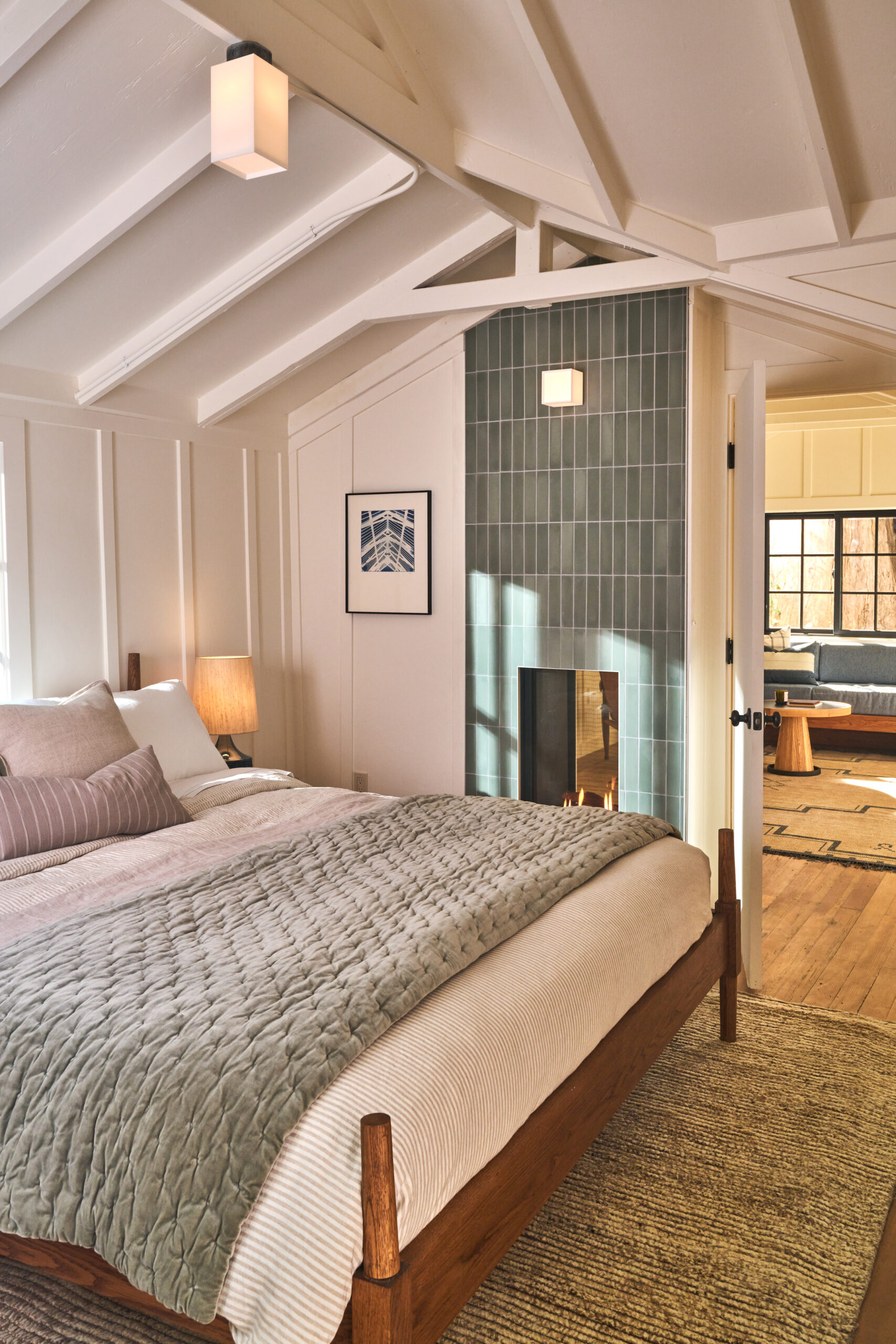
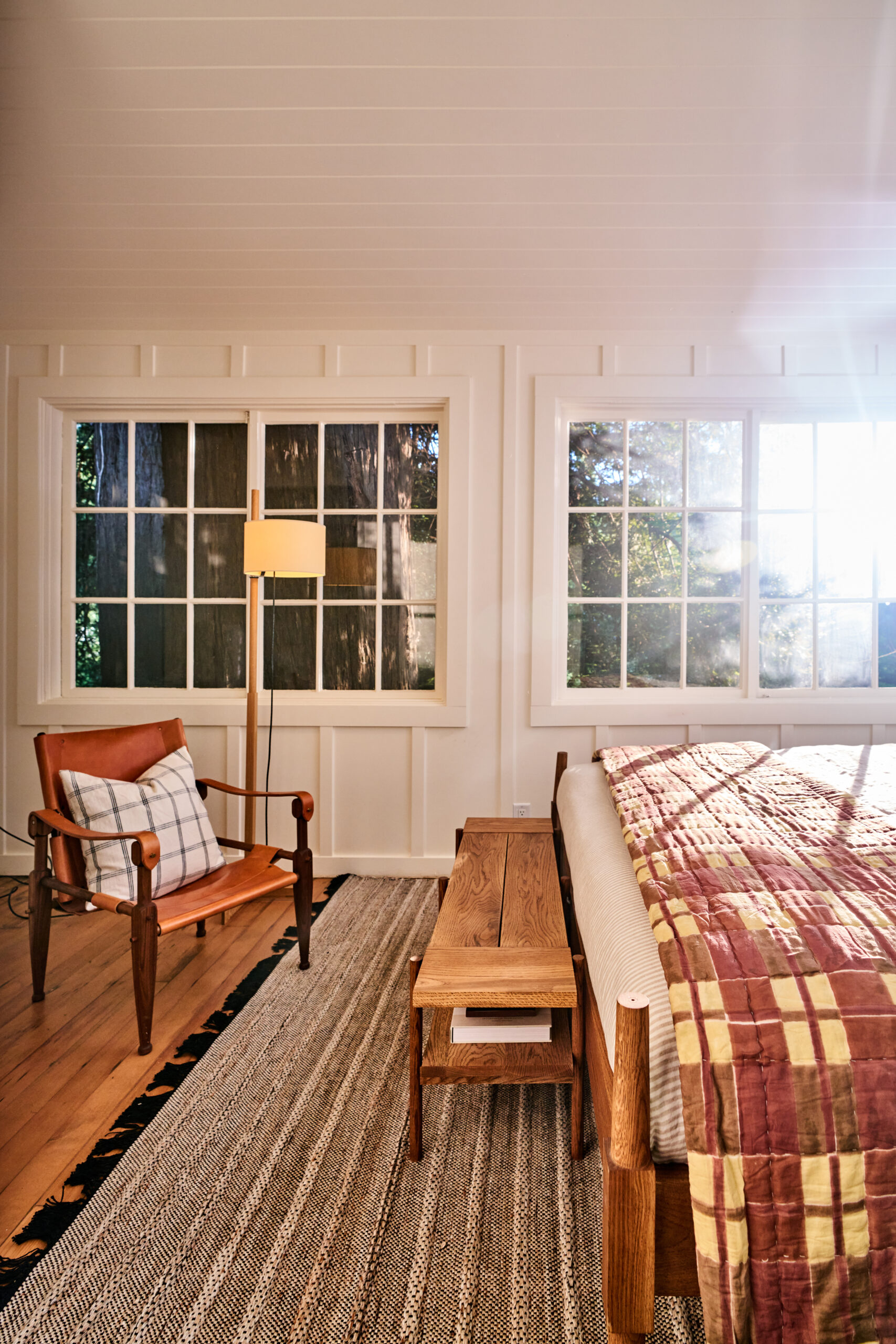
“Our design brings new life to a historic property, where the ocean meets Wine Country, and the river meets the southern edge of the redwoods,” says Atit Jariwala, CEO of Bridgeton Holdings, which operates Dawn Ranch and its sister resort, the Marram Montauk in New York. “With this sense of place in mind, we capture the inviting charm of a quintessential Northern California camping retreat to provide a livedin and grounding quality so guests can relax and gather inspiration to create.”
People have been gathering inspiration on these acres since 1905, when the Murphy family opened a resort with tent cabins and a dining hall, catering to wealthy San Franciscans looking for summer retreats on the Russian River. In 1978, it became Fife’s Resort, one of the first gay destination resorts in Sonoma County. Rebranded yet again as Dawn Ranch in 2005, the property operated as an events venue until floods in February 2019 forced the venue to close.
The Dawn Ranch guests experience today pays tribute to the resort of days past, shining light on its charmingly rustic bones while incorporating a more modern feel. The 81 newly renovated cottages and cabins feature four-poster beds and brutalist-style bedside cabinets, as well as hand-loomed rugs and unlacquered brass bathroom fixtures that will patina over time.
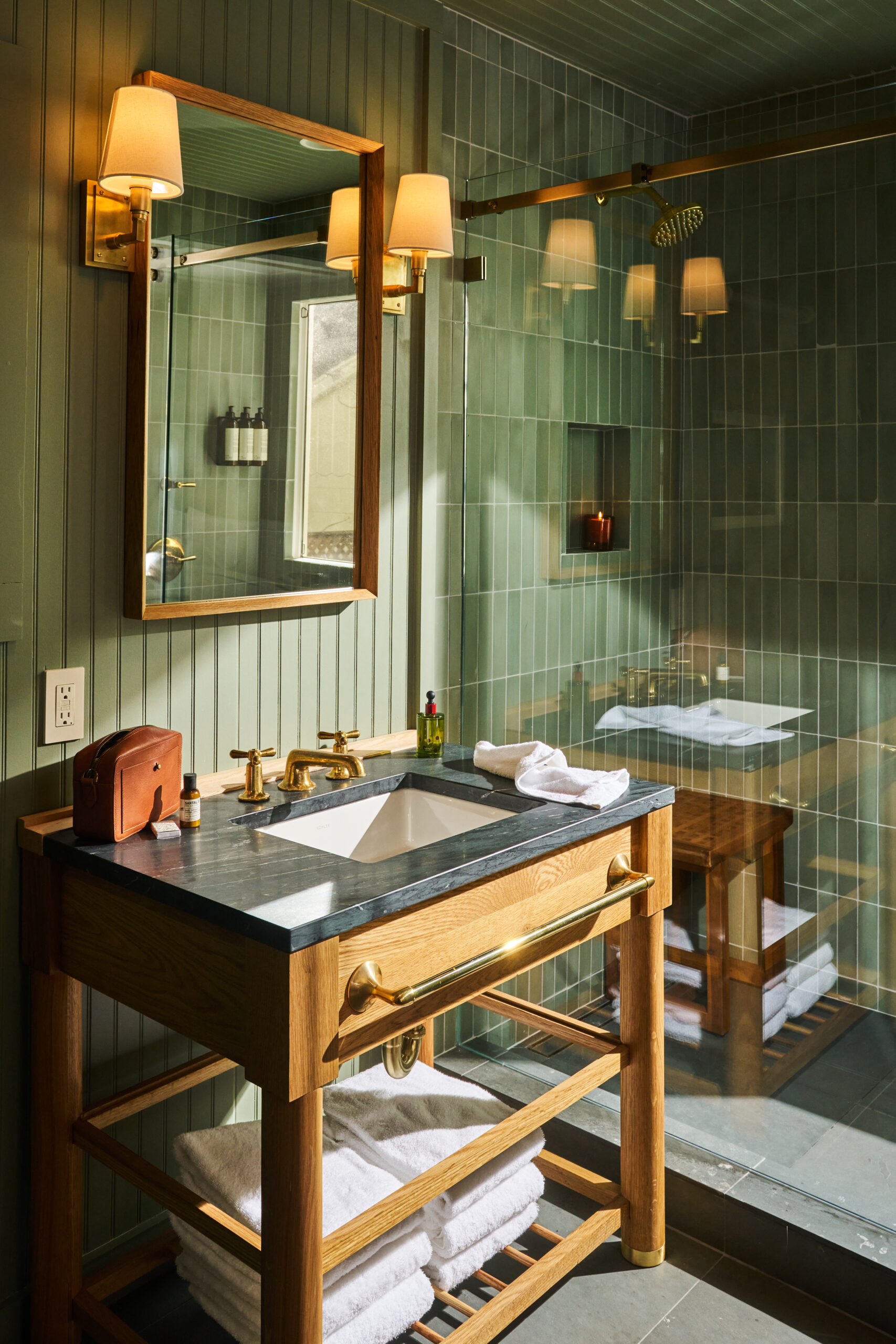
Accommodations come in a variety of configurations, ranging from luxe glamping tents and one-room cabins to two-bedroom bungalows with a full kitchen. You won’t find any televisions here, but the views of towering redwoods, the fragrance of dew-covered meadows, and the calming harmony of chattering bamboo canes will transport you to a calming oasis.
A bungalow that once served as the living quarters for the resort’s owner has been reimagined as a jewel box of a spa. Offering a variety of nature-inspired services, the trio of treatment rooms feature wood-paneled ceilings inspired by the home’s original millwork details.
However, it’s the chance to gaze at starry skies while lounging in one of the spa’s four Japanese ofuro soaking tubs that’s likely to leave the longest-lasting impression.
“Dawn Ranch was designed to rejuvenate guests’ creativity, to help them create their own indulgences in life, on the property or after their stay,” says Jariwala.
A plethora of wellness experiences ranging from yoga and meditation, to origami and beading workshops, take place throughout the resort on any given day. A simple chalkboard perched outside the open-air lobby reminds guests that days here are enriched with opportunities for renewal. Amenities the likes of Fender guitars, Swarovski wildlife binoculars, sketch books, journals, kayaks, and inner tubes encourage musings and exploration.
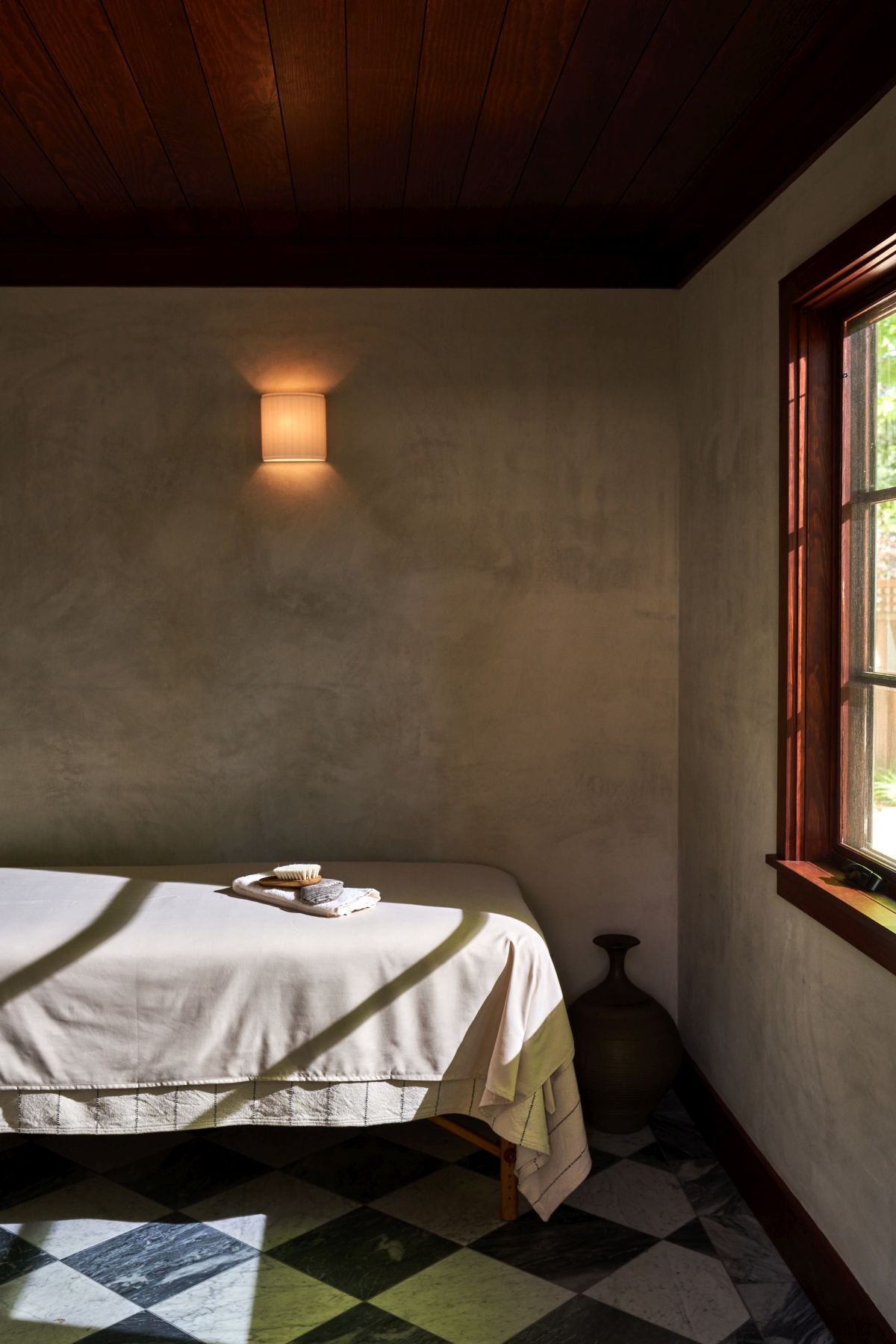
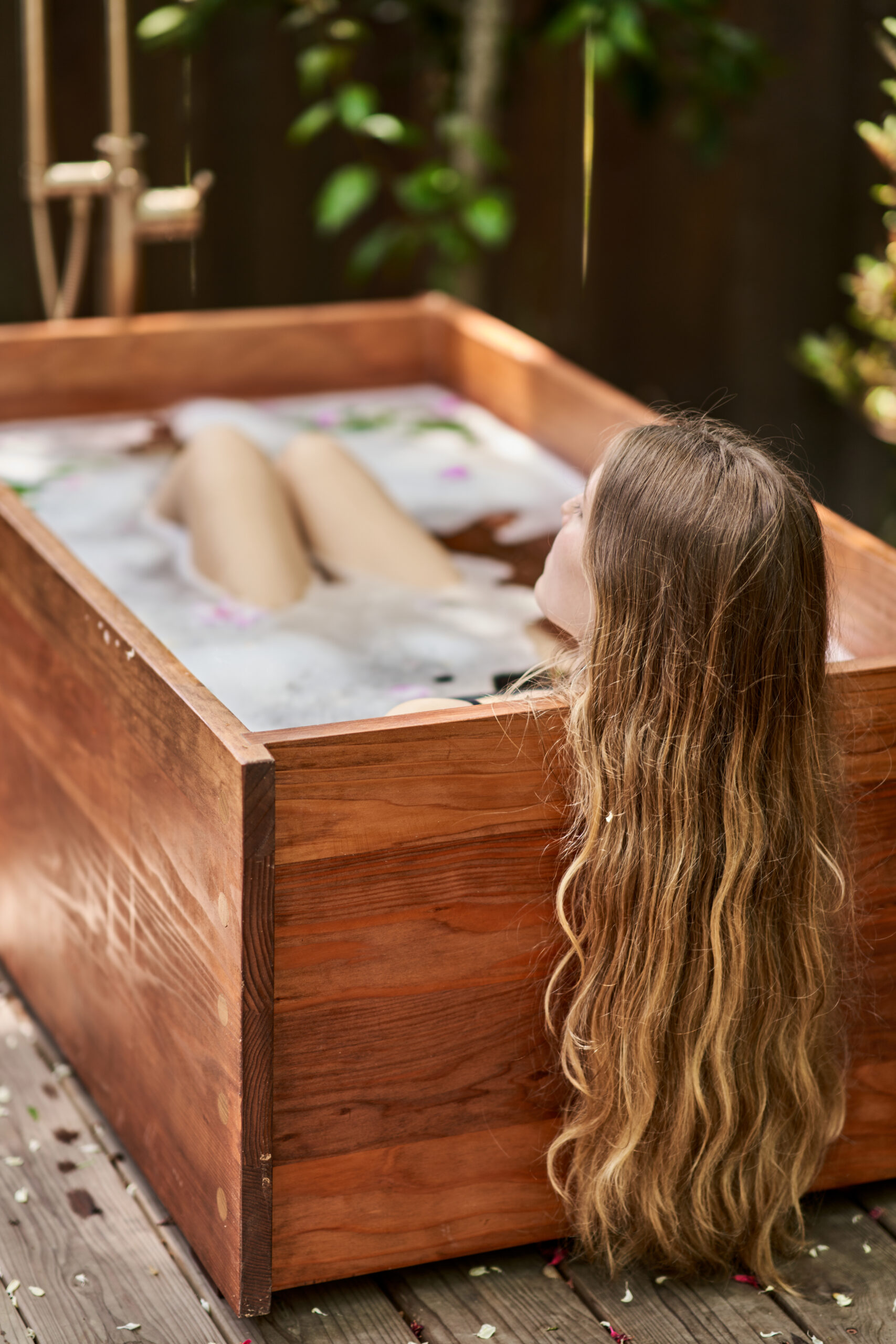
Original to the Dawn Ranch property, the 1900s-era lodge guests see when they first arrive is now home to a restaurant, bar and lounge area, where the original redwood paneling still shines behind the bar.
“We wanted to make the bar and lounge area a hearth and center place for guests to meet, plan their days, and indulge in a cocktail upon return,” says Jariwala.
“In doing so, we reorganized the design around the key forms of the building—revealing the gables of the ceiling and providing uplighting to accentuate them.”
A cool lime plaster now brightens public spaces, while allowing many of the lodge’s original details, like redwood flooring and trim, to shine. Luxurious velvet couches mix with organic wood furniture to bring the rustic texture and beauty of Dawn Ranch’s outdoor spaces inside.
The resort’s new restaurant, The Lodge at Dawn Ranch, debuted when the Guerneville landmark reopened Memorial Day weekend. Chef Juliana Thorpe, formerly of Napa Valley’s three-Michelin-starred Restaurant at Meadowood, and famed chef Fernando Trocca of Argentina have crafted a vegetable-forward menu with constantly changing offerings the likes of roasted beets with ricotta and pistachios, rainbow trout à la plancha, and wild mushroom risotto.
“My desire is for people to come here and to just get lost on the property and to let themselves wander,” says Teach Mayer, the resort’s manager.
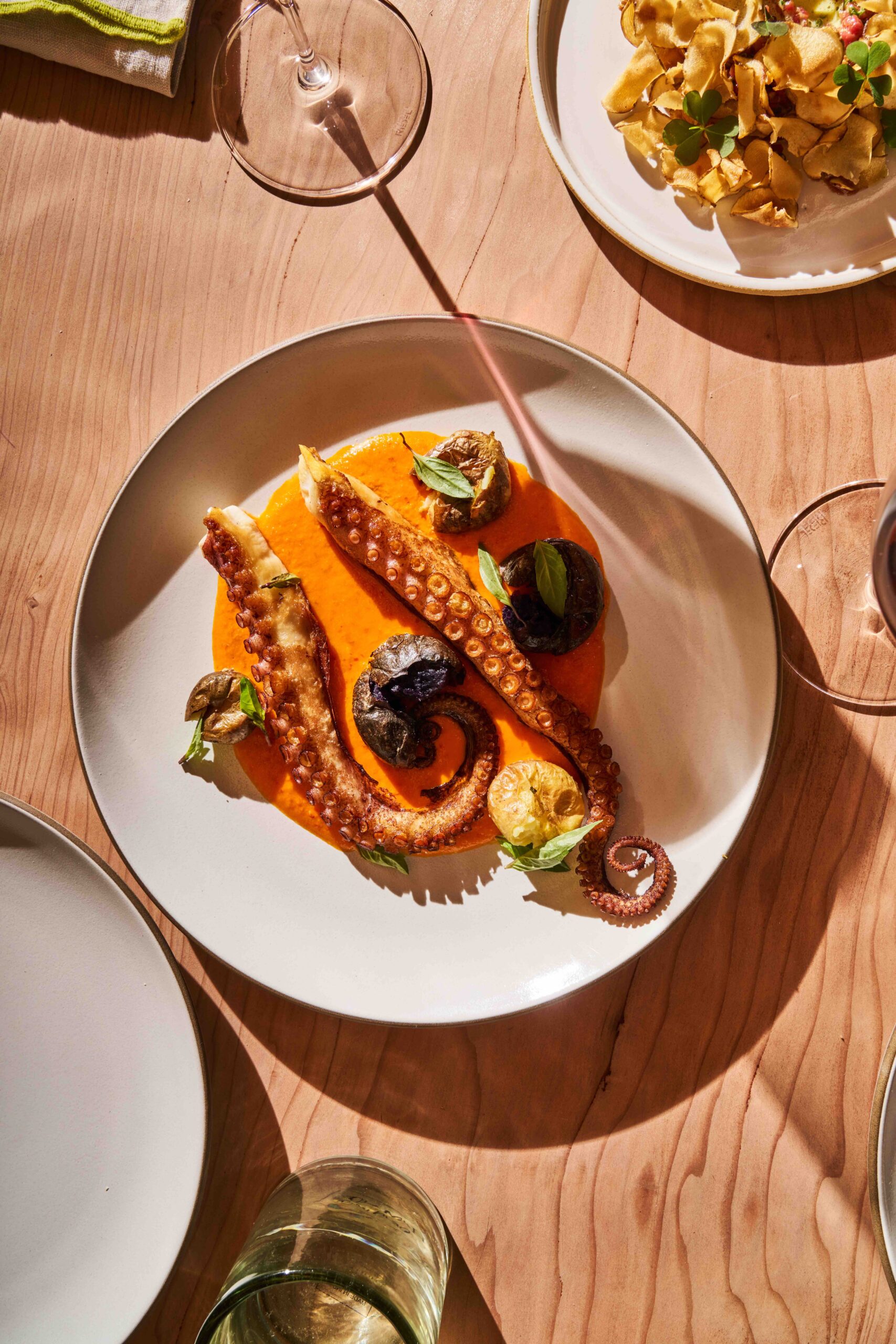
Those who dedicate time to roam often find themselves at the shoreline of the Russian River. Float and kayak trips extend the boundaries of exploration, but even just a quick dip of the toes is enough to slow down and appreciate the seemingly untouched beauty of this part of the county in fall.
Along with highly sought-after river access, the now 22-acre property boasts a diverse natural landscape that spans the river, multiple redwood groves, a small orchard, and meadows filled with wildflowers. Towering redwoods and giant bamboo mingle with persimmon, pear, and plum trees. The apple trees in the orchard, located between the Russian River and Fife Creek, are believed to be about 120 years old. And then there’s the property’s namesake, a pair of dawn redwoods, a rare and unusual member of the redwood family that dates to prehistoric times and were once thought to be extinct. Fall is the perfect time to linger in their shade, as their feathery leaves turn a vibrant shade of orange.
No one knows for sure how these two dawn redwoods came to be on the property. Legend has it that sometime around 1900, Mrs. Murphy, one of the resort’s original owners, may have allowed arborists working at the nearby Bohemian Grove to camp on her land for free in exchange for planting some of their saplings.
“Clearly, this did not happen just on its own,” says the resort’s Teach Mayer about the unusual and historic plantings. “Will we ever know? Probably not. But I love that story, and I love telling it.”
Rates at Dawn Ranch start at $450 per night. A second pool and restaurant, with a view of the property’s two namesake dawn redwoods, is planned for next summer. Dawn Ranch, 16467 Hwy. 116, Guerneville. 707-869-0656, dawnranch.com
The post This Rustic-Luxe Cabin Resort in Sonoma Is the Cozy Winter Getaway You Need appeared first on Sonoma Magazine.
]]>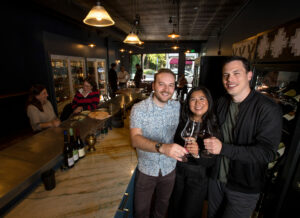
Sake, Champagne and a chance to taste a 40-plus-year-old wine at Maison Healdsburg, recently opened by a trio of SingleThread alums.
The post At Healdsburg’s Newest Wine Bar, Sip Excellent Wines Until the Early Hours appeared first on Sonoma Magazine.
]]>


































Given Healdsburg’s status as the epicenter of Sonoma County’s swankiest food and drink, Evan and Jade Hufford, along with their business partner Ryan Knowles, were surprised the town didn’t have a wine bar. There were plenty of wine tasting rooms, innovative cocktail bars, a live music-fueled pub, and multiple beer gardens. But a wine bar? Not since Bergamot Alley closed in 2018.
“Guests would frequently ask us if there was a wine bar in town, somewhere they could go for a late-night glass of Champagne,” says Evan Hufford, the former wine director at three-Michelin starred SingleThread. “For a long time, the answer was ‘no.’ To be honest, we wanted a wine bar, too, a place we could go to enjoy a glass after work. So we decided to open one ourselves.”
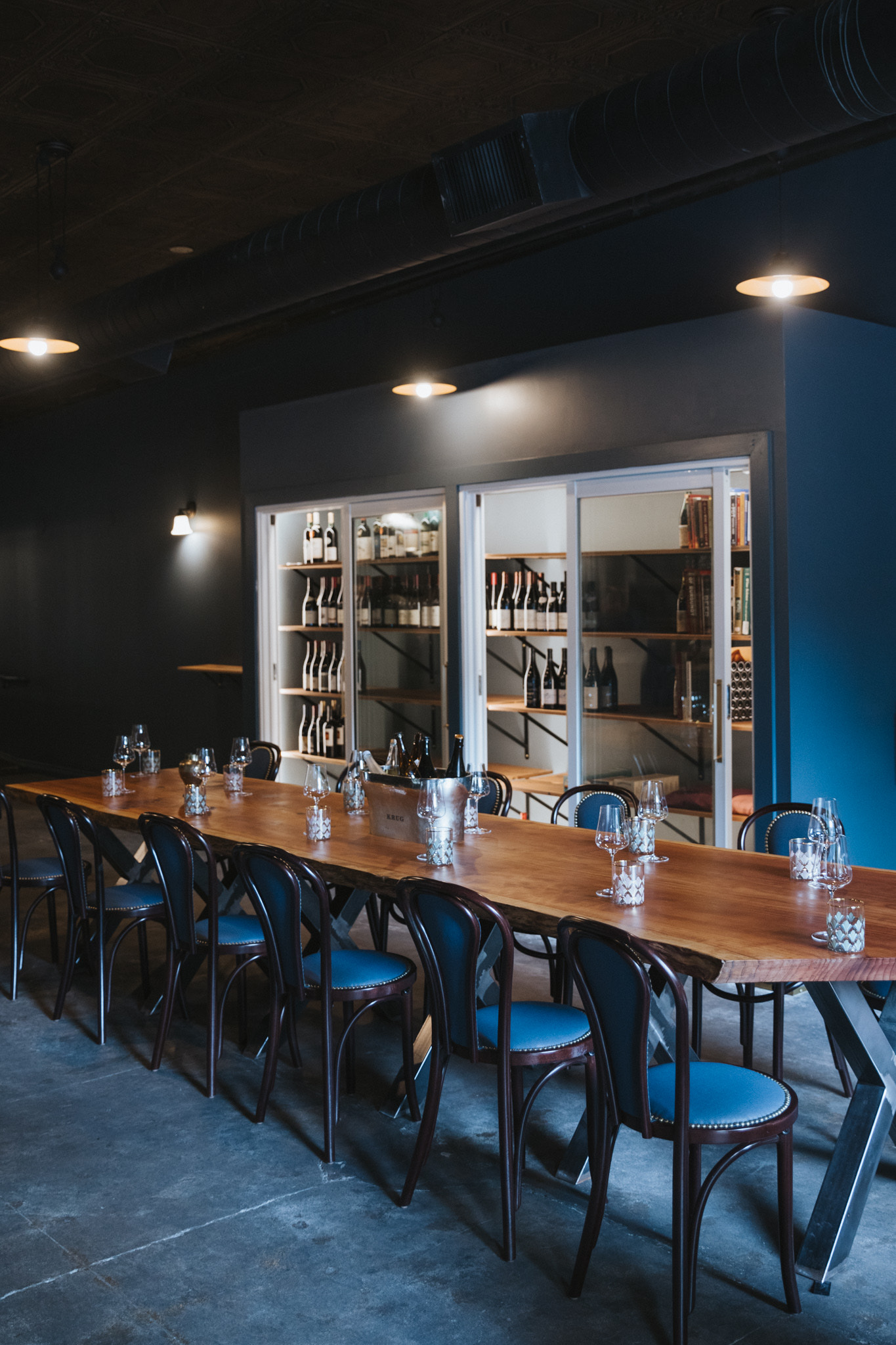
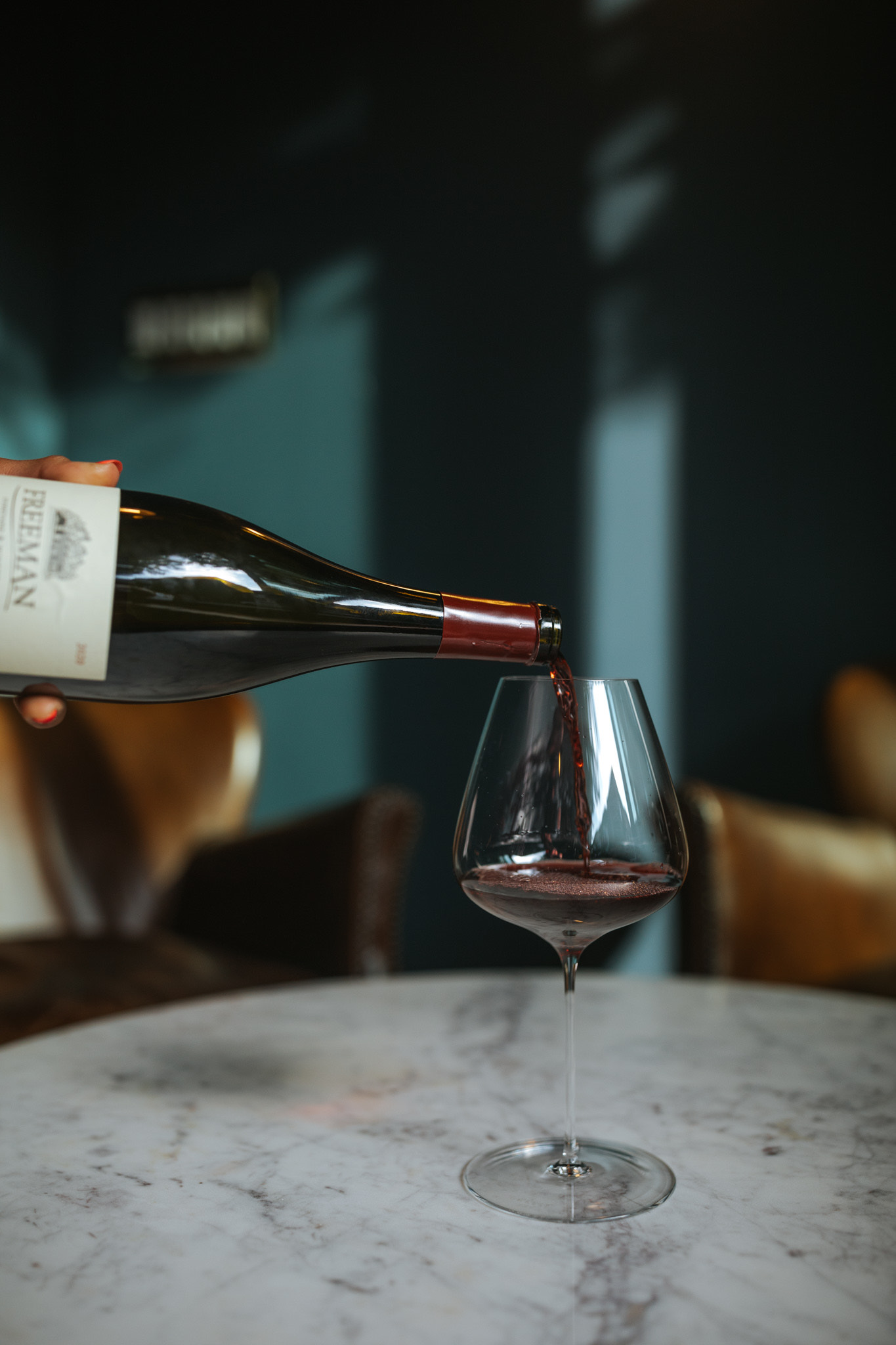
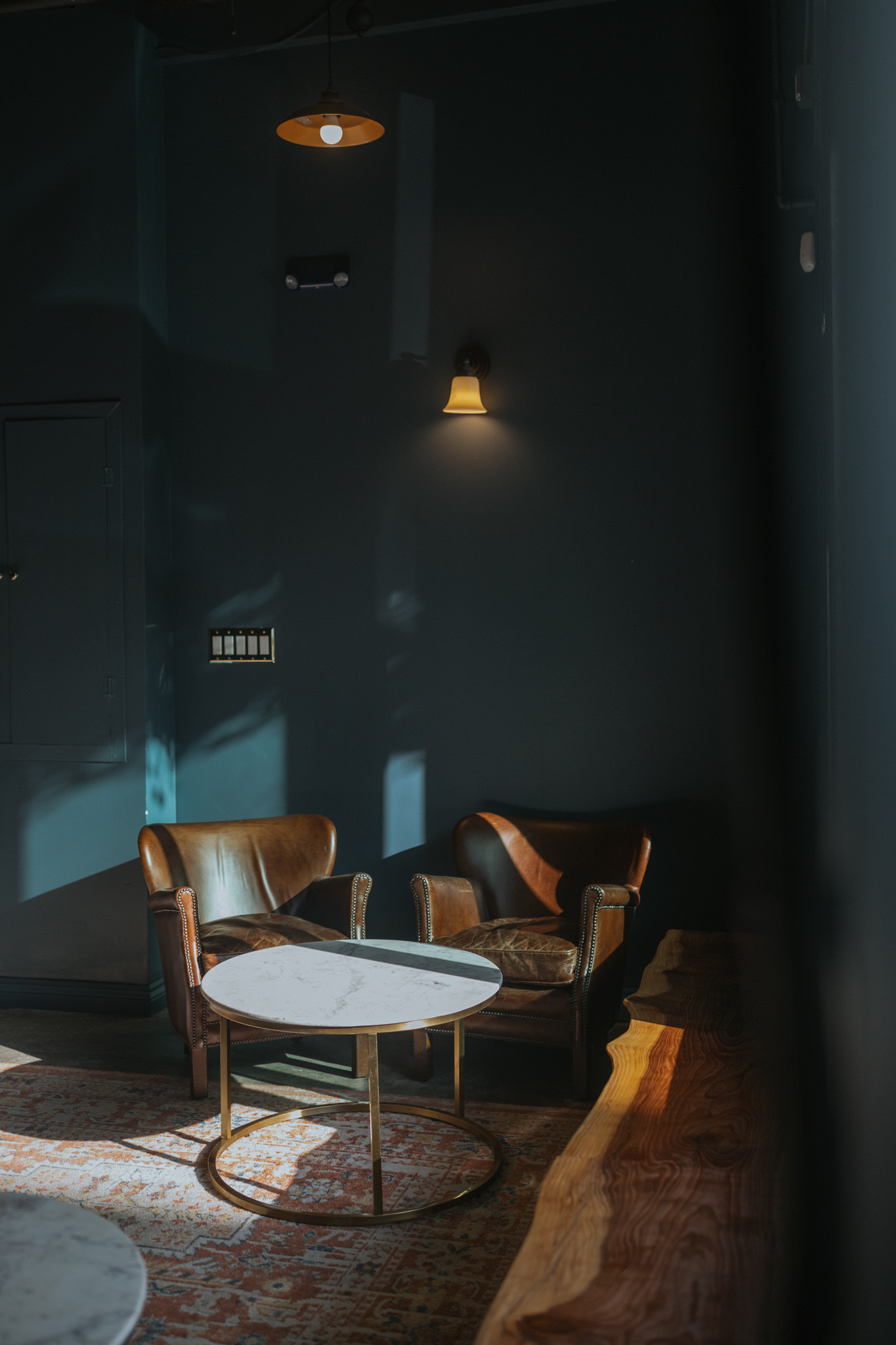
Maison is open until 2 a.m. Friday to Tuesday and caters to a broad range of wine lovers. Old World selections focus on the Champagne and Burgundy regions of France, Germany, and Austria, and appear alongside elegant, nuanced favorites from the California coast. There is also a selection of old-vintage California wines, sourced at auction and from private collectors and sold by the ounce, an approach that gives more people the chance to experience these rare wines.
There’s also a strong selection of sake by the bottle and glass, including several paired with cheese—an unlikely but surprisingly delicious accompaniment. Doralice Handal, formely of the Cheese Shop of Healdsburg, is sourcing cheeses for Maison. Other accompaniments include caviar with potato crisps and crème fraîche, smoked oysters, and salumi.
Evan Hufford acknowledges it will take a little time to fill Maison’s cellar with the 800 to 1,000 wines they hope to carry. For now, the owners are happy to finally welcome guests through the door, especially those in the hospitality industry looking for a post-shift glass of wine. “There are some great bars in town, but none have the wine-forward vibe we were looking for,” Evan says. “We’re excited for Maison to fill that niche.”
210 Healdsburg Ave., Healdsburg. maisonwinebar.com
The post At Healdsburg’s Newest Wine Bar, Sip Excellent Wines Until the Early Hours appeared first on Sonoma Magazine.
]]>
Carson's debut book, The Dead are Gods, was praised by Oprah and People magazine.
The post Author and Model Eirinie Carson Shares Her Favorite Sonoma Spots appeared first on Sonoma Magazine.
]]>


































After publishing her first book, The Dead are Gods, earlier this year, author and model Eirinie Carson was ready to take a breath. An elegiac memoir of her life with her best friend, Larissa, who tragically passed away five years ago, the book was praised by Oprah and People magazine. The format of the book flips between Carson directly addressing the reader and her lost friend—a structure she says, “kind of signifies that madness of grief, where you’re still talking to someone who just isn’t there to listen to you in the same way.”

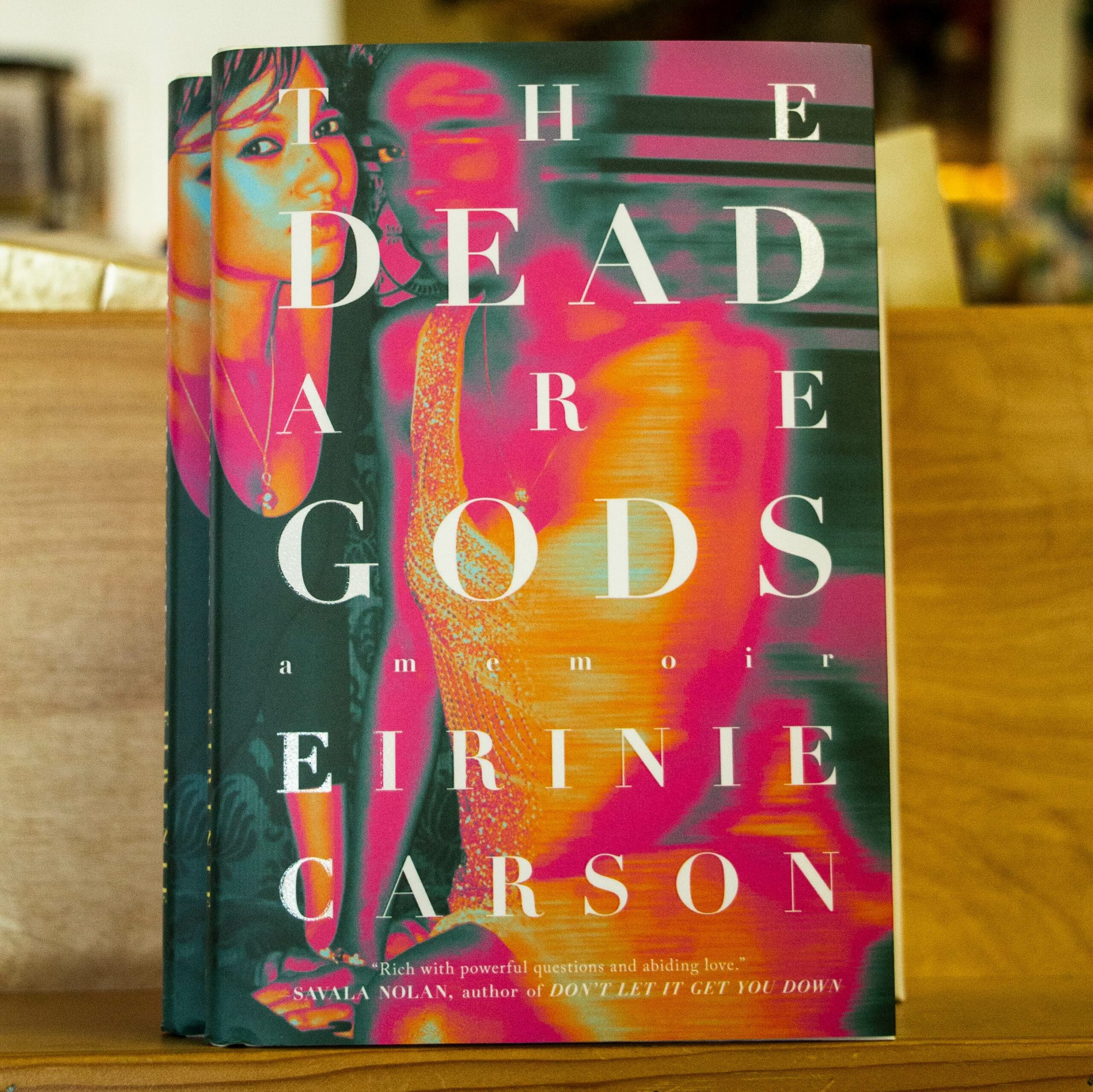
This spring, Carson became a purveyor of grief stories with her new “Eirinie Asks” column in the Petaluma Argus-Courier, interviewing locals to draw out their experiences with loss. “When someone dies, there’s this conversation that suddenly stops, and no one’s answering anymore, but that doesn’t mean that you don’t still have the questions or that you don’t still want to talk to them.”
Carson, who was born in London, embraces that liminal space, surrounded by her Petaluma community, where she and her musician husband are raising two young children. “There’s something nice about grief not existing in this very sacred, untouched, pristine tomb,” she insists, at ease with a shift in conversation from mourning to restaurants to local hikes. Here are some of her family’s favorite spots.
In the 1990s, Carson’s husband’s band, AFI, used to play Petaluma’s Phoenix Theater, and the band has a single called “Days of the Phoenix.” 201 Washington St., Petaluma. 707-762-3566, thephoenixtheater.com
Carson gives rave reviews to the brunch and bottle shop at Valley Bar + Bottle as well as the friendly staff who “don’t make you feel like a dummy if you don’t know what wine to order.” 487 First St. W., Sonoma. 707-934-8403, valleybarandbottle.com
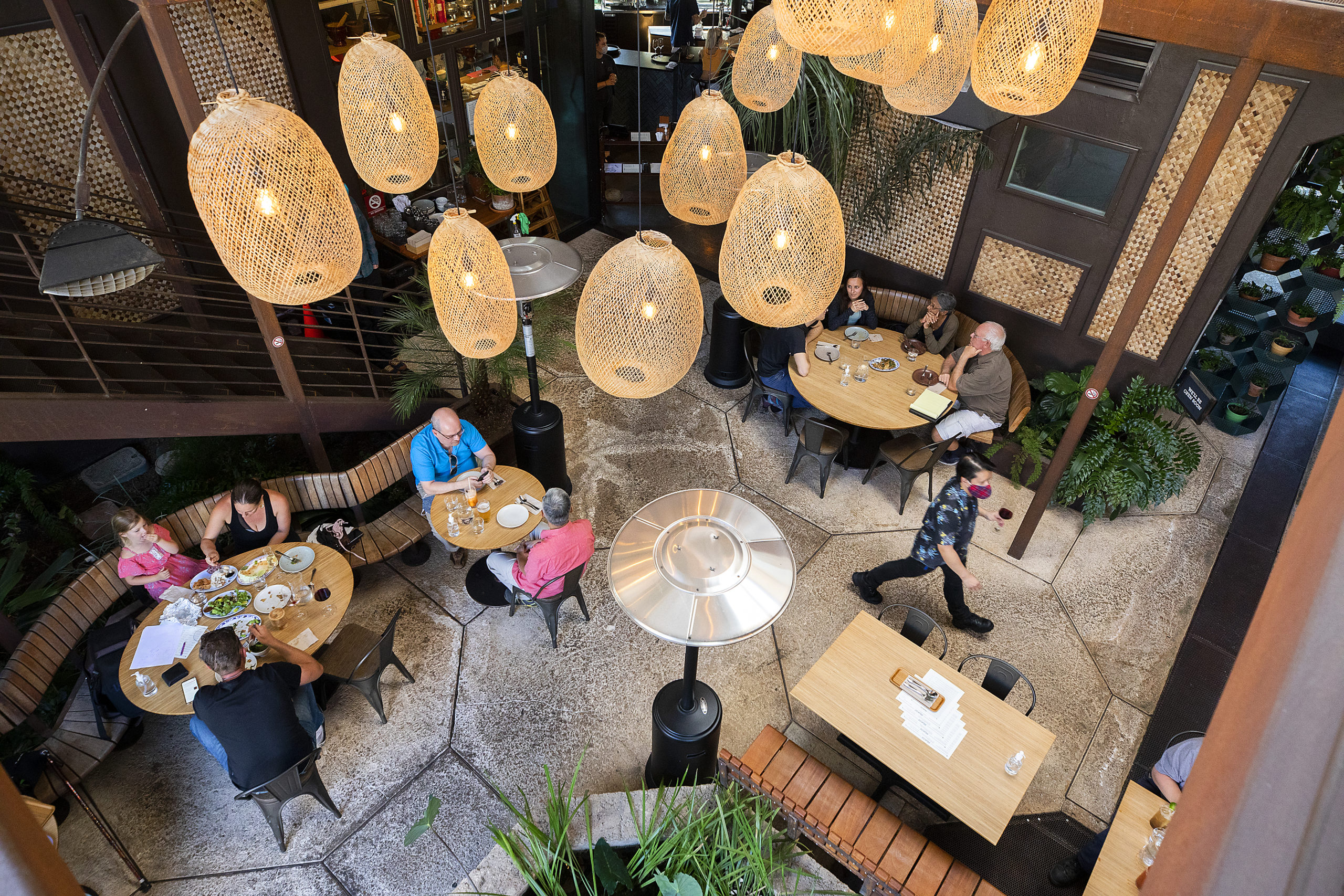
In Sebastopol, Carson likes to visit Bib Gourmand winner Khom Loi for Thai-inspired fare, and Muir’s Tea Room for their plant-based menu: “As a British person, I don’t know how they pulled off this wizardry.” Khom Loi, 7385 Healsdburg Ave., Sebastopol. 707-329-6917, khomloisonoma.com; Muir’s Tea Room, 330 S. Main St., Sebastopol. 707-634-6143, muirstearoomandcafe.com
Carson, an avid runner and hiker, likes to take her children on the Pinnacle Gulch Trail in Bodega Bay. The beach at the end of the trail has lovely tidepools to explore. 20600 Mockingbird Dr., Bodega Bay. parks.sonomacounty.ca.gov
At Copperfield’s Books, Carson’s young daughters wander the children’s section, while Carson heads straight to the photography books. “I’ve been in the (modeling) industry too long, and I appreciate a good photo.” Her own book is on display here, too. 140 Kentucky St., Petaluma. 707-762-0563, copperfieldsbooks.com
The post Author and Model Eirinie Carson Shares Her Favorite Sonoma Spots appeared first on Sonoma Magazine.
]]>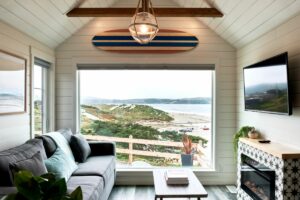
A stay in one of these cute new dwellings comes with ocean views and access to almost a mile of private beach.
The post This Tiny Home Resort in the North Bay Is the Perfect Coastal Getaway appeared first on Sonoma Magazine.
]]>


































Dillon Beach Resort, a popular vacation spot straddling the Sonoma/Marin county line between Tomales Bay and Bodega Bay, recently debuted 13 tiny vacation homes. The historic resort, which dates to 1888, has changed hands only three times in more than 130 years; it is currently owned by a small group of local families, among them Mike Goebel of Brewsters Beer Garden in Petaluma.
Blending boho-chic and surf styles, the new tiny home accommodations take inspiration from the surrounding landscape. Large picture windows frame panoramic views of the beach and allow natural light to brighten living spaces. Cozy bedrooms and sleeping lofts come with Tuft & Needle mattresses and pillows, while well-stocked kitchens have colorful vintage appliances. Just the right amount of sea-inspired décor is scattered throughout, and each of the tiny homes has a private outdoor sitting area.
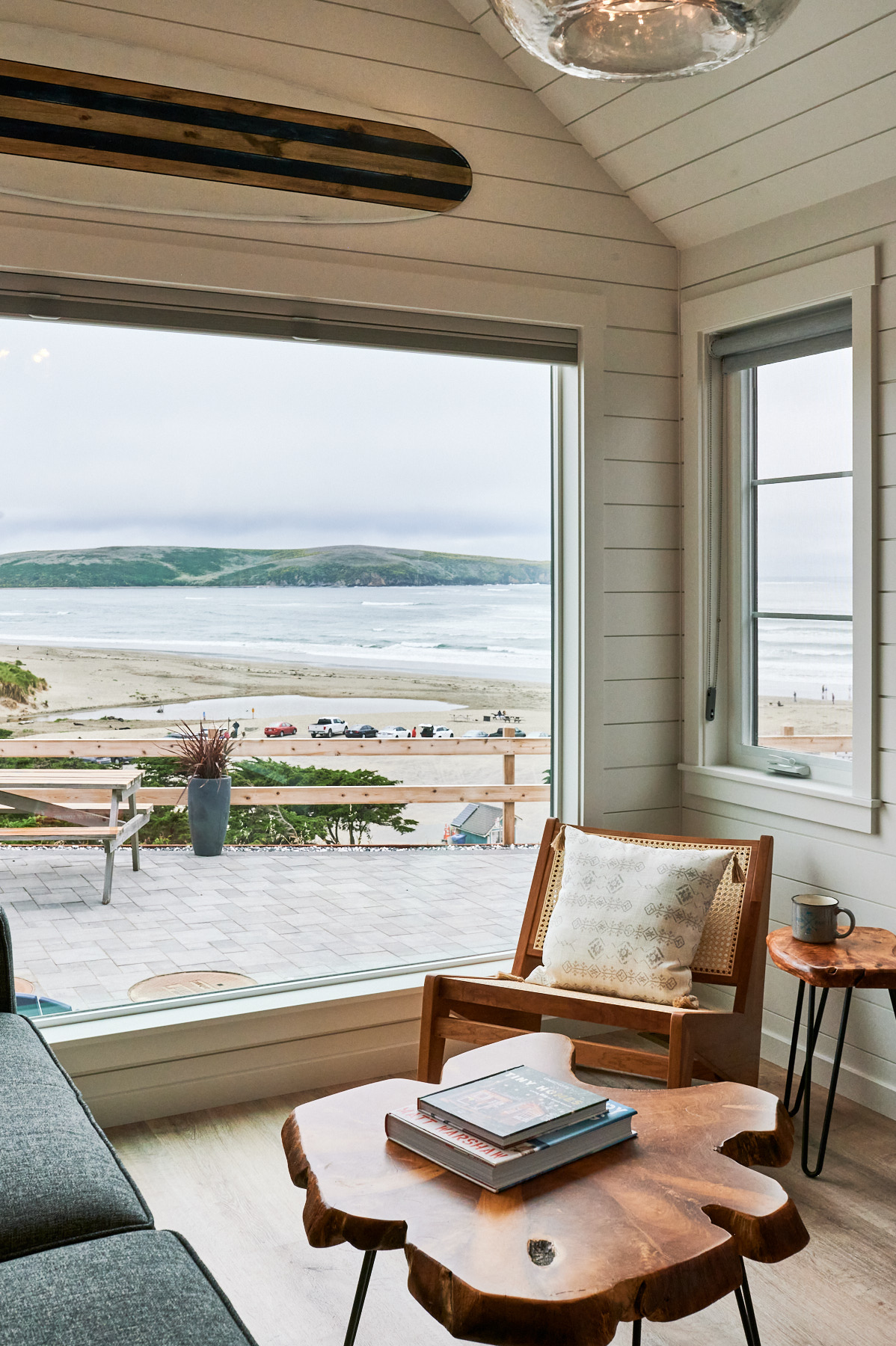
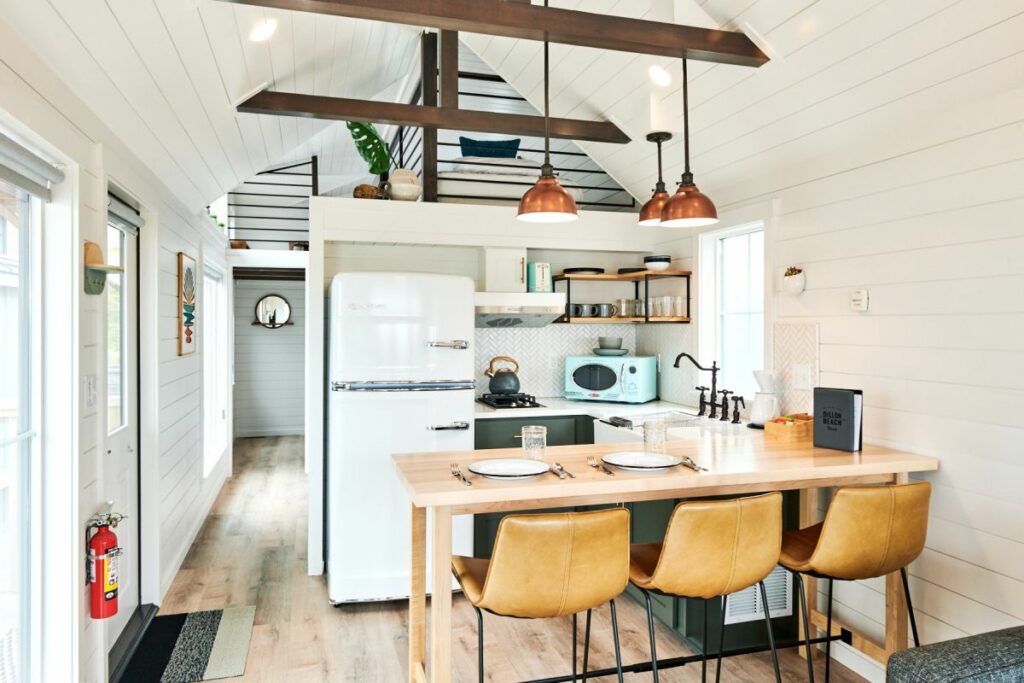
The smallest unit, the Cypress, sleeps two people in a loft-style bedroom, while the largest unit, the Coho, can sleep up to six people in a queen-size bed in the bedroom, a second queen-size bed in a loft area, and a pull-out sofa bed in the living area.
Guests have access to almost a mile of a private, dog-friendly beach as well as a general store with beach supplies, wetsuit rentals, sandwiches, and saltwater taffy. A coffee bar brews Equator Coffee and serves Petaluma’s Double 8 Dairy soft serve ice cream. The on-site restaurant, Dillon Beach Coastal Kitchen, is one of our favorites along the coast.
From $299 per night. 1 Beach Ave., Dillon Beach. 707-878-3030, dillonbeachresort.com.
The post This Tiny Home Resort in the North Bay Is the Perfect Coastal Getaway appeared first on Sonoma Magazine.
]]>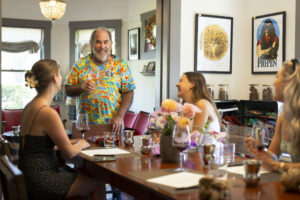
Phil Coturri is a legend in winemaker circles, with a roster of who’s-who clients willing to pay top dollar to share in his uncompromising vision of growing grapes.
The post Meet ‘The Godfather’ of Sonoma Wine Country appeared first on Sonoma Magazine.
]]>


































Driving in an ATV through rocky vineyards partway up the side of Moon Mountain outside Sonoma, Phil Coturri stops for a moment to look at a steep hillside row of Cabernet Franc. “The fruit that comes off the top is a little different than the fruit that comes off the bottom,” he says. “My job is to create uniformity out of this chaotic environment. I operate on chaos because I live in chaos.”
It might be the third or fourth time he’s said “chaos” in the last couple of hours. It’s a family obsession. “We joke all the time that that’s just the Italian in us,” says his son Sam Coturri, who runs the family’s Winery Sixteen 600. “We always want to figure out the hardest possible way to do something.”
It was already difficult enough being a pioneer organic grape grower in the late 1970s, when nearly everyone farmed with chemicals. But Coturri took it a step further, carving out a niche cultivating rugged, difficult-to-harvest biodynamic vineyards. They make up the majority of the 700 acres he farms with Enterprise Vineyards today, some running as steep as 40% grade.
“It’s like mountain-grown coffee,” he says. “You want to grow a healthy, robust vine under the worst possible conditions. That’s where you get the intense flavors. That’s how you create terroir. Terroir is soils, slopes, aspects—and the attitude of the grower.”
A few minutes later, Coturri drives to the top of another hill, where you can see all the way to San Francisco on a clear day, only to let his foot off the brake and barrel down a sloped row, the ATV bobbing back and forth on volcanic rocks, as misters spray him on the way down. It could be a Disney ride.
“People pay a lot of money to ride through the vineyards with me,” he says, half-joking.
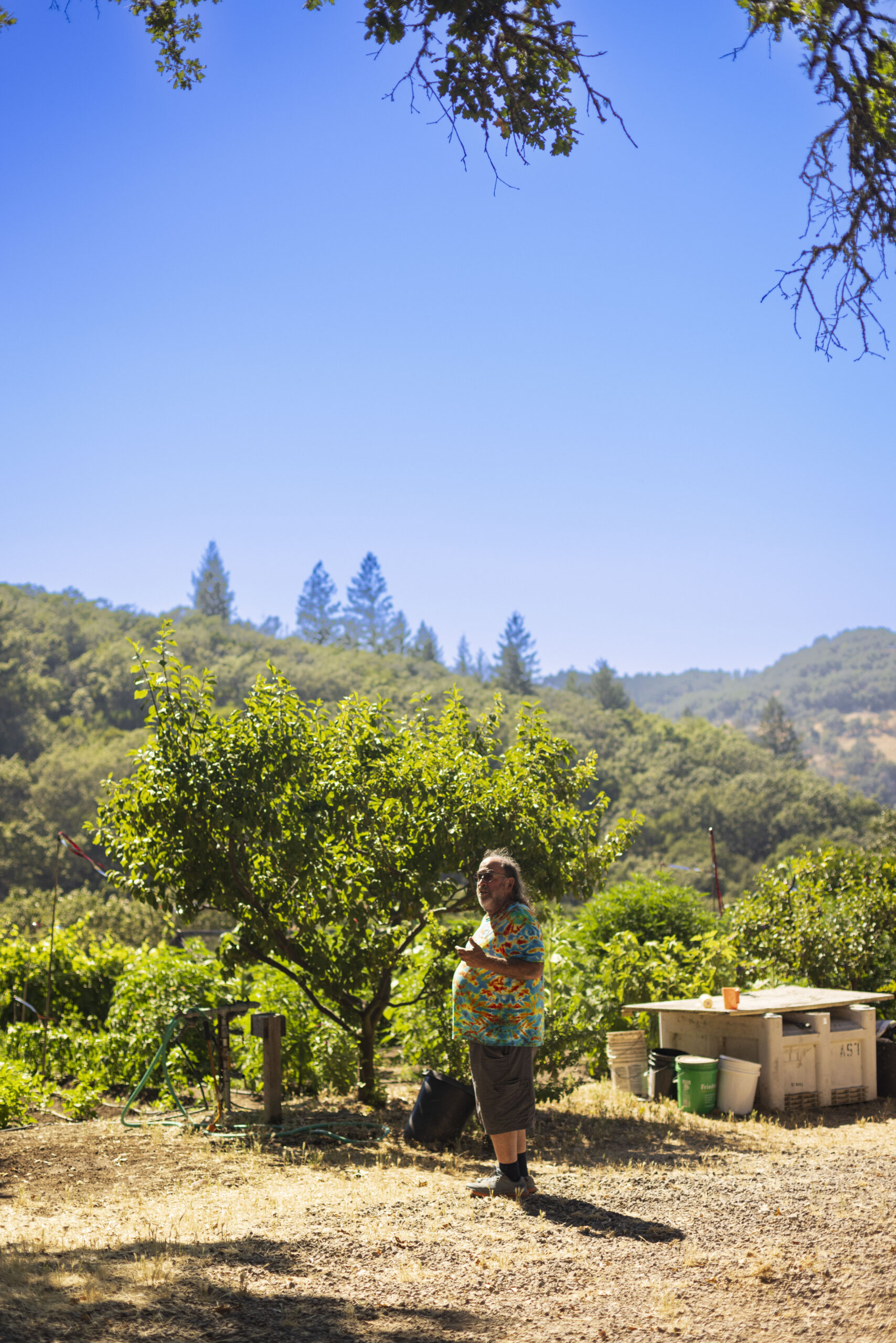
When he laughs, his wild eyebrows flicker. A lifelong Deadhead, with long hair tied loose in a ponytail hanging over a tie-dye shirt, topped off with a straw Panama hat, he’s a magical bramble of a man. If there were a Hobbit character who tended vineyards in the Shire, he would probably look a lot like Coturri.
If you throw out a year, he can tell you what the harvest conditions were like that season. Whether it’s 1998, which was “a cool year, not a big yield, but incredible wines if you can find them.” Or 2009, when “the Oregon Express brought 9 inches of rain on the 9th of October.” Or 2010, when crews thinned the canopy leaves too early and the sun scorched the grapes.
The weekend before the ad hoc Disney ATV ride, he flew to upstate New York to see Dead and Company on their farewell tour. His best friend in the band, drummer Bill Kreutzmann, is sitting this one out. Since the late ’70s, when he befriended sound engineer Dan Healy, Coturri has seen the Dead dozens of times, watching every show from the soundboard.
His Winery Sixteen 600 tasting room, a few blocks off the square in downtown Sonoma, is decked out with so much Grateful Dead memorabilia, from German subway concert posters to psychedelic art by Stanley Mouse, who designs his wine labels, that it feels equal parts museum and winery. Ask him about his favorite mementos and he undoes his belt to show off a buckle with a Dead skull designed by sound engineer Owsley “Bear” Stanley. Only $35 when he picked it up at a Greek Theatre show decades ago, it’s worth at least $5,000 today.
If music is the journey that’s taken Coturri halfway around the world on an endless caravan of Dead shows, then wine is what’s in his blood. His grandfathers were both barrel coopers. His grandmother emigrated from Switzerland to work at the Italian Swiss Colony in Asti. After she won a landmark paternity suit (one that, according to family lore, involved the colony owner’s son), her settlement included an allotment of Asti grapes every harvest. It’s how the family made wine in the early days.
Phil Coturri grew up in “the Italian ghetto” of San Francisco’s Visitacion Valley, where his father, Harry “Red” Coturri, ran a janitorial supply business and his mother, Fermine Coturri, was a schoolteacher. When he was 8, his parents bought a country house on Enterprise Road on Sonoma Mountain in Glen Ellen, where they planted 2 acres of Zinfandel. At age 11, he learned to make wine with his father and brother, Tony.
A well-read, occasionally mischievous kid, Coturri once nearly burned down his grandmother’s house. When he was 14, his mother found three ounces of marijuana in his pockets. To keep him out of trouble, just as he was getting into the San Francisco music scene and Beat poetry, his parents took him up to the country on weekends and summers.
A hippie during the back-to-the-land movement, he fell in love with working in the vineyards. In 1979, when neighbor Myron Freiberg challenged him to grow grapes organically in his 12-acre Dos Limones vineyard, Coturri jumped at the chance. He was already organically farming vegetables and marijuana. If it’s true, as cannabis guru Ed Rosenthal once joked, that “smoking marijuana is not addictive, but growing it is,” then Coturri was hooked from the get-go.
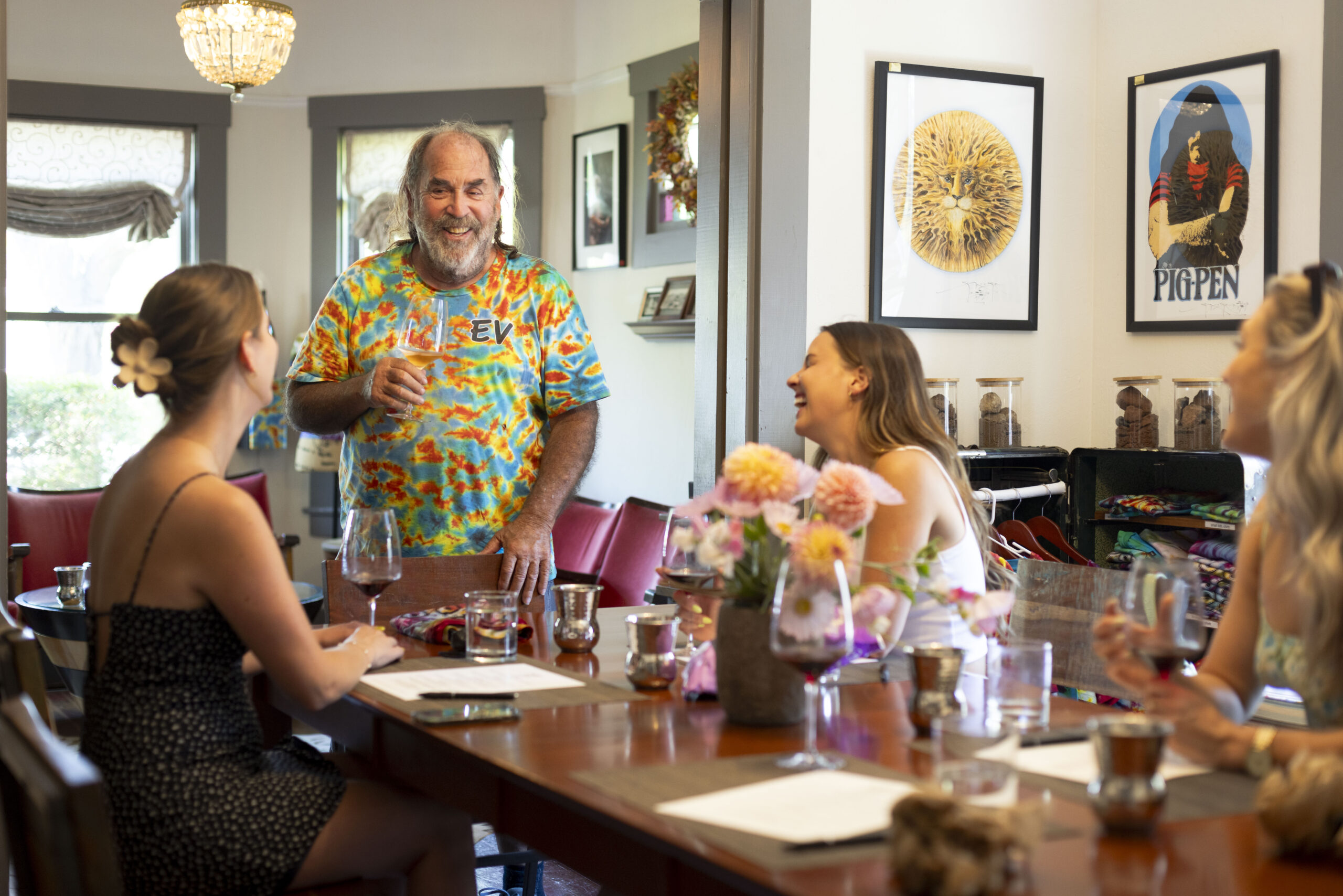
Putting his green thumb to work in the vineyard, he befriended a retired colonel who lived nearby and taught him how to drive a tractor as a teenager, turning him on to Organic Gardening magazine. Old-world grape farmer Joe Miami, who tended Louis Martini’s fabled Monte Rosso mountain vineyard, showed him how to plant and prune vines and how to cultivate the soil. Farmer Bob Cannard, who would later grow vegetables for Alice Waters at Chez Panisse, taught him about cover crops.
But scaling from a 1-acre garden and guerrilla pot grows to a large organic vineyard took a huge leap of faith. “Back then, vineyards were as manicured as a pool table,” he remembers. Most wineries wanted to kill every weed before it grew. As a teenager, Coturri had been paid to spray paraquat in vineyards, around the same time the Mexican government was spraying the toxic herbicide on marijuana farms south of the border. It didn’t feel (or smell) like the right thing to do, he remembers. Now, he was in charge. That’s when he began formulating his year-round organic growing philosophy: “I like to say, from April 1 to November 1, I grow grapes. And then from November 1 to April 1, I grow soils. I grow cover crops to enhance the environment in which my grapes are grown.”
In return, the vineyards have been kind to him. It’s where he met his wife, Arden Kremer. “I needed a job, so I called my girlfriend and she said, ‘Call this guy Phil Coturri, he’s running a grape-picking crew,’” she remembers, like it was yesterday. As she tells the story, Kremer is standing in the middle of their living room, in the family house on Norrbom Road where they’ve lived for nearly 40 years, perched on a shady hilltop overlooking Agua Caliente Canyon north of Sonoma.
The pay back then was only $1 a box. “On a good day, you’d make like $30,” she says. “That was really good back then. A loaf of bread was 79 cents in 1977.”
After a long day picking grapes at Rossi Ranch in Kenwood, everybody went back to Coturri’s place. “I walked into this house that was lined with Grateful Dead posters and rock ’n ’roll stuff from the Fillmore,” Kremer remembers. “And I went, ‘Oh yeah, this is the guy for me.’” Decades later, their sons, Sam and Max, work in the family business. Watching their father work long hours, often at the mercy of Mother Nature, each found a calling. “Sam loves talking to people, and Max loves riding on a tractor,” their father explains. Max now oversees the construction of new vineyards for his vineyard management company. And Sam is the winery’s technical director, focusing on Rhone varieties like Syrah, Grenache, and Mourvèdre, along with Zinfandel and Cabernet Sauvignon.
By 1980, a year after Coturri started Enterprise Vineyards, his organic grapes were thriving. Just like local organic tomatoes or organic peaches, word spread on a grassroots level and his clientele began to grow. “The trick back then was to convince clients the vineyards were going to look a little weedy like me, and that was OK,” he says. “The vines would be tended for, but it wouldn’t be a sterile environment.”
It also took a leap of faith for winery owners to say, “Here’s $50,000 an acre to go plant a vineyard,” he says. Today it’s more like $120,000 to $150,000 an acre.
“It takes some cojones to make that transition to organic,” says Will Bucklin, winemaker at Bucklin Old Hill Ranch in Glen Ellen, who has worked with Coturri for nearly a quarter century. “Having Phil on board to do that gives you the confidence.”
And it’s not just Coturri. His loyal crew has the same set of skills. Many of them stick with his company their entire career. “Two years ago, I took a photograph of the crew during harvest, and almost everybody in that picture had been working with us for 20 years,” Bucklin says.
As an organic farmer, Coturri typically charges around 15-25% more than conventional farmers. “The bottom line is you can’t cut corners,” he says. “You have to have the best fruit to make the best wines.” That means he cares just as much about the environment that surrounds the vineyards—the woods, the creeks and the salmon. An English major at Sonoma State University, he has never forgotten poet Gary Snyder’s edict that “To be a poet, you have to know all the names of all the plants and all the animals of the watershed that you live in.’” Poet or viticulturist, he took it to heart—and took it one step further, by protecting that watershed. “It doesn’t mean anything when you call something ‘sustainable’ and then you’re using something that poisons the groundwater,” he says.

His big leap came in 1983, a few years before he bought his property off Norrbom Road for $140,000. He became good friends with his soon-to-be neighbor, screenwriter Robert Kamen, who dreamed of making world-class Cabernet Sauvignon and hired Coturri to plant his grapes. This was his chance to finally design and build a large-scale, 50-acre organic vineyard from scratch, designing the network of vineyard blocks, trellising systems, access roads, hedgerows and other flora and fauna, and irrigation (that irrigation also pumps in compost teas infused with fish oil and worm castings). Actor Danny Glover also hired him to farm his nearby vineyard. (Metallica guitarist Kirk Hammett also lives around the corner, but doesn’t grow grapes.)
Living and breathing the volcanic terroir, Coturri would be instrumental in the designation of the Moon Mountain District AVA in 2013. But in the ’80s and ’90s, it was just a dream.
“It was like the Wild West back then,” remembers winemaker Jeff Baker, who made award-winning Mayacamas Vineyards and Carmenet wines from Coturri’s grapes. One story has them dynamiting hillsides to build vineyards. Another has Coturri ducking for cover as Huey helicopters flew over, scouring the land for pot gardens in the ongoing war on drugs.
There’s the day in 1989, when the Grateful Dead crew set up equipment in Coturri’s barn off Norrbom Road to test out the band’s latest “Wall of Sound” technology and an oak tree split in half and crashed to the ground. To this day, no one knows if it was felled by sound waves or an act of nature.
Today, Coturri farms biodynamic vineyards from western Solano County to the top of Sonoma Mountain, employing more than 150 workers. He tends grapes at Oakville Ranch, Repris, Laurel Glen, and Mayacamas Vineyards, among many others. For most of his clients, money is no object. They include former Pixar czar John Lasseter; the family of Jim Simons, the billionaire hedge fund manager; Mary Miner, widow of Oracle co-founder Bob Miner; comedian Tommy Smothers; and musician Boz Scaggs. A few clients (think AI pioneers) he can’t even name due to nondisclosure agreements.
“Rich people like to have stories to talk about, and Phil definitely gives you something to talk about,” says Baker. “By Napa standards, it’s not that expensive. In Sonoma, it’s still expensive farming. But there’s a big difference between getting $10 a bottle for your wine and getting $300 a bottle.”
Rattling off examples, Coturri mentions Lasseter Family Wines, which sells a $160 bottle. Kamen Estate Wines has $200 bottles, as does Mayacamas Vineyards. Repris released a $250 bottle. At Winery Sixteen 600, he makes a $150 bottle.
Winemaker Richard Arrowood once described him as “a winemaker’s grower,” which Coturri took to mean that he cares more about the end product than he does making a profit selling grapes.
Over the years, Coturri has famously “fired” clients who try to talk him into cutting corners and lowering organic standards. “With Phil it’s pretty much ‘my way or the highway’ in terms of farming,” Baker says. “He doesn’t need new clients. He needs clients that will let him farm for the highest quality. If they just want quantity or something like that, he tells them to find someone else.”
“Everything I do is a pain in the ass. I make my life more difficult. It would be much easier to go spray Roundup and use steroid inhibitors and spray for mildew. But to do it organically, it’s not easy. It’s all about blood, sweat, and tears.”
With one foot in the past and the other in the future, Coturri is always looking for ways to incorporate new technology in his vineyards. It’s part of his attraction to philosopher Buckminster Fuller’s theories on applied technology. Enterprise Vineyards recently bought an electric Monarch tractor and is prepping it for a trial run in the more than 100-year-old Barricia Vineyards. With a drill screaming in the background, the company’s director of technology, Matt Simpson, flips open a laptop on a work bench and together they navigate heat-resolution maps and soil-sensor data to pinpoint vines that are stressed and might need water.
“We’re looking to substantiate our intuition and take the guessing out of it,” Coturri says. “We don’t want to over-water, and we don’t want to under-water.”
Out front, a sales rep is demonstrating a new automatic tool that should speed the labor-intensive job of hand-tying canes in the vineyard after pruning. Coturri wants to hear what his vineyard workers think about the tool before he spends $1,500 apiece on nearly a dozen of them.
Teaming up with Kiatra Vineyards in Napa, he’s also working on a 4-acre test plot to create a high-tech, computer-monitored vineyard that goes beyond organic to produce zero emissions on the farm. He’s hoping it will be the wave of the future for Sonoma and Napa vineyards: “Not only are our neighbors watching us, but also our neighbors from afar, our friendly competition with the European market. They’re watching and learning, too.”
With harvest looming, Coturri hops in the ATV again and drives down a few more rows, stopping to pull tiny berries off the young green clusters, splitting them open with his thumb to see how many seeds are inside. It’s an early hands-on indicator of what the season might bring. Walking down a row, he stops to pull up his baggy shorts and show the scars on his knees where he’s had replacement surgeries. “I’m gonna do this until I can’t walk anymore,” he says, attributing the wear and tear to the rocky vineyards he likes to farm.
At 70, succession weighs heavily on his mind. It’s not far below the surface when he wakes each day around 4:30 a.m. and does his stretches. Every vineyard he sees from his window, he farms. Angular and steep, they look like wallpaper from a distance.
He hasn’t watched the popular HBO series “Succession,” about a media mogul grappling with how to hand over the reins to his company. But he knows what it’s about.
“Mine is a hippie succession,” he says with a laugh. In March 2022, he thought he had found his successor. He lured Mayacamas Olds from Gloria Ferrer and named her as COO. She was practically family. His wife used to babysit Olds, and later Olds babysat Sam and Max Coturri.
But she lasted less than a year. “I’m sad it didn’t work out,” Coturri says. The reasons can be debated. Maybe she wanted to make the grassroots company more structured and corporate. Maybe he wanted to keep the hippie ethos that built it from the ground up. But they mutually parted ways this past January. Let’s just say that the annual tie-dye shirts that staff don every harvest will continue to be a company tradition.
Nearly once a month for the past three years, the family has met with a succession specialist to discuss what Sam Coturri calls “the perpetual five-year plan.” By now, it’s become apparent it will likely take a team, instead of a single person, to succeed Phil Coturri. That’s what happens when you try to follow in the footsteps of the godfather of organic viticulture in Sonoma County. After he turned 70, he promised his wife he would work fewer hours. But as he makes the rounds from the office to the vineyards this morning, he seems to have a question for nearly every employee he runs across. It’s obvious he’s still on top of all aspects of the business.
A few days later, as Coturri chats about the Dead and Company show he saw the night before, it all becomes crystal clear. Just like his musical heroes, who don’t really know how to call it quits—even if they cut back the frequency of shows, even after announcing farewell tours on top of farewell tours—Coturri doesn’t know how to walk away either.
“How do you quit something that you love, that has been a part of your life for 50 or 60 years?” he says. “You figure out a way to pass it on. Succession is a bumpy road, and to make everything work out in harmony, it takes a lot of practice. There’s a lot of repetition in quitting. Do you quit or just slow down?”

Looking back, it’s all been one continuous thread: grapes, grass, and the Grateful Dead. And it’ll never really end, this long, strange trip up and down mountains, through canyons and vineyards, kickstarted by a burly, long-haired hippie on a tractor in the ‘70s. Even when he can no longer walk, his organic spirit will live on in the cover crops and the hawk boxes and the compost teas—and in the new round of Enterprise Vineyards tie-dye T-shirts each harvest.
Later, scratching his gray beard for thought, Coturri paraphrases Gary Snyder’s “Hay for the Horses” poem and says, “I used to say about working in the vineyards, ‘I’d sure hate to do that the rest of my life.’ But dammit, that’s just what I’ve gone and done.’”
Phil Coturri’s Lifelong Top 10 Wines
LOUIS MARTINI MONTE ROSSO BARBERA, 1958: “An a-ha moment in mountain viticulture.”
DOMAINE DE LA BARROCHE PURE, 2013: “The pinnacle I look to when tasting and making Grenache.”
HANZELL PINOT NOIR, 1956-1996: “Tasting legends with the legend, Bob Sessions.”
MAYACAMAS CABERNET SAUVIGNON, 1962-2009: “Just after Bob Travers sold the property to new owners. The past and the future of a historic site.”
CARMENET CABERNET FRANC, 1983-1993: “With legendary winemaker Jeff Baker, a showcase in terroir from a notoriously finicky variety.”
COTURRI WINERY P. COTURRI ESTATE ZINFANDEL, 1993: “The Gourmet Magazine 1995 Wine of the Year, with label art by my son Max, who was 6 at the time.”
JESSANDRA VITTORIA KAMEN VINEYARD SANGIOVESE, 1997: “A dark horse in the lineup, but a wine that at its peak was impossible to put down.”
KAMEN ESTATE ‘KASHMIR,’ 2005: “A best-barrel compilation of Cabernet Sauvignon from winemaker Mark Herold.”
Á DEUX TÊTES ROSSI RANCH AND OAKVILLE RANCH, 2018: “The first release of our collaboration with the late, great Philippe Cambie, after years of friendship and mutual admiration.”
WINERY SIXTEEN 600 DOS LIMONES SYRAH, 2007: “One of the first wines we made under the Sixteen 600 label. Proof of concept for our brand of terroir-driven, farmer-styled wines.”
The post Meet ‘The Godfather’ of Sonoma Wine Country appeared first on Sonoma Magazine.
]]>
Looking to try something different? Here are new restaurants, new dishes and favorite spots for fall.
The post Where to Eat Right Now in Sonoma County appeared first on Sonoma Magazine.
]]>


































New restaurants, new dishes, and favorite spots for fall. Click through the above gallery for a peek at some of the dishes to order.
Molti Amici
Molti Amici owner Jonny Barr is likely the only certified sommelier/former pro wrestler you’ll ever meet.
Long before Barr was sommelier and general manager of SingleThread, a three-Michelin-star restaurant in Healdsburg, he performed as part of the Empire Wrestling Federation, home to chair-breaking, smack-talking, WWEesque entertainers. (One of the many Easter eggs at the former Campo Fina space is a bathroom with tiny wrestlers printed on the wallpaper.)
Barr’s collaborators at Molti Amici (Italian for “many friends”) include fellow SingleThread alum Sean McGaughey, who developed the menu with Barr, along with chef de cuisine Matthew Cargo and bar director Danielle Peters. It’s a winning combination, with an Italian-influenced menu that reflects the seasonal moment. At harvest time, this includes late-season tomatoes and corn, squash, and pears.
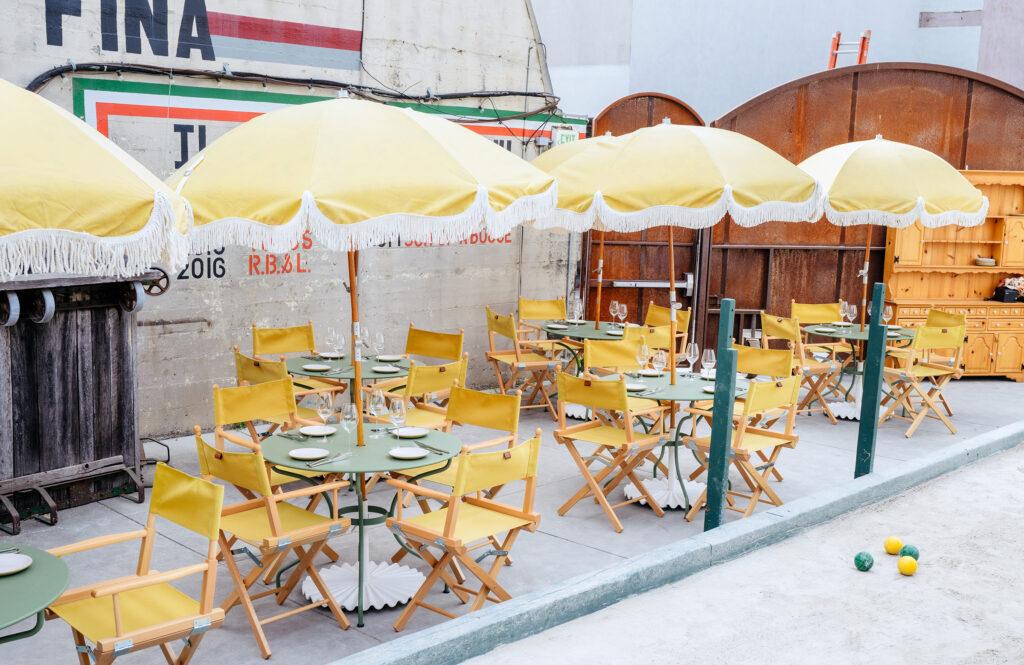
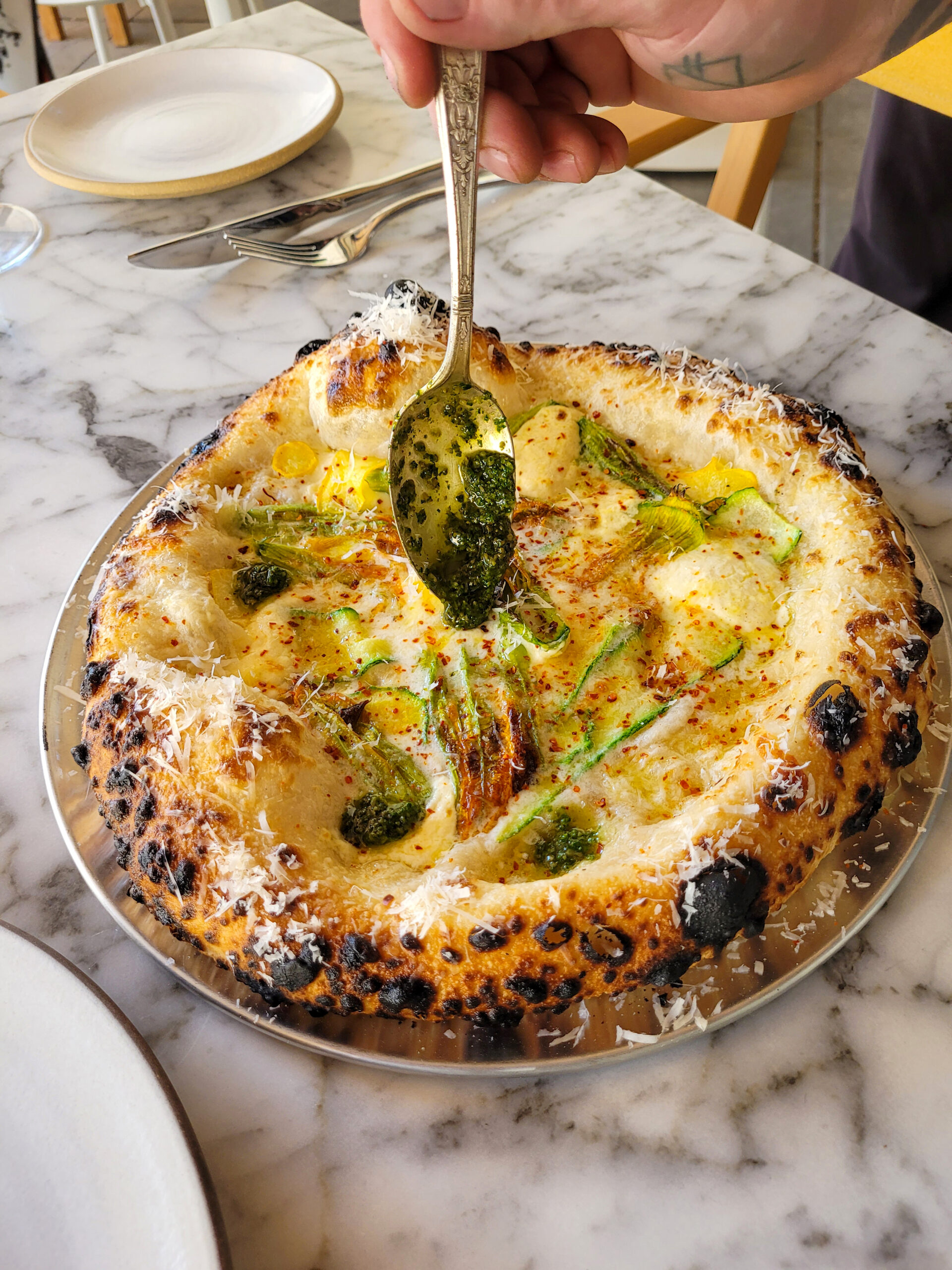
There are more evergreen items, too, like a whole spatchcocked chicken with potatoes and mushrooms ($65) or a 20-ounce Wagyu strip steak ($120) meant for sharing, as well as wood-fired pizzas, either with seasonal items (corn, zucchini, tomatoes) or more traditional Margherita or sausage pizzas.
The slim interior of the restaurant is charming, but it’s the patio where all the action happens. Fringed yellow umbrellas rim the bocce court, and banquettes with lime-striped cushions add a pastel Wes Anderson vibe.
Molti Amici is a seersucker-suit-and-straw-hat moment with a little WrestleMania thrown in — just what you’d expect from a guy who can pour a bottle of Dom Pérignon with all the panache of Randy Savage.
Best Bets
Bar bites: They’re more than just an afterthought here. The gnoccho fritto ($11) are triangles of fried dough paired with Mortadella ham and fresh Parmesan. The focaccia with garlic butter ($10) is also a savory carb to fill you up.
Housemade pasta: Deft hands are working the dough here. Try casoncelli, a type of giant ravioli, and tortellini en brodo with smoked eggplant and tomato confit ($26-28).
Pizza: Half the fun of sitting outside is watching the speed of pizzas going in and out of the wood-fired oven. They’re not overdressed and have just a handful of ingredients atop the bubbling dough, like a red pizza with hen-of-the-woods mushrooms and sweet onion or our absolute favorite, the green pizza with fresh basil, onion, frilly mustard greens, and lemon zest ($23-25).
Cocktails: The Campari and Prosecco with orange (no name, just an emoji of a hand making a very Italian gesture) is required. We also loved the Roman Around—a mix of tequila, caramelly Averna, sweet Cocchi Americano liqueur, and fresh basil, peach, and lemon ($15).
330 Healdsburg Ave., Healdsburg, moltiamici.com
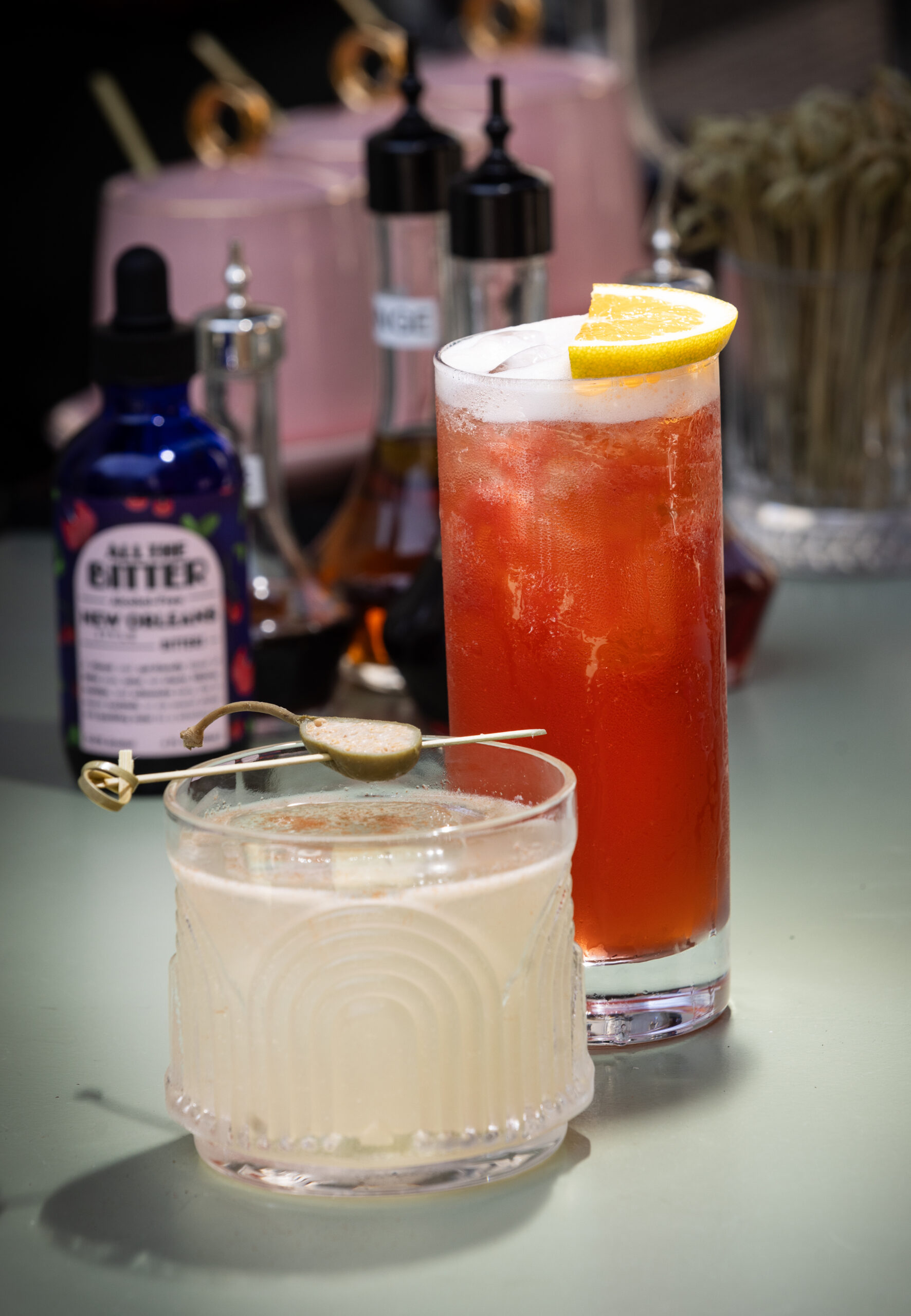
Goodnight’s
Sonoma County has never had a love affair with clubby steakhouses, those manly, dimly lit, leather-scented altars of aged beef and expensive whiskey. While expensive steaks are certainly on high-end local restaurant menus, local steakhouses are rarer than a properly cooked filet mignon. The new Goodnight’s Prime Steak + Spirits, backed by wine mogul and entrepreneur Bill Foley, is precisely that kind of old-school, tufted banquette kind of destination restaurant that no one particularly asked for, but everyone’s talking about.
But this steakhouse has a Western twist. The two-story restaurant is inspired by Charles Goodnight, a rough-and-tumble Texas Ranger, cattle herder, and inventor of the chuckwagon. Diners eat under modern chandeliers that evoke a starry night on the plains, and glowing moons of incandescence move the eye to the open kitchen. From there, chef David Lawrence oversees the dishes and chats with guests acquainted with his work at restaurants 1300 on Fillmore and Black Bark BBQ. The steakhouse is a return to a familiar format for the Brit, who cut his chops at London steakhouses with his Jamaican-born father.
There’s no question steak is what you’re here for, and the 25-ounce ribeye is unctuous and perfectly seasoned. The menu also includes seafood and well-crafted vegetarian options, like the exceptional Muhammara roasted cauliflower. Seasoned heavily with za’atar seasoning, it’s a nice departure from beef.
Mixologist Devon Espinosa heads a lighthearted beverage program. Cocktails lean on whiskey and bourbon, but an extensive menu of high-end American, Japanese, and other international liquor selections is aimed at connoisseurs.
Star emblems throughout the restaurant, reminiscent of a Western sheriff’s badge, make it clear there’s a new steakhouse in town—one with a trigger finger itchy to impress.
113 Plaza St., Healdsburg. 707-543-1000, goodnightsrestaurant.com
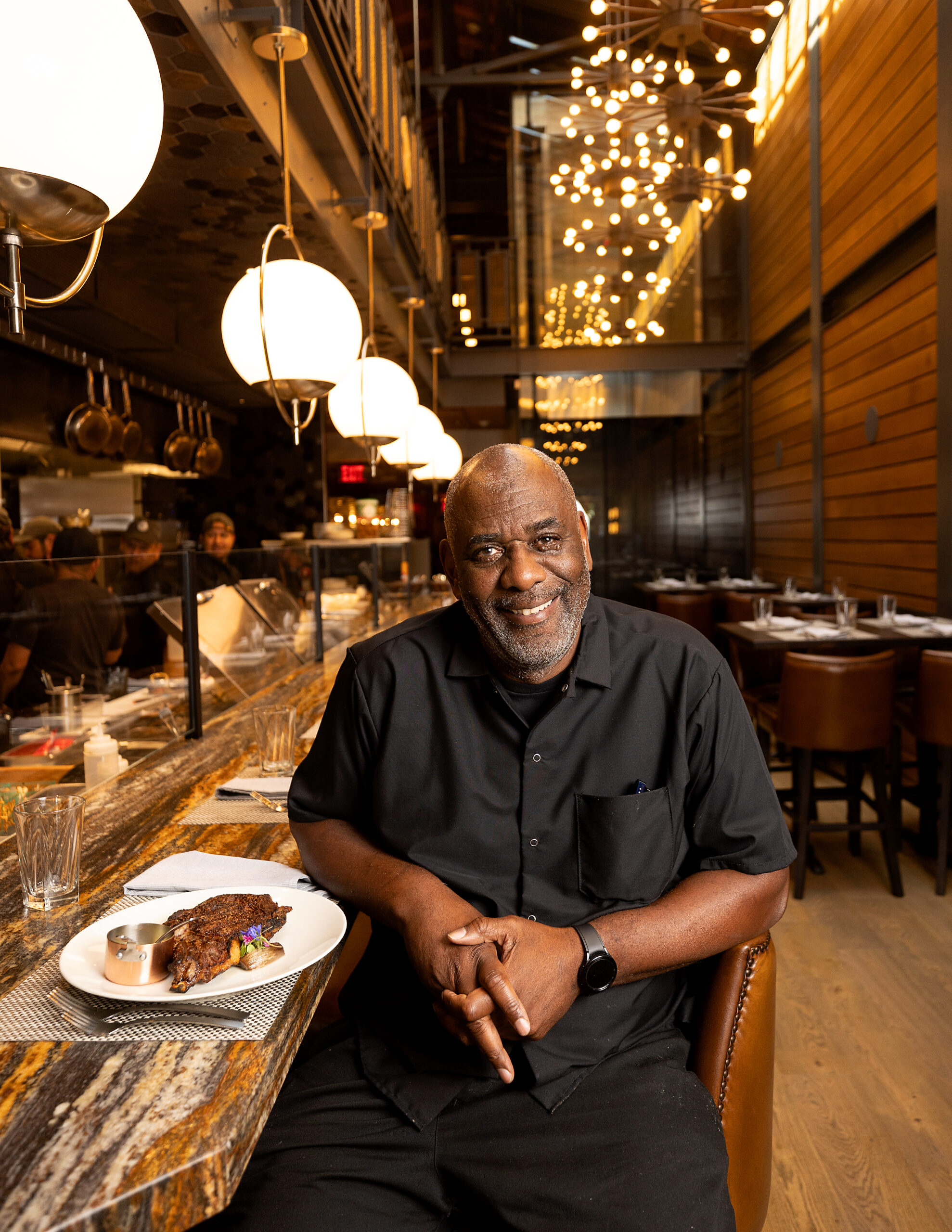
Cozy Plum
There’s now a second outpost of Santa Rosa’s popular vegan comfort-food restaurant. At the new Sebastopol location, the menu includes crossover dishes inclusive of vegans, vegetarians, and omnivores. As the latter, I’ve always appreciated chef Charles White’s approach to plant-based dishes that are flavorful.
The revamped menu has been abbreviated to include the best-of hits from the Santa Rosa location, such as stuffed jalapeños, burgers, bowls, and wraps. Best bets include the new Israeli couscous salad ($16.50) with large pearls of the pasta/grain (even foodies argue what category it belongs in) atop fresh greens and seeds, with an almond-chipotle dressing. The Green Chile Cashew bowl ($17.50) is a heaping bowl of lettuce, rice, beans, salsa, cashew cream, quinoa, and avocado tossed with housemade ranch dressing.
It’s always the burgers I return to, like the fat Mushroom Gouda ($19.50) with crispy onions, pickled jalapeños, trumpet mushrooms, vegan Gouda cheese, and a soft sourdough bun that’s been waved over the grill for a toasty munch. Virtuous and delicious.
6970 McKinley St., Sebastopol. 707-823-3333, cozyplum.com
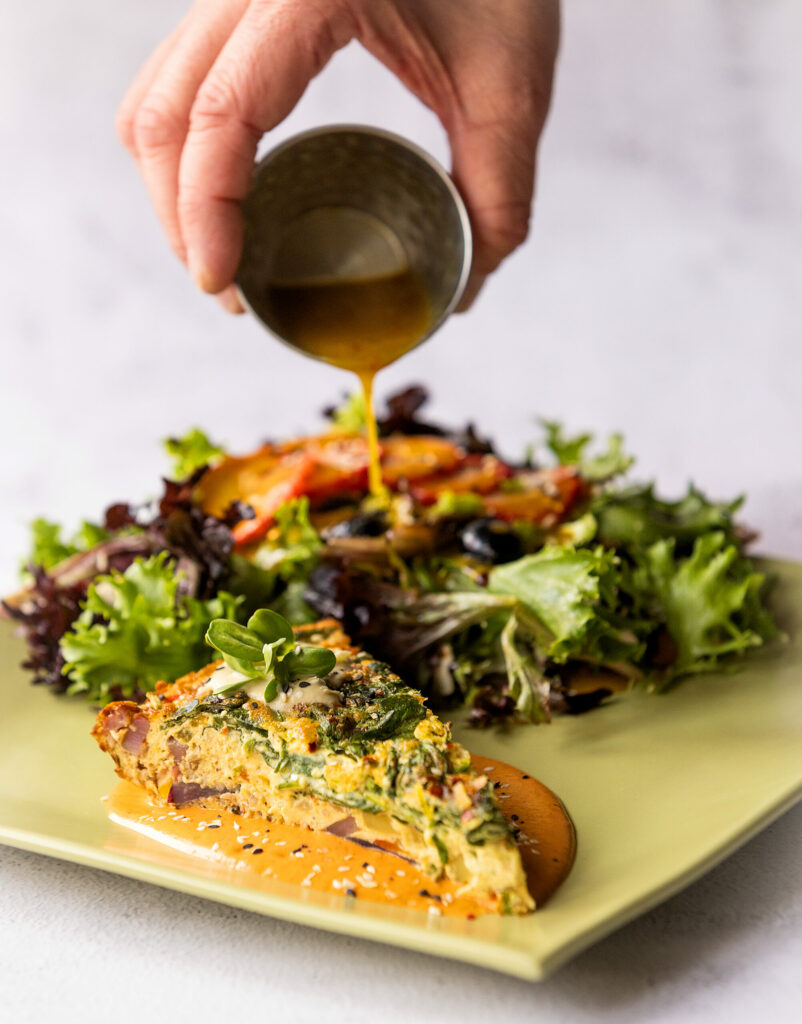
Iggy’s Organic Burger
With just a handful of tables, this new combination burger joint and ice cream shop is best enjoyed to-go, joining the hordes of families enjoying a family-friendly night around the Plaza—messy burgers and dripping cones are best consumed outside anyway.
On the ice cream side, there are droolworthy flavors like Lemon Curd and Dulce de Leche Brownie from cult-favorite Angela’s Organic Ice Cream out of Petaluma, plus thick slices of cheesecake from the College Confectionista, Anamaría Morales.
The burgers are quite grown-up, though kids will like them, too. My favorite is the Biggy ($12), made with two duck-fat-and-beef patties, cheddar, “Million Island” dressing (like Thousand Island), caramelized onions, secret sauce, pickles, and not two, but three buttery brioche buns. Take that, Big Mac. You’ll need a pile of napkins to eat this gooey mess of a burger with thin patties, dripping cheese, and sauce. We’ll never eat one of those thick, half-pound monstrosities again. OK, we will—but this burger is truly astounding.
109 Plaza St., Healdsburg. On Instagram @iggysburger.
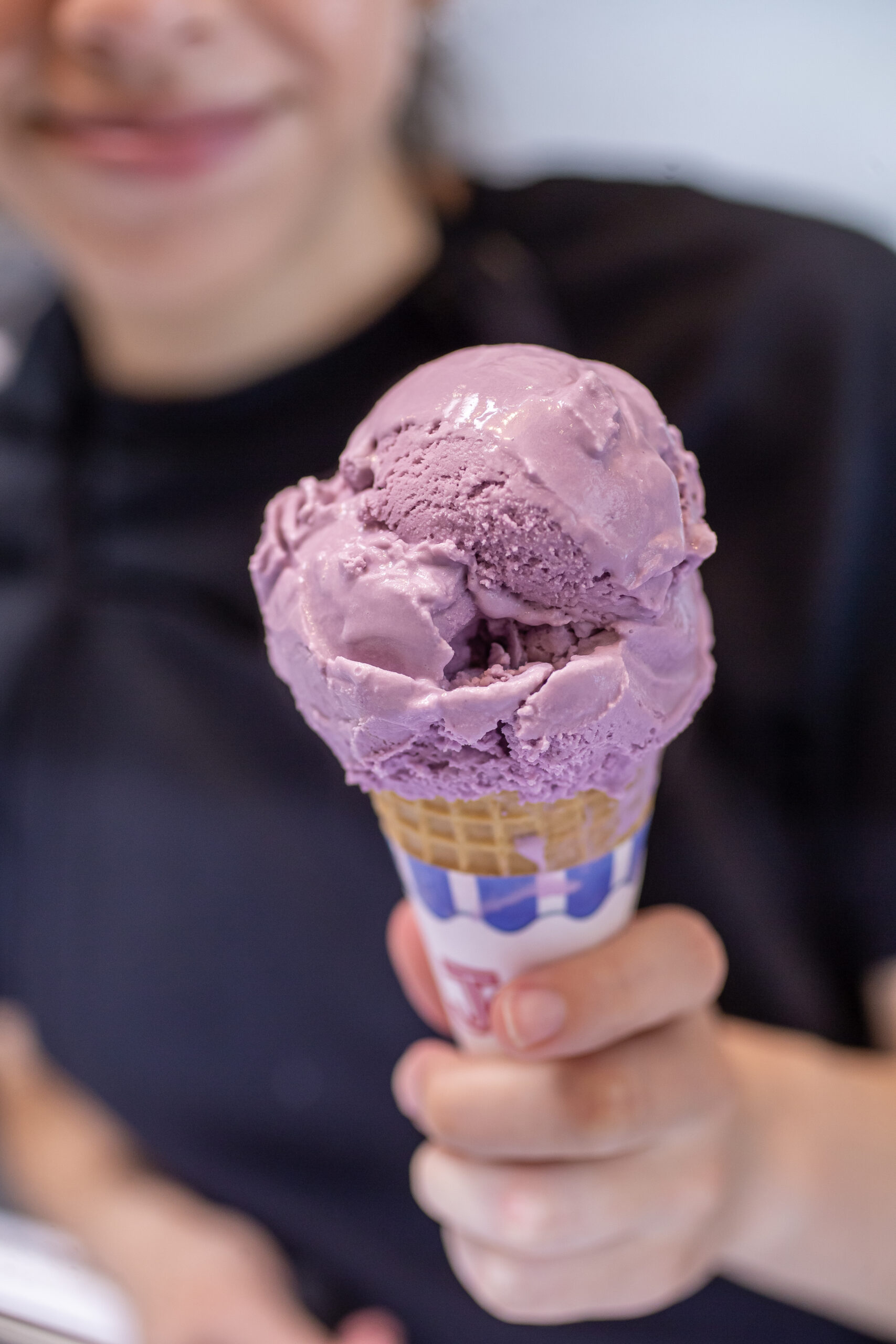
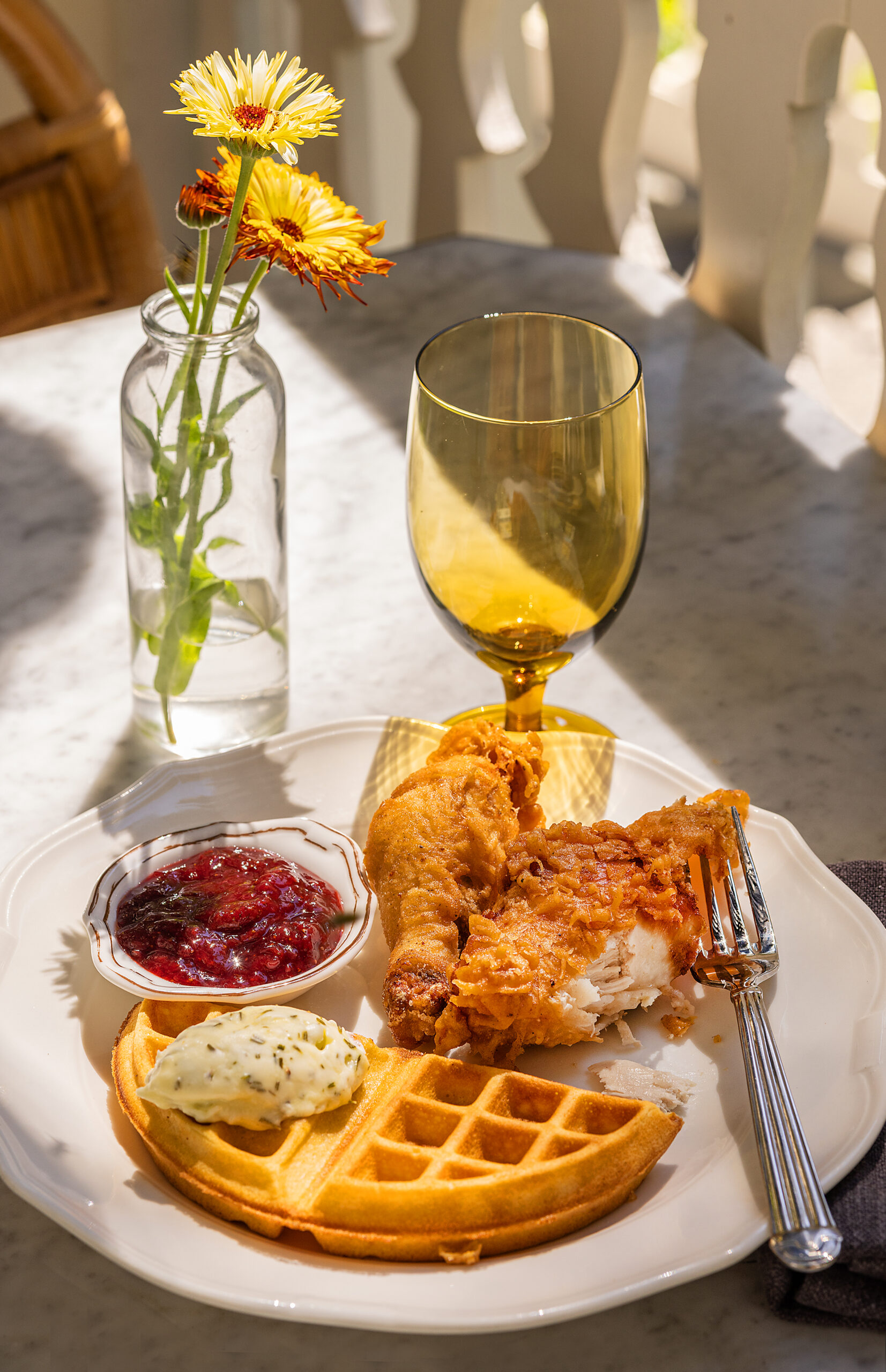
The Madrona
Chef Patrick Tafoya has taken over the lead at the high-profile restaurant at The Madrona. Previously, he was executive estate chef at Round Pond Estate Winery in Rutherford, where he curated a four-course wine and food pairing for intimate groups of diners.
Tafoya has largely maintained the more casual, approachable menus former chef Jesse Mallgren instituted after new owners took over the resort last spring, adding lunch and brunch. Now that the property’s culinary gardens are overflowing with early fall bounty, he has plenty of new ideas to make the most of tomatoes, chiles, eggplant, and more. “Our goal is to utilize everything we grow and allow the gardens to continuously inspire our menus,” says Tafoya.
The Madrona’s new brunch service, offered Saturdays and Sundays, is a treat. Lazing on the 1881 Victorian mansion’s terrace overlooking lush flower gardens, emerald lawns, and towering trees is like gently ushering the world away. Sip a Madroni of herbaceous Botanivore gin, blood orange, apricot-kissed Brucato Orchards Amaro, and sweet vermouth and see if life isn’t immediately better. The edamame spread is a chunky, pleasingly gritty mash sprinkled with gremolata, tart rose hip crumbles, and wilted microgreens and served with puffy, buttery herbed pita bread ($17). A half-waffle comes with fried chicken, the poultry breast, and drumstick so crisp that the crust audibly crackles as it breaks to reveal the juicy interior ($24).
You gild it with strawberry jam and rosemary butter.
There’s some adventure at brunch, too — a satisfying okonomiyaki pancake is stuffed with pork and rock shrimp under a shower of salty bonito flakes, Japanese pickles, and scallions ($24). Duck confit is a rich, elegant take on hash, topped in slow-cooked eggs and spicy tomato-pepper piperade sauce and served with grits ($28). And gravlax pizza ($27) is a whimsical play on a lox bagel, the lacy smoked salmon draped over a bed of crème fraîche then dotted in diced pickled red onion, capers and dill fronds atop a thick, puffy crust sprinkled in “everything” seasoning. Go all out and add two poached eggs ($6) and trout roe ($15).
Tafoya is probably tired of being asked about regaining the restaurant’s Michelin star, after Mallgren earned and kept the coveted award for 13 years. “I think it’s every chef’s goal to earn a star,” he said.
“With so many of our neighbors being recognized recently, I am inspired to continue the pursuit.” – Carey Sweet
1001 Westside Rd., Healdsburg. 707-395-6700, themadronahotel.com
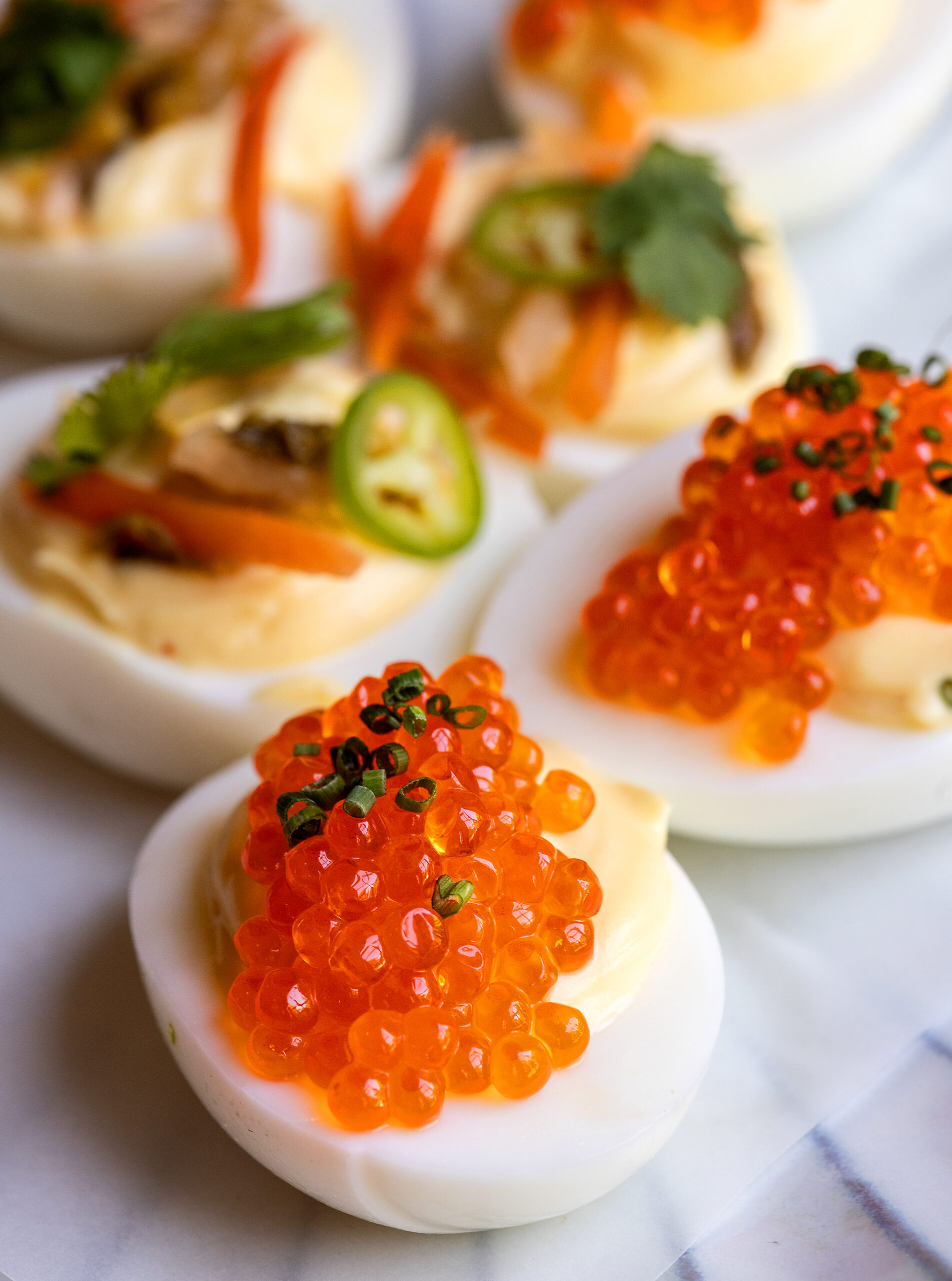
Pascaline
The Forestville French-style bakery Pascaline recently opened a new outpost in Santa Rosa.
Chef Didier Ageorges and new pastry chef Lea Schleimer make croissants so flaky they threaten to shatter into crumbs if you even look at them hungrily. Lunch begins at 11 a.m. with soups, salads, and sandwiches, like iconic French onion soup, and a classic croque monsieur with ham, Swiss cheese, and béchamel on crispy Pullman bread. The opening menu is abbreviated but is expected to expand as the staff gets up to speed.
The new location is in the former space of Worth Our Weight, a beloved nonprofit culinary training program for at-risk youth directed by Evelyn Cheatham, who died in 2019. We can’t help but think Cheatham would be happy to see such sweet joy once more.
1021 Hahman Dr., Santa Rosa. 707-303-7151, pascalinepatisserieandcafe.com
Barrel Brothers
With a self-serve wall of 39 taps serving beer, cider, and cocktails, Barrel Brothers Kitchen & Cocktails in Windsor offers little-kid DIY thrill. Just try not to snicker at taps labeled The Snozberries Taste Like Snozberries sour beer or Dad Pants Pilsner.
The food is equally playful, with simple but well-executed nibbles, bowls, skewers, and baskets. The Moroccan Spiced Lamb skewer ($5) is perfectly seasoned and served with a pool of tart tzatziki. And pupusas ($14) filled with roasted pork, cheese, black beans, and potatoes are a real winner. They’re a shareable dish with richness from the fried El Salvadoran griddle cakes and freshness from the pile of cabbage salad and salsa on top. Southern Fried Chicken ($17) is also excellent, served with pickles and a creamy ranch dip.
9238 Old Redwood Hwy., Windsor. barrelbrothersbrewing.com
Baker & Cook
The popular bakery and breakfast/ lunch spot Baker & Cook now serves dinner on Friday and Saturday nights. Owners Nick and Jen Demarest (he’s the cook, she’s the baker) met in culinary school and formerly headed up Harvest Moon Café in Sonoma.
Their new prix-fixe dinner menu offers a choice of three courses for $75 per person. Previous dishes have included a baby beet and celery salad with smoked trout, chilled corn soup with a jalapeño-tomato relish, and a pairing of frozen honey mousse and apricot sorbet served with pistachio cookies. Call 707-509-9225 for reservations.
18812 Hwy. 12, Sonoma. bakerandcooksonoma.com
19Ten
Opened in early summer in the former Jack & Tony’s, 19Ten is already a Railroad Square destination. JC Adams and Brad Barmore, owners of KIN Windsor and KIN Smoke in Healdsburg, opened up the cavernous space and spun off a mix of new concepts. There’s plenty to love on the menu—nothing stuffy or plain here.
It’s a light-hearted celebration of food and fun.
Start with one of their craft cocktails and Smoked Brisket Elote Tacos ($18) with tender Texas-style smoked brisket, roasted corn, cotija cheese, and pickled red onion. Scallop Crudo ($16) is a great plate to share, with thin slices of fresh scallops marinated in a tart-spicy chile-oil vinaigrette.
Entrées are harder to choose. Here you’ll want to invest in hearty dishes like the Beef Duo ($40) with a hangar steak and beef cheeks or the Smoked Baby Back Ribs covered in a bourbon Dijon glaze. Our favorite was the simple 19Ten Burger ($19) with a crisp Parmesan skirt around two burger patties.
Sonoma County is ready to enjoy a little eater-tainment again, and Barmore thinks his twinkling Princess Cake is a fun idea for dessert.
I couldn’t stop laughing, because, while delicious, it gives the overall impression of something a magical unicorn might have left behind. Our snort-worthy question: Does the glitter dissolve after you eat it, or will it reappear? Fact: Edible glitter dissolves in the digestive system.
115 Fourth St., Santa Rosa. 707-791-7494, 19Ten.com
The post Where to Eat Right Now in Sonoma County appeared first on Sonoma Magazine.
]]>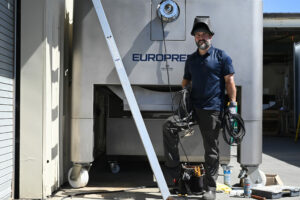
Superman has nothing on these mechanics, who put in long hours to get the job done at a critical time of year for Sonoma County's most iconic industry.
The post These Local Harvest Heroes Save the Day When Winery Equipment Fails appeared first on Sonoma Magazine.
]]>


































Nothing much surprises mechanic Harvey Gonzalez of Europress as he criss-crosses Sonoma County each harvest, not even a wayward bird’s nest found inside a wine press during a tune-up.
Dave Peritore, the one-man show at Winery Service Connection, earned the nickname “Equipment Jesus”— presumably for acting as the savior of the day’s fruit many times over.
And at Carlsen & Associates, a family-owned business in Healdsburg that builds and maintains winery equipment, the phone pretty much doesn’t stop ringing from August through November, says head of service Tony Tchamourian.
Superman has nothing on these folks, ones who put in long hours on the road to get the job done at a critical time of year for the county’s most iconic industry, one that brings in over half a billion dollars annually.
Because when the heat is on and the equipment isn’t working, the wine will suffer.
“The sting can be real for a winemaker,” says Peritore. “When it’s 89 degrees out and the machine is down, it can hurt harvest in a big way—it can be exactly the wrong kind of failure at the wrong time.”
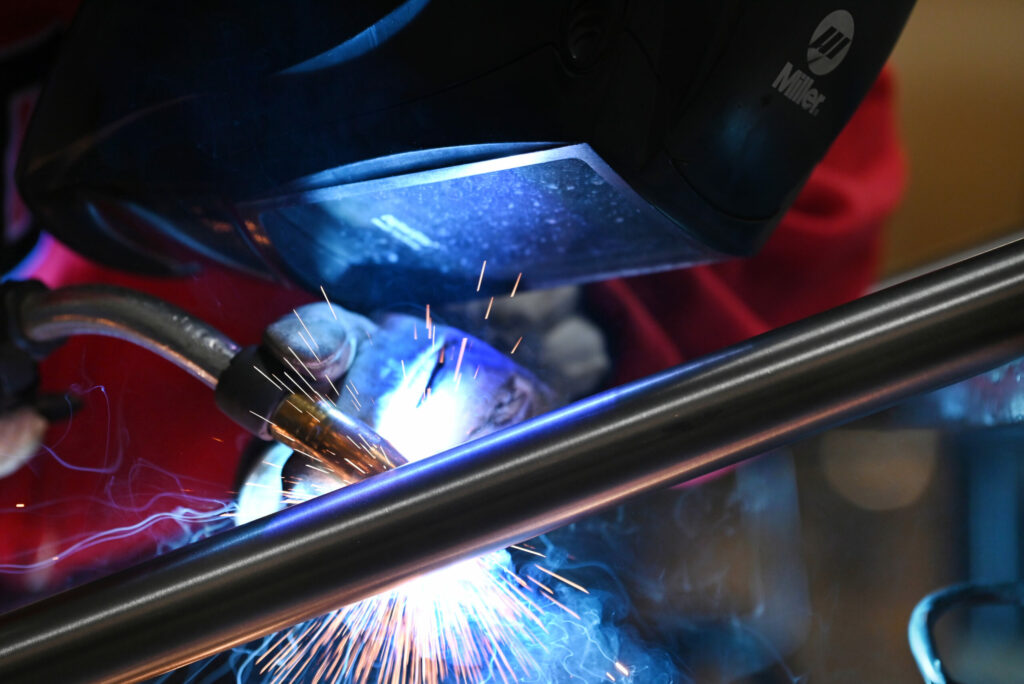
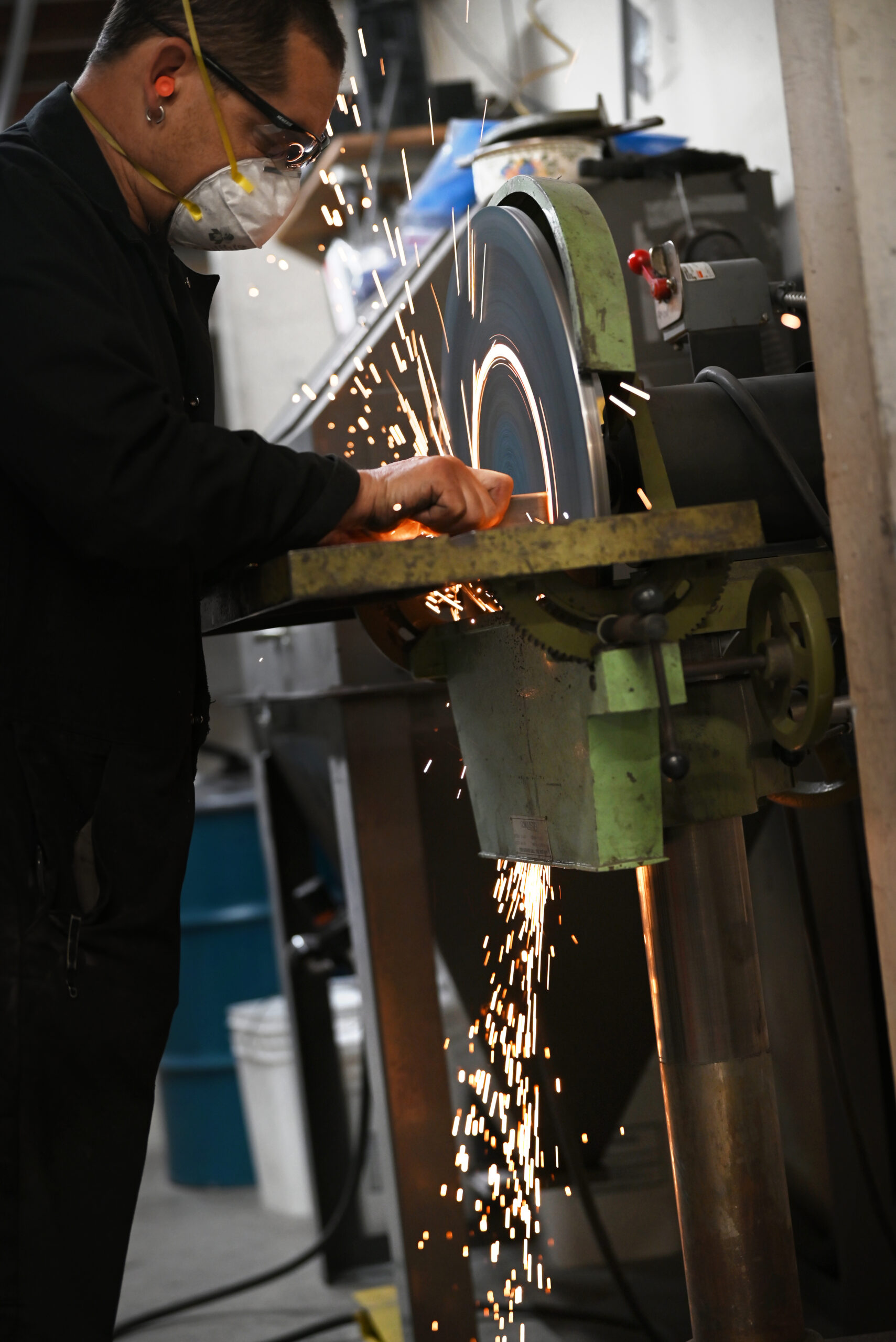
Winegrapes can’t just hang around. After they’re harvested, they need to be brought to the winery and processed as soon as possible; they’re not going to keep for a day or two until a broken piece of equipment can be brought back up and running.
The best mechanics have the mindset of trauma surgeons, explains Jeff Hinchliffe of Hanna Winery. “While you’re freaking out about your grapes, they remain almost uniformly nonplussed. They’re able to think a problem through dispassionately, despite the urgency of the situation.”
“I understand there’s a lot of pressure—harvest happens just once a year,” says Parker Borg, who answers the phone in the service department at Carlsen & Associates and is often at the receiving end of anxious calls from winemakers. Like a 911 operator or an emergency room triage nurse, Borg and his colleagues have learned to gauge the seriousness of the situation by the tone of the caller’s voice.
“Everyone calls in a panic,” says Tchamourian. “We have to do a quick assessment over the phone. A lot of times, the first question we ask is, do you have grapes? And if you don’t have grapes, when are you getting your grapes? And depending on what that answer is, is how we’re going to react to that emergency.” Often, a technician is able to talk through a fix over the phone.
If not, someone will be on the way to figure out the fastest solution to get things running. “It takes a good crew—people who are willing to put their personal lives aside and are willing to help,” says Tchamourian. “A lot of time, we get calls in the middle of the night, like ‘I know it’s 1 a.m., but are you available?’ Because the customers know we will always answer our phone.”
“It gets stressful for sure for us in the service department,” says Borg. A dirt bike racer and grandson of Carlsen’s founder, Borg “grew up wrenching” and started hanging out in the service shop when he was in his early teens. It’s the only job he’s ever had.
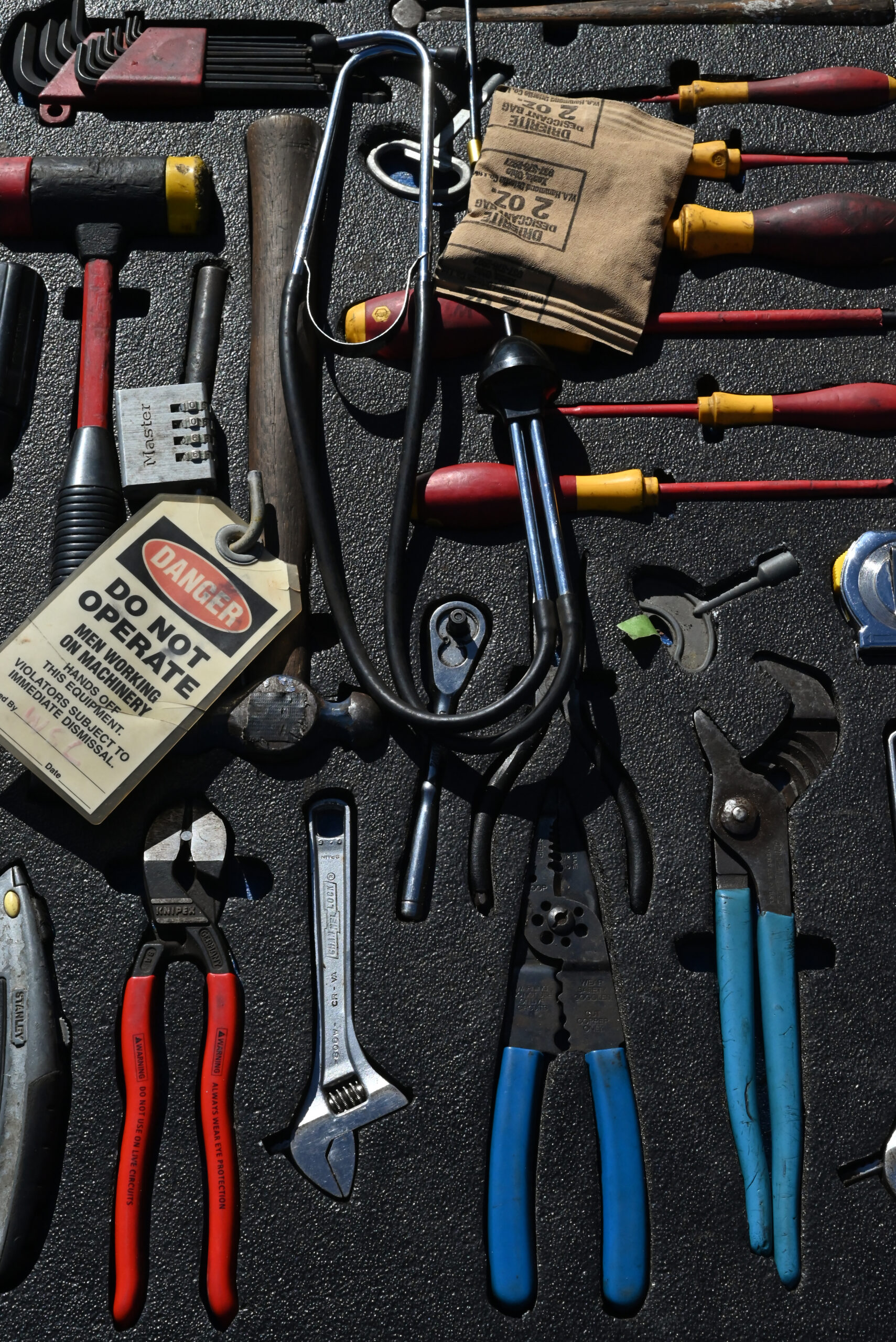
Harvest season is incredibly hard on winery equipment, including tractors, forklifts, presses, pumps, conveyers, and crusher-destemmers—complicated, medievallooking machines with stainless steel barrels and rotating paddles that separate the berries and crush them into juice, spitting off the unwanted stems through a side chute. It gets stuck quite a bit.
Many of these machines are stored away eight or nine months of the year, until August rolls around. Then it’s go time. “Once the winemakers start getting their grapes in, it starts really picking up,” says Tchamourian. “All the people who never fired up their equipment all year, or never checked anything, they’re the ones calling us, saying, ‘We need you here, we need you here now.’”
Technicians encourage winemakers to have them come out for a pre-harvest service, to give equipment the once-over. Even better, says Tchamourian, is to make sure all of the equipment is carefully cleaned, oiled, and serviced at the end of the previous year’s harvest, before it’s stored away.
The crushpad environment is unforgiving, after all. Grape juice and water aren’t great for electrical machinery, and neither is all the sun and the heat. Sticky grape skins and tiny grapeseeds find their way into the tiniest of cracks, and grape stems seem perfectly designed to jam up the destemmers. Moisture condenses inside electrical panels, corrosion wears away housings or controls. A small rock mixed in with the fruit and carried up the conveyer can wreak all kinds of havoc, as can a wrench left behind inside a press. People are tired. Mistakes happen.
And yet, Tchamourian says the technicians are usually able to get things up again the same day. “I’ve literally zip-tied a control box to a piece of equipment just to make it go, until I could get back out there to fix it properly. Emergency methods—it’s not ideal. But when you’ve got 10 or 20 tons lined up, you have to, especially with what grapes are costing this year. It’s crazy. It’s thousands of dollars.”
In the rare cases where they can’t fix it, they’re often able to sub it out temporarily with another piece of equipment. “The one thing that stumps us is parts,” he explains. “If the part isn’t available or it’s an older machine, then we have to think on the fly to fabricate it or replace it with something else.”
Smart winemakers know it’s good to stay on the good side of the ones who keep their gear up and running, whether it’s a tractor repairperson, a press technician, or an equipment manufacturer. “There are so many wheels that turn this engine,” says winemaker Ellie Ceja of Heirs of My Dream, a winery and custom crush operation in Sonoma.
Morgan Twain-Peterson, winemaker at Bedrock Wine Co. in Sonoma, is “very cognizant” of the many who play a role in getting a bottle of wine into a customer’s hands. He’s worked for years with Alejandro Arellano, a self-taught mechanic (who also plays mariachi on the side, though not so much during harvest). Arellano grew up in the vineyards, the son of a local foreman. When a tractor is down during harvest, he’ll get it up and running to make sure the middle-of-the-night picks don’t slow down, even for a few minutes.
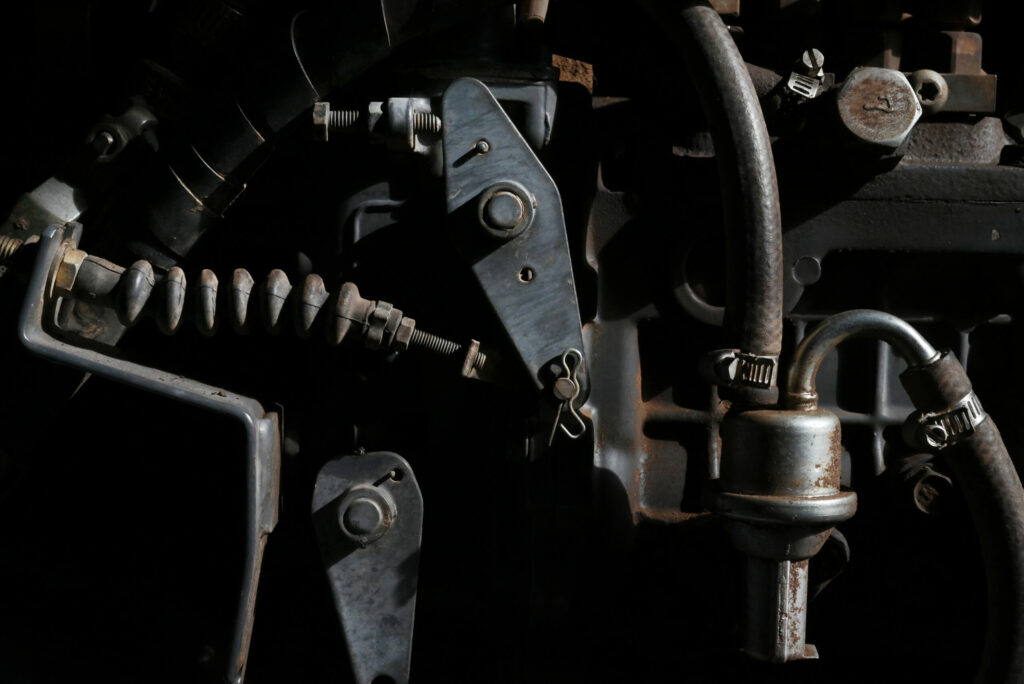
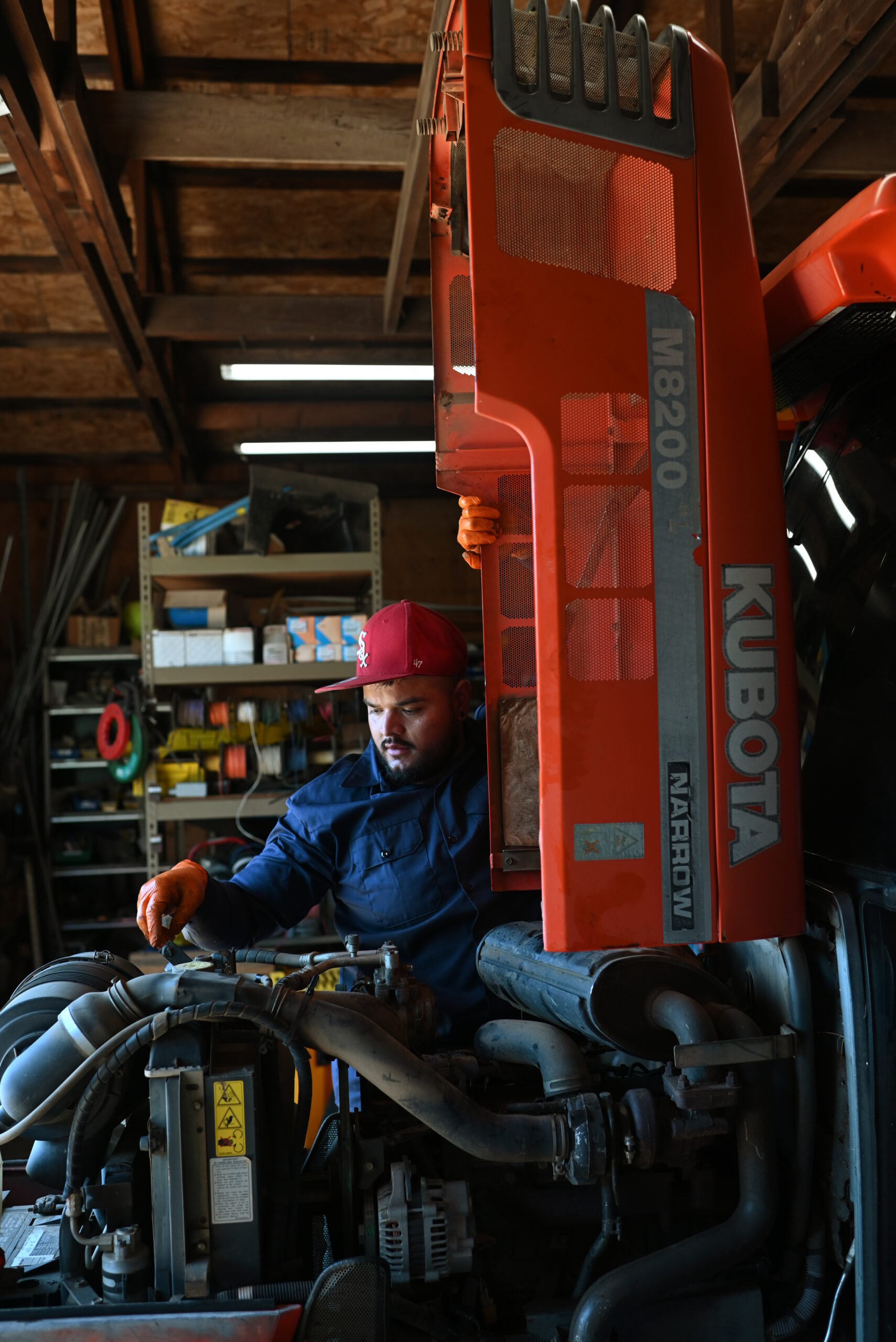
But how do you thank the person who’s saved your harvest? A nice bottle of wine left on the seat of the truck, sure. A home-cooked meal would be nice, or even a few moments to sit down with a cold beer. Unfortunately, these professionals don’t have time for that—they’ve got other service calls to make, a family to get home to. Leo Artuori, who has worked at Carlsen for 21 years, says being able to help someone out at a stressful time keeps him going through the season. “You’re the hero. When everyone’s waiting on you and you fix that machine, you walk away feeling 10 feet tall.”
The post These Local Harvest Heroes Save the Day When Winery Equipment Fails appeared first on Sonoma Magazine.
]]>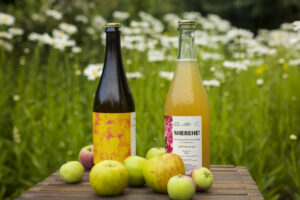
A renegade band of locals are experimenting with cutting-edge co-ferments, mixing apples, grapes and other botanicals for unique drinks.
The post ‘Mad Scientists’ in Sonoma Are Creating New Types of Alcoholic Beverages appeared first on Sonoma Magazine.
]]>


































Winemaker Marreya Bailey has an affectionate name for the otherworldly libations she concocts with apples, wild hybrid grapes, pears, quince and honey, often infused with botanicals such as jasmine and lemon verbena.
“I call them my creatures,” she says with a cheeky smile. “They all have their own personalities and they’re ever-evolving and transforming. They literally are my children.”
Walking through lush apple and pear orchards at EARTHseed Farm in Sebastopol, Bailey is sizing up fruit for the upcoming harvest. The wooden sign at the entrance—“Welcome Black to the Land”—sums up everything you need to know about where she stands.
The first Afro-Indigenous farm in Sonoma County is where Bailey harvests Asian pears and apples, tapping into her Ethiopian roots to make a drink inspired by tej , the popular Ethiopian honey wine. The result is Sherehe! (Swahili for “celebration”), a sparkling wine co-fermented with Asian pears, apples, and raw wildflower honey, and infused with foraged pink jasmine flowers.
On a hot day, Sherehe might be the perfect picnic wine, or cider, or something entirely all its own, unlike any elixir most people have ever tasted.
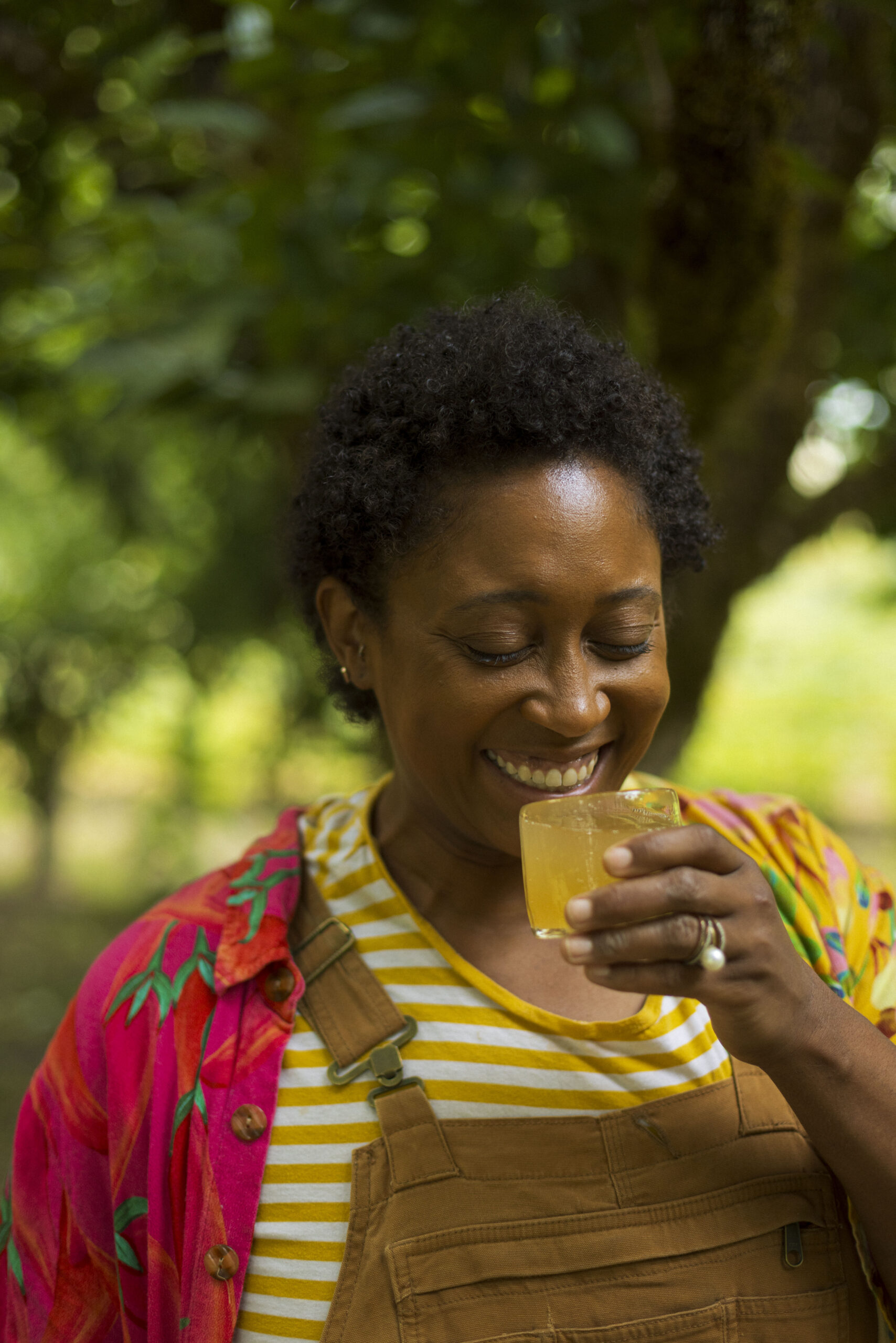
Marreya Bailey of Mad Marvlus uses apples, grapes, and other botanicals to make fermented alcoholic beverages that are neither strictly wine nor cider, but the best of both. (Conor Hagen)
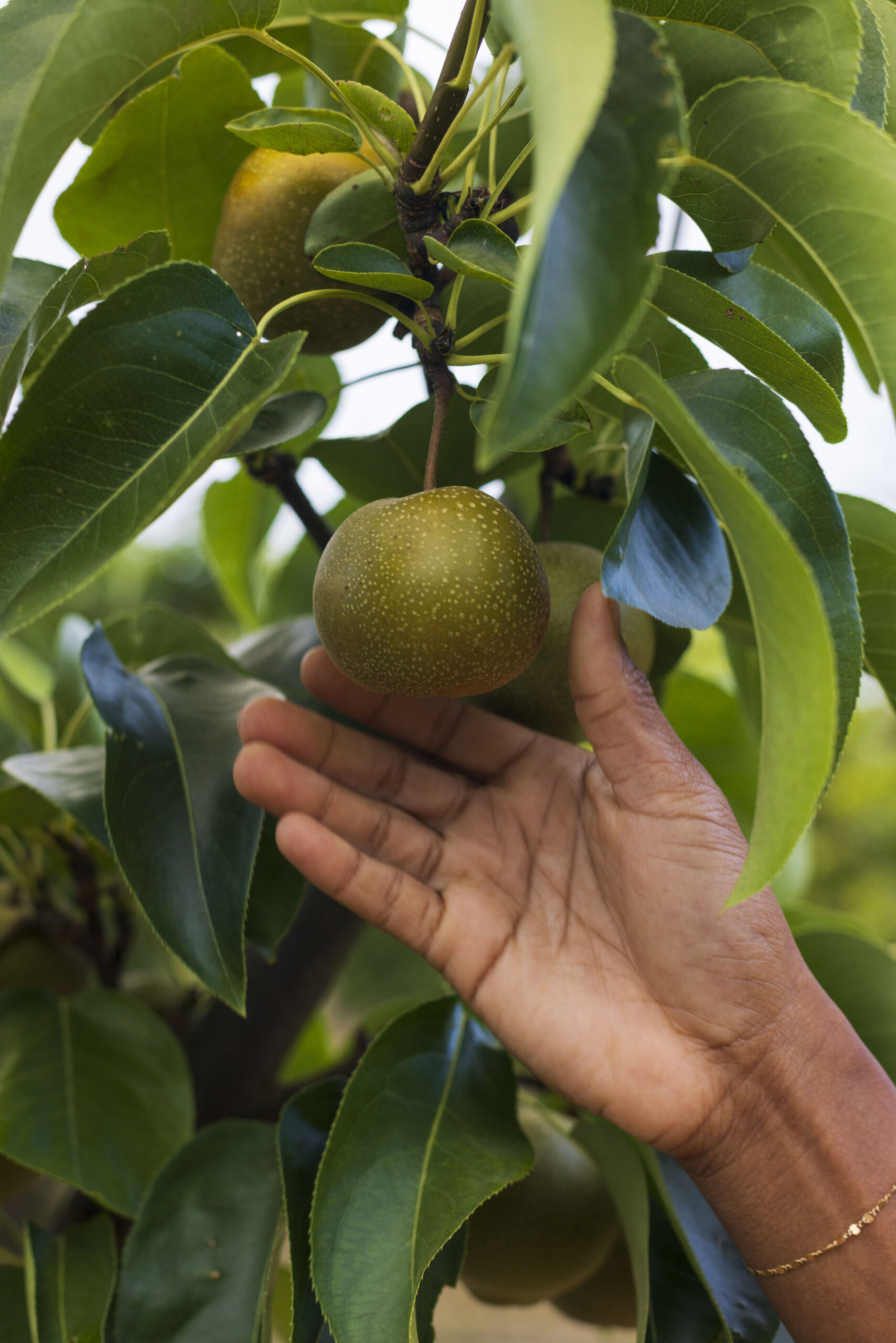
Bailey is part of a renegade band of local co-fermenters pushing the boundaries of what it means to make wine and cider today. Luther Burbank would be proud of this new batch of rule breakers, who refuse to see Sonoma County as a sprawling monoculture but instead a place where the bounty of the county thrives and everything is welcome in the fermentation bin.
At Eye Cyder, Eric Sussman prizes fruits with a similar ripening window, whether it’s wild blackberries with Gravenstein apples or quince with pineapple guava. “The cool thing about these seasonal co-ferments is they’re actually happening at the same time and we’re harvesting them together,” he says. Other times, he’ll mix seasons, like fall and spring, spiking apple juice with green redwood tips.
Likewise, Matt Niess at North American Press loves co-fermenting wild California grapes with Gravenstein apples for his Wildcard cider. Aaron Brown and Colin Blackshear at Bardos Cider coaxed their Saint Cabora into being by pouring aged cider over leftover grape pomace. At Tilted Shed, husband-and-wife team Scott Heath and Ellen Cavalli blend apples with elderberries and blackberries. And Chenoa Ashton-Lewis and Will Basanta at Ashanta are big fans of co-fermenting elderberries with French Colombard grapes or taking abandoned Oakland feijoa (pineapple guava) for a trip to the country and marrying them with Occidental apples.
With harvest beckoning, Bailey strolls the 14-acre, solar-powered EARTHseed Farm with manager Brent Walker, who points out that many of the 4,000 fruit trees are unlabeled varieties, often decoded by taste.
The last time she harvested here, Bailey walked from tree to tree, biting into pear after pear, looking for the right balance of tannins, aromatics, and flavors. With 30 varieties of Asian pears to choose from, she’s thinking about making a sparkling pear cider (aka perry) this year.
Sometimes she goes by feeling as much as taste: “It’s a matter of getting in touch with the ancestors, and imagining how things were before colonization,” she says.
Walker lights up when he hears this. “Being a farmer, it makes me so happy to hear what people are doing with the fruit and the connection they have to it,” he says.
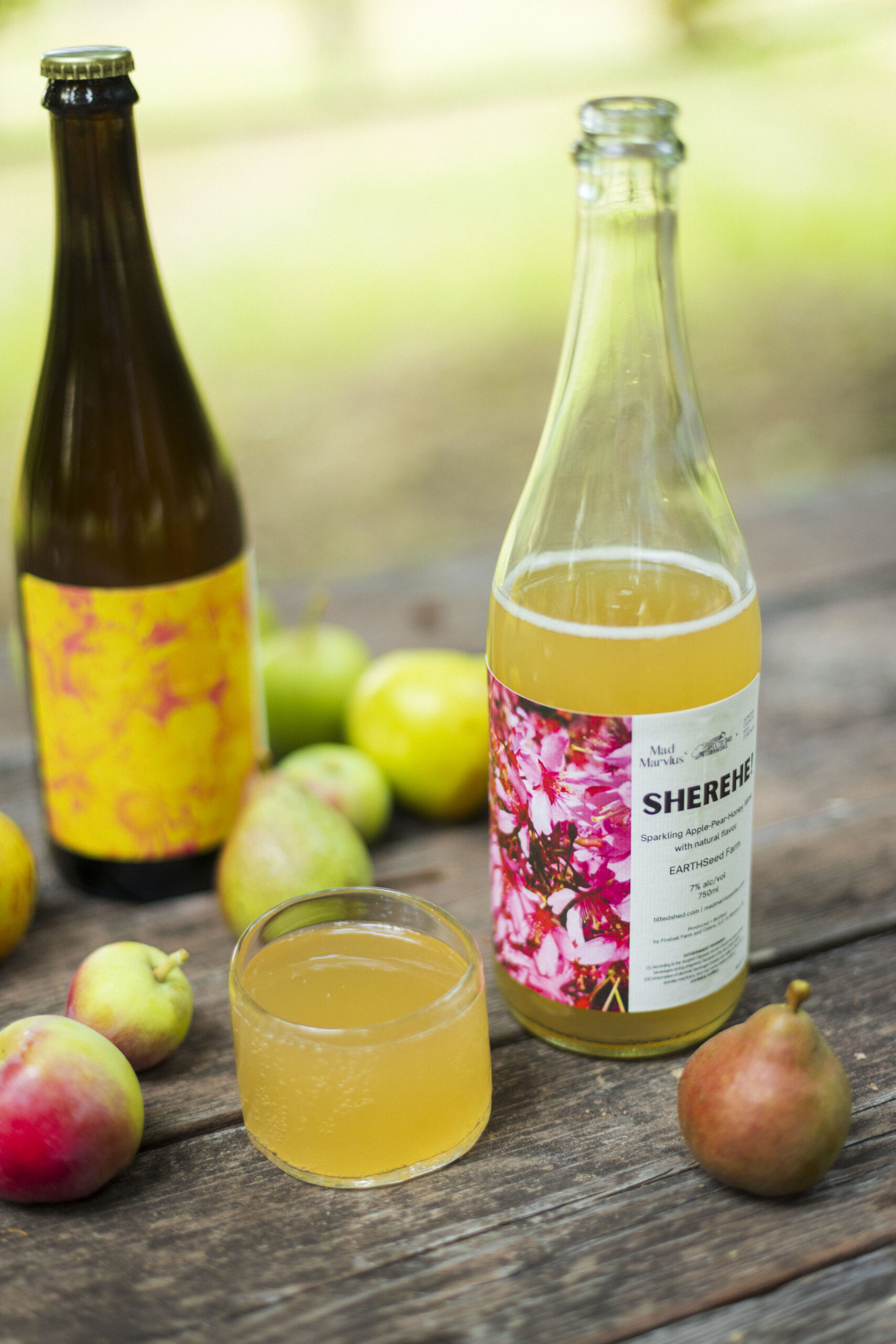
Marreya Bailey’s Sherehe! co-ferment was insipired by tej, the fermented honey wine from Ethiopia. It includes Asian pears, apples, honey, and jasmine from EARTHSeed Farm in Sebastopol. (Conor Hagen)
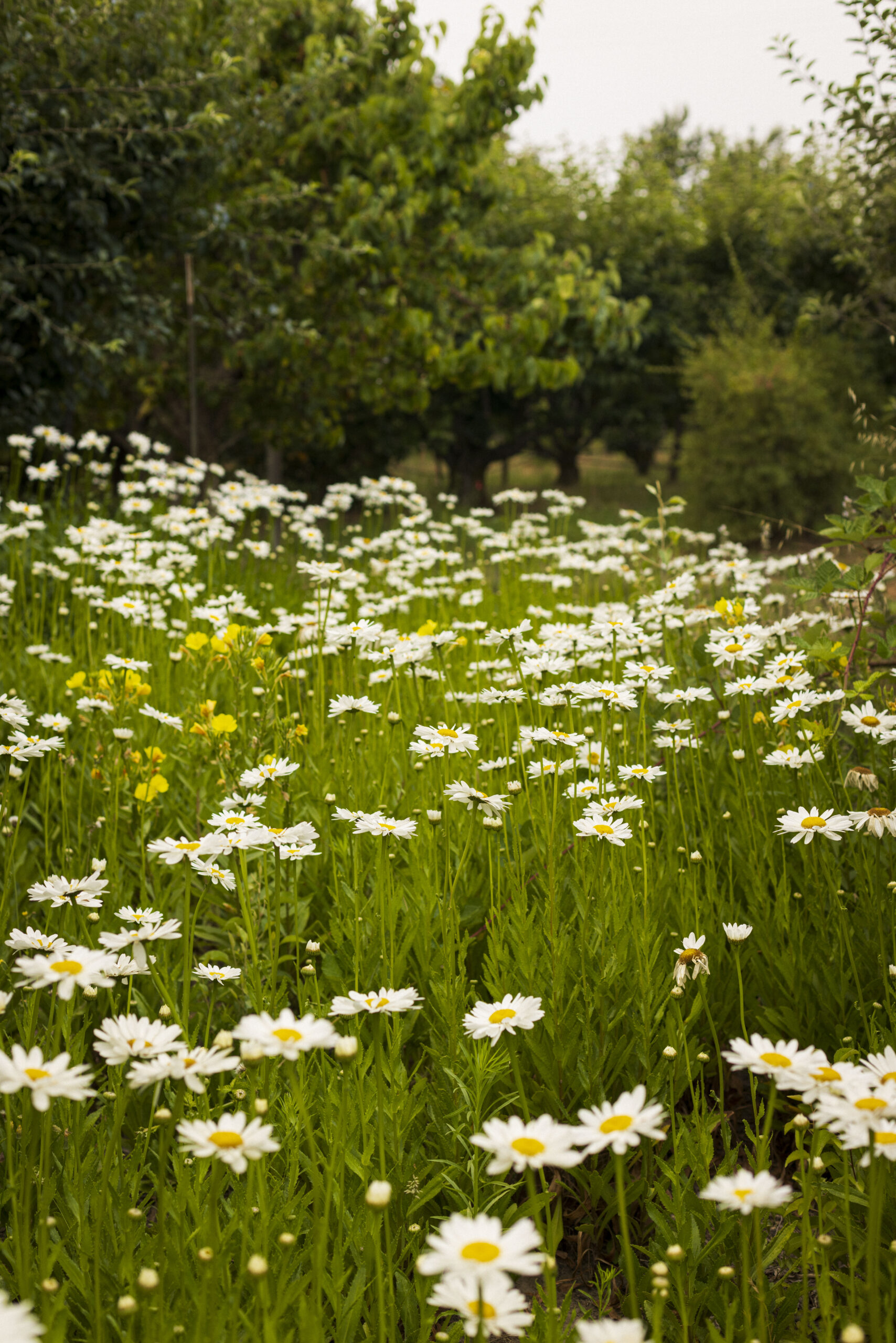
Everything Bailey makes is organic, naturally fermented, unfined, and unfiltered. She only adds a minimal amount of sulfur if absolutely needed. Equal parts science and art, co-fermenting appeals to her love of puzzles and chemistry experiments.
“I love challenges—and that’s the greatest part of working with underrepresented fruit like this,” she says.
It’s a far cry from her past life, toiling at a desk for over a decade in corporate human resources departments. Realizing her soul wasn’t satisfied, she moonlighted on weekends, working as a wine seller and cheesemonger. Born in Wisconsin, she grew up in Minnesota and lived in Georgia, North Dakota, and Ohio before moving out to California in 2020 to work as a harvest intern with natural wine guru Martha Stoumen.
Armed with a bachelor’s degree in forensic anthropology and a master’s degree in psychology, she was now a cellar rat, working long hours to breathe life into other people’s wines. But she took notes and learned every step of the process.
Hooked after the Sonoma County harvest with Stoumen, she lit out for Vermont to work a later harvest at ZAFA Wines. In 2021, she enrolled in the Two Eighty Project’s Apprenticeship Program, a six-month endeavor that targets underrepresented communities often excluded from the wine industry, partnering with winemaker Steve Matthiasson and UC Davis at Alemany Farm in San Francisco.

Wine- and cider-makers exploring co-fermented beverages often like to combine fruits and botanicals that ripen in the same season.
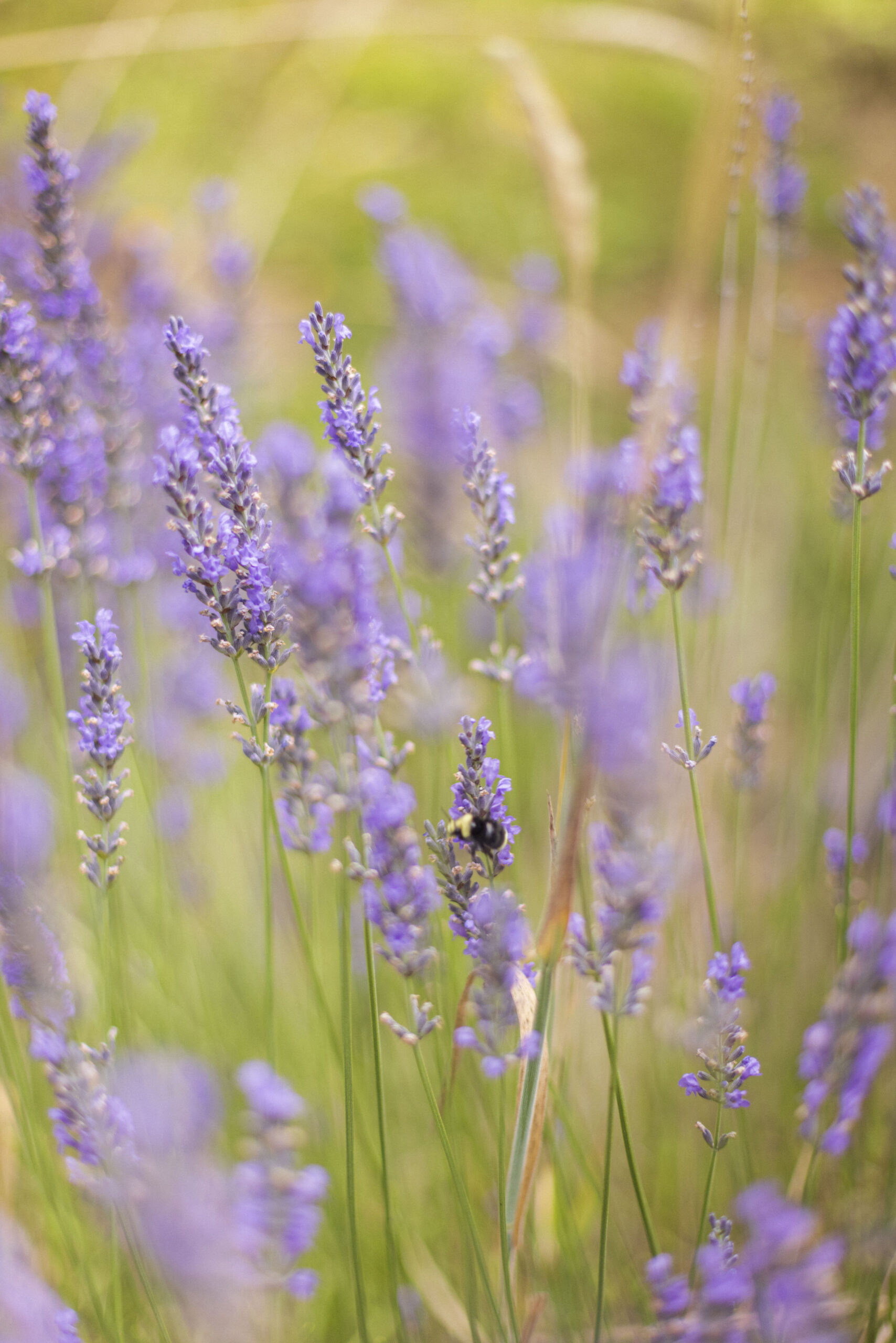
After paying her dues as an intern, Bailey drew up a business plan and pitch deck. Starting with $25,000 from investors, she founded Mad Marvlus, combining her “Mad” scientist tendencies with the nickname “Marvlus” that an encouraging friend gave her years ago.
“I tell people when they first meet me, ‘I’m a scientific mind with an artistic heart.’ This is art for me, and I just love sharing an extension of myself. Mad Marvlus is an extension of me. It’s literally my alter-ego.”
It’s a story she’s proud to tell. Hoping to bring diversity in taste and race to the Bay Area winemaking scene, she’s done her research. At EARTHseed, when she says, “I feel like I can talk to my ancestors here,” she’s conscious of standing on the shoulders of early BIPOC cider makers, like Jupiter Evans, an enslaved person owned by Thomas Jefferson, who pioneered cider making in America in the 1700s. She also knows less than 1 percent of the more than 11,000 wineries in the U.S. are Black-owned or have a Black winemaker.
“I grew up in the Midwest, so I’m used to being the only Black person in the classroom,” she says. “I’m used to it, and I can handle that, but it shouldn’t be like that. We need to diversify this area.”
When it comes to raising debt-free capital, “We know for women in this industry it’s already challenging,” she says. “It’s even more challenging for women who look like me.”
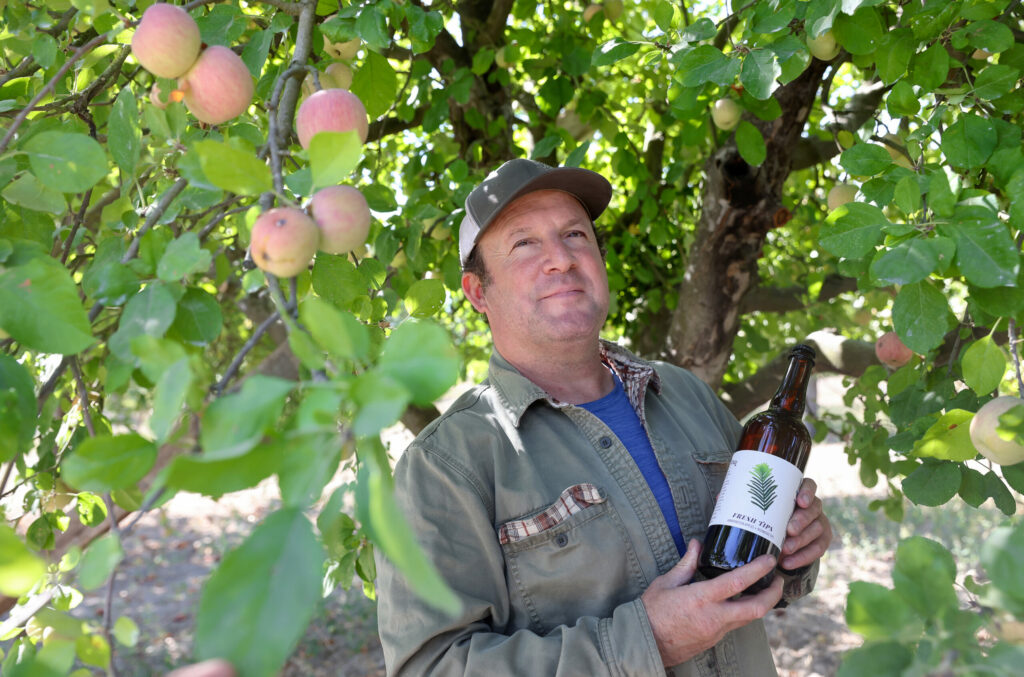
Eric Sussman is the wine grower and proprietor of Radio-Coteau, which produces cider under the Eye Cyder label. His coferments include ingredients like apples, grapes, plums, citrus peel, and fir tips. (Christopher Chung)
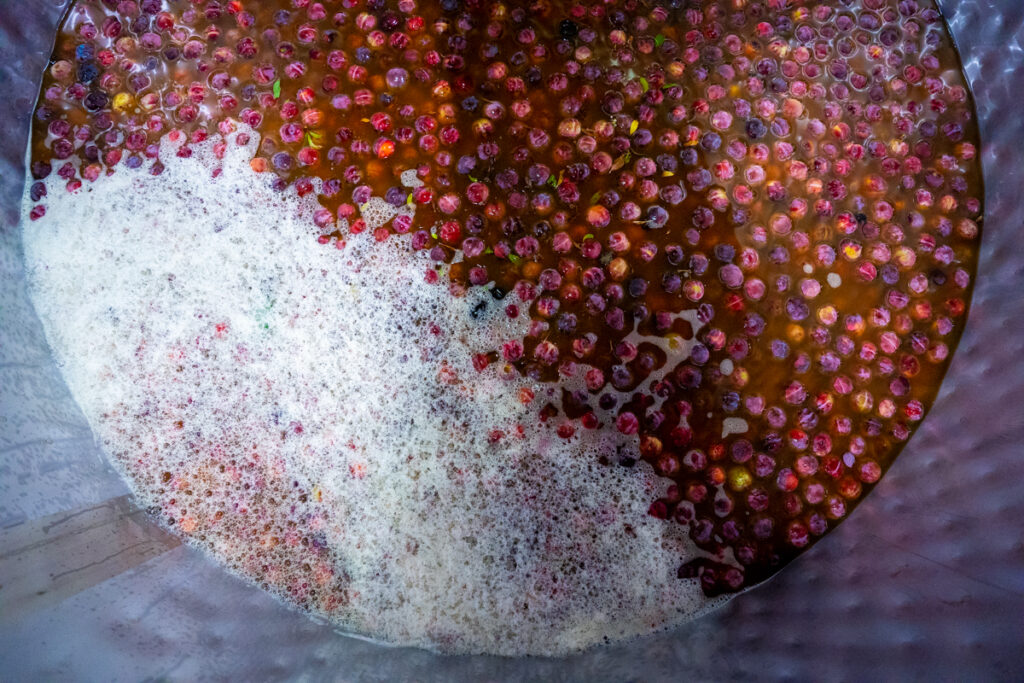
After walking the land, Bailey finds a seat in the shade and uncorks a few of her delectable creatures. There’s Pomme Quincy, a co-ferment with two varieties of quince from Filoli Farms in San Mateo and an assortment of apples—Arkansas Black, Black Twig, Sierra Beauty, Rome, Wickson Crab—from Mendocino. Because she likes to mix things up, she infused it with chamomile and lemon verbena, literally “tea-bagging it” in the barrel. Named for her grandmother, Janet D Lyte is a “new age rosé” with Newtown Pippin and Rhode Island Greening apple juice rehydrating once-pressed grapes. And there’s the apple-pear-honey sparkling Sherehe!, which contains only 7 percent alcohol.
As Bailey pours and tells stories, her love of wine is infectious. The phrase “bone-ass dry” is her favorite way to describe her co-fermentation style, something she will repeat a handful of times—almost as many times as she says “porch pounder” or “glou glou” to describe relatively low-alcoholic beverages that go down easy like lemonade.
Part of the appeal is working with more climate-friendly fruit that was here long before Europeans introduced Chardonnay and Pinot Noir. “That’s not where the future is going,” she says. “We’re going through a revival right now. We need to come back to basics and look at, how did the original people, who lived here before it was colonized, make wine or their own version of fermented beverages? They were working off what the land was providing them.”
Tipped off by a friend who knew the landowner’s daughter, Bailey stumbled on a feral, dry-farmed field blend outside Sacramento, mixed with wild, red hybrid grapes crossed with native Vitis californica grapes and abandoned Alicante Bouschet grapes. Surrounded by blackberry brambles, many of the vines were climbing trees like kudzu. Picking the grapes for free, she used them in her Mad Maxine red blend and then rehydrated the skins in her Janet D Lyte.
Last year, she co-fermented pineapple guava with rehydrated Ribolla Gialla grapeskins, adding in niitaka Asian pears, quince, and apples. It was a collaboration with Colombian winemaker Sabrina Tamayo, a fellow Two Eighty Project graduate who owns Ruby Blanca Wines.
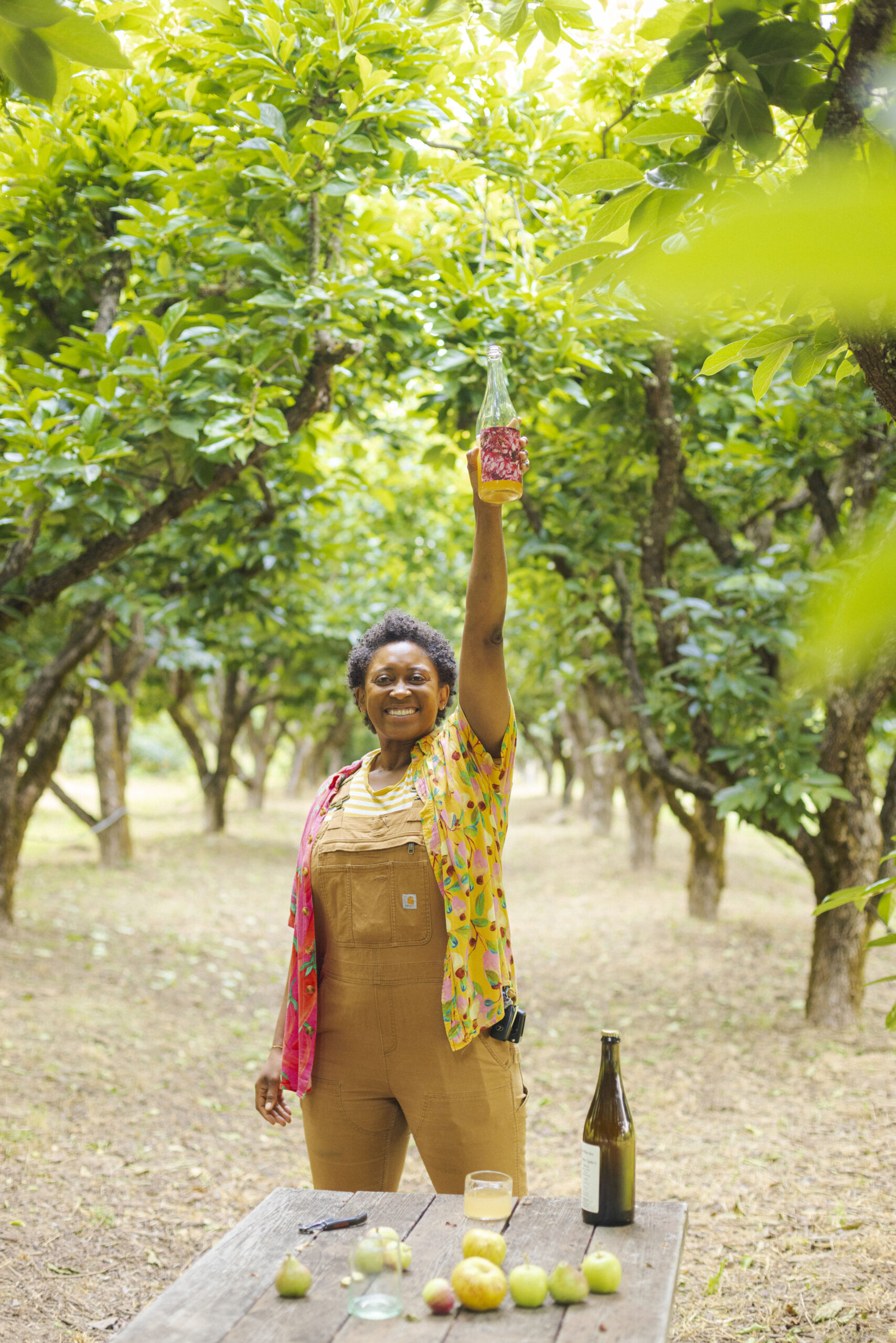
Always looking for more botanicals and herbs to infuse, Bailey recently found a source for hibiscus flowers. She’s even toying with an infusion of butterfly pea flowers, which impart no flavor, but turn any liquid a magical blue. She’s also planning to release a non-alcoholic Muscat wine soon.
“Crazy, to me, would be creating something non-alcoholic and you’re blending more than co-fermenting,” she says. “You’re blending different fruits like watermelon, pineapple guava, and rare apples like Kingston Blacks.”
As she’s leaving EARTHSeed, Bailey runs across a mulberry tree that looks like it’s been grafted with other berries. She plucks a mulberry and tastes it. Not quite ripe, it hints at how sweet it will become. You can almost see the wheels turning in her head as she pulls out her phone and takes a photo for future reference.
“Berries are probably next on my list of things to work with,” she says.
In other words, it won’t be long until they’re swimming around in a tank with other fruits, a welcome addition to her evergrowing family of “creatures.”
More from the cutting edge of co-fermentation
Along with eclectic palates and little regard for rules, the most common thread Sonoma County co-fermenters share is a low- to no-intervention philosophy, which often means wild fermentation, no filtering or fining, and working with organic and biodynamic fruit that is often dry-farmed and occasionally foraged.
“The Burgundians have this saying, ‘The hardest thing to do is nothing at all,’” says Eye Cyder owner Eric Sussman. “That happens when you understand how these fermentations happen and how the fruit reacts. With the apples, it’s much less analytical and more sensorial—smelling and tasting to figure out timing.”
Here’s a look at a few Sonoma County co-fermenters who will be sensing their way through this year’s harvest.
Eye Cyder
Owner Eric Sussman, who also owns Radio-Coteau winery, freely admits the winery is the cash cow and the cidery is the passion project. But follow the passion and you’ll find a mouthwatering array of farm-to-lab creations.
The Oro Blanco blends citrus peels with hops and apples. The Skins and Stones coferment is made with Satsuma plums and Gravenstein apples. But quite possibly the most simple and unusual is Fresh Tips, a cider infused with green redwood tips and then barrel aged.
North American Press
Consumed by a passion for indigenous grapes, Matt Niess makes his Wildcard co-ferment with wild native grapes picked from around California and organic Sonoma County Gravensteins.
And remember the old adage, “It takes a lot of beer to make good wine”? Well, maybe it applies to co-ferments as well. In an Instagram post, Niess points out he had to borrow extra bench cappers from Moonlight Brewing while bottling his ’22 Wildcard vintage.
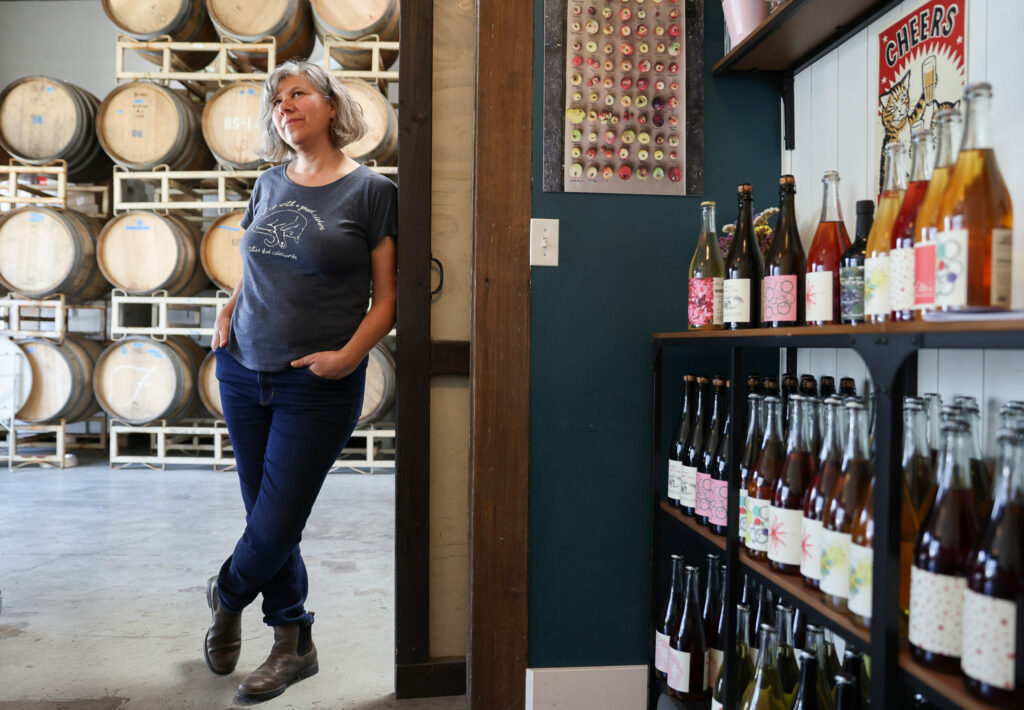
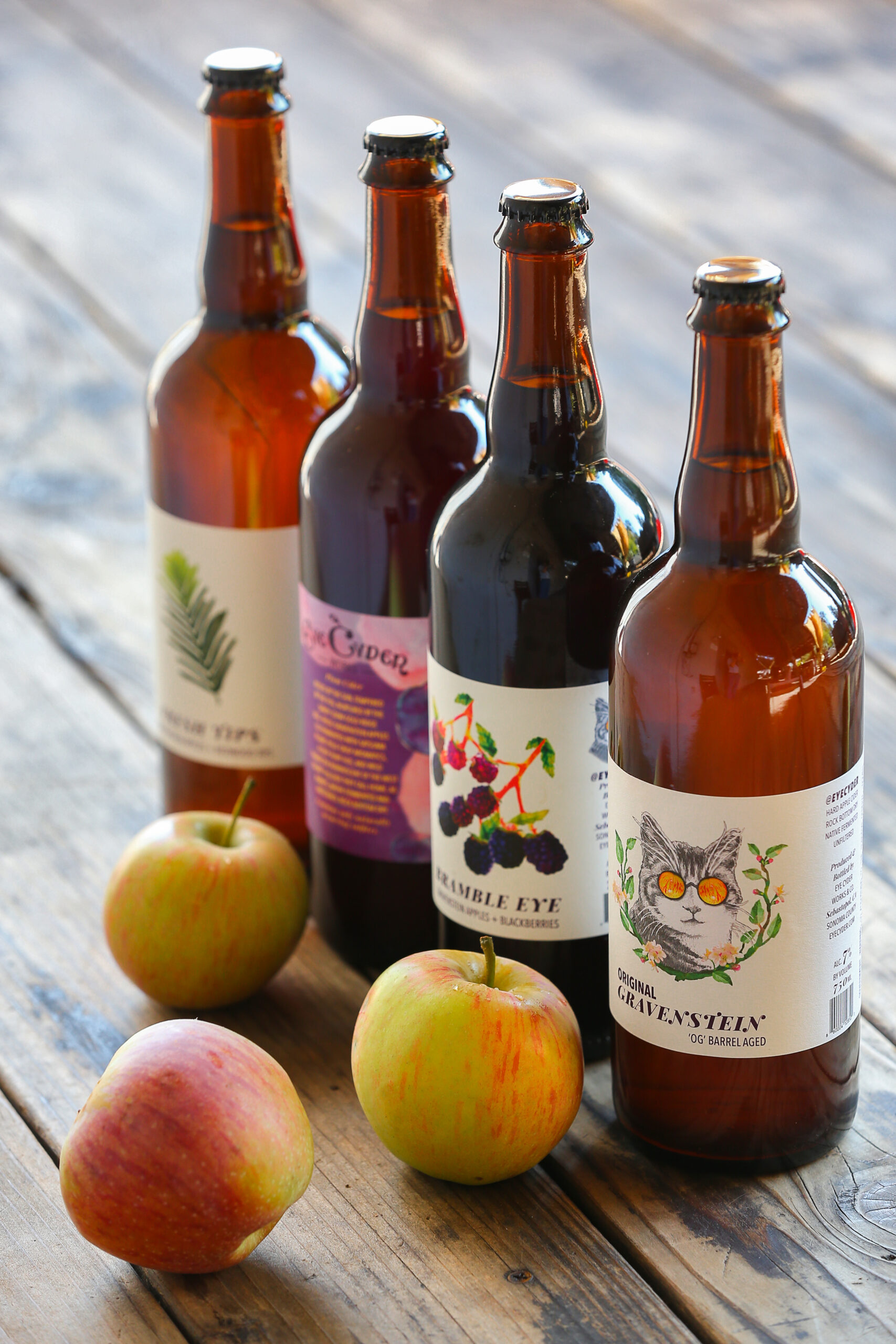
Tilted Shed Ciderworks
Owners Scott Heath and Ellen Cavalli like to call their coferments “foodshed ferments.” It goes back to the classic idea that “things that grow together go together.”
Their Loves Labor cider may be the best example, combining wild blackberries handpicked at their Sebastopol farm, with native elderberries foraged near the Russian River and organic dry-farmed Gravenstein apples from Vulture Hill Orchard.
7761 Bell Rd., Windsor. tiltedshed.com
Ashanta
Filmmakers Chenoa Ashton-Lewis and Will Basanta got a chance to experiment with winemaking in 2019 when they salvaged what was left of Ashton-Lewis’s grandparents’ Glen Ellen vineyard, which had been partially burned in the Nuns fire.
Since then, they’ve sourced fruit all over the state, foraging elderberries in the San Gabriel Mountains, finding derelict feijoa in an Oakland park and picking abandoned vines near Dodger Stadium in L.A.
Whether it’s Gravensteins and Carignan (Sidra ’22) or elderberries and French Colombard (Brutal ’21), they’re throwing paint against the wall and seeing what sticks. So far, it’s working.
Bardos Cider
Two filmmakers (notice a trend here?) on a quest to rescue abandoned apple orchards and celebrate them with cider, Aaron Brown and Colin Blackshear are the team behind this experimental operation.
Paying homage to a healer known as “The Mexican Joan of Arc,” their Saint Cabora “apple and grape wine” breathes new life into recycled grape pomace from Bucklin Old Hill Ranch and Bedrock wineries.
Mad Marvlus
Starting small with less than 200 cases of Sherehe!, Pomme Quincy, Janet D Lyte, and the Mad Maxine red blend in 2021, Marreya Bailey is continuing to grow and experiment this harvest.
Look for new releases of a non-alcoholic Muscat and a coferment collaboration with Ribolla Gialla grapeskins rehydrated with the juice of niitaka Asian pears, quince, and apples. Bailey is also fundraising for a future winery/ cider co-op called the Bathing Collective.
The post ‘Mad Scientists’ in Sonoma Are Creating New Types of Alcoholic Beverages appeared first on Sonoma Magazine.
]]>